“Study the past if you would define the future” – Confucius
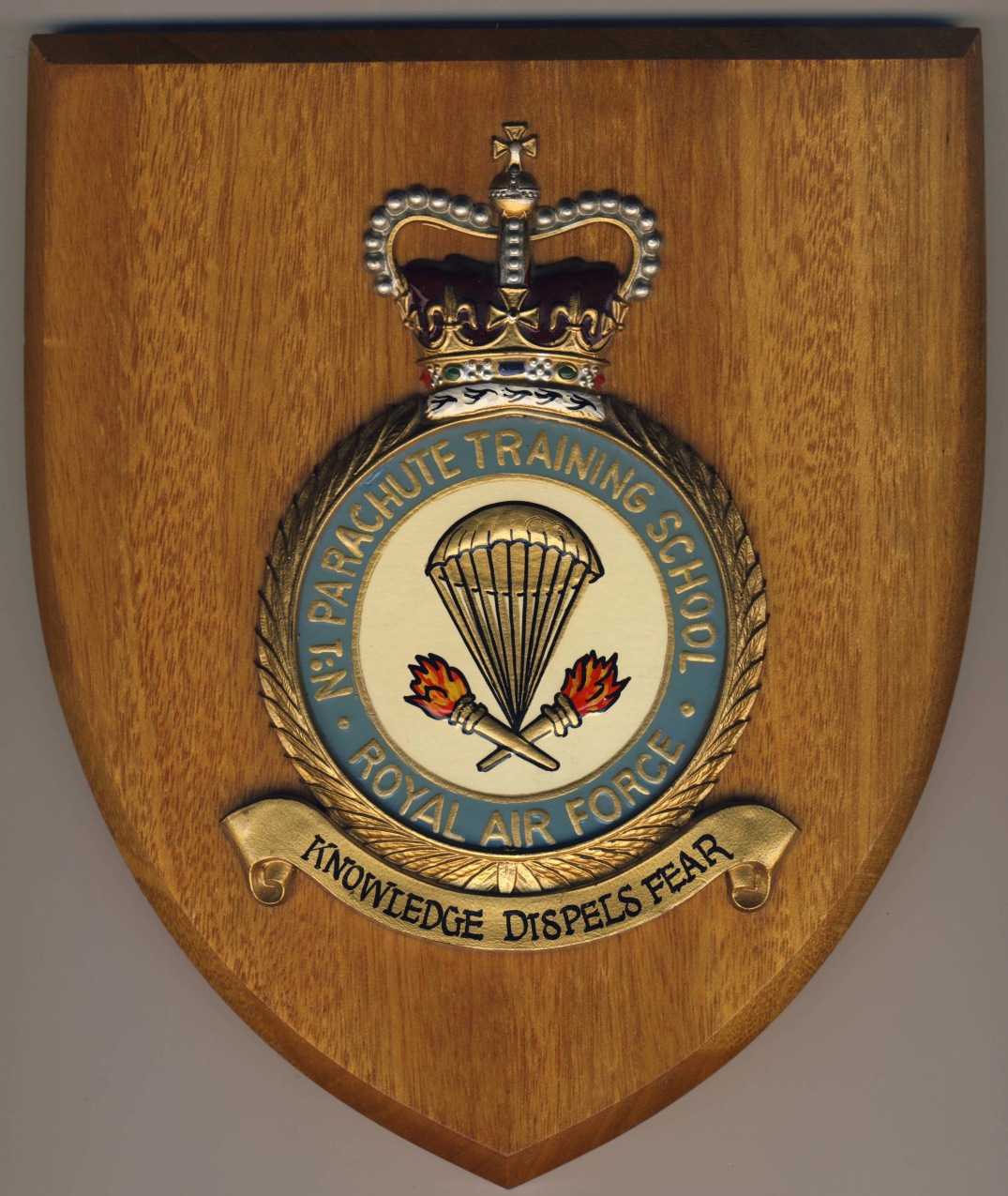
In the beginning…
Prelude to Glory, 1941 – 1945

This book, the definitive history of the early days, was written by Group Captain Maurice Newnham OBE, DFC and was published by Sampson Low (UK) in 1945. Group Captain Newnham took over command of No 1 PTS in May 1941 and held the post until the end of the war. In my time,(1956-1977) this book was required reading for all u/t PJIs. The photographs in this section are all taken from this publication.
RAF Ringway 1940 – 1946
April 1941 – Winston Churchill Visit to Ringway


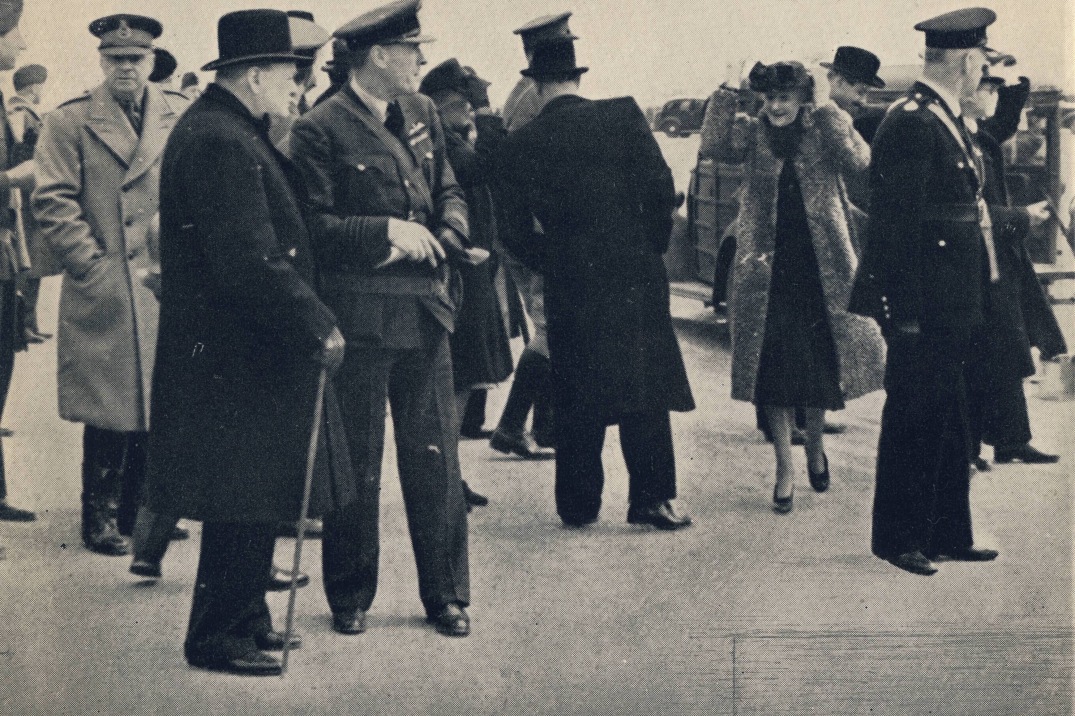

Ringway Training Hangar
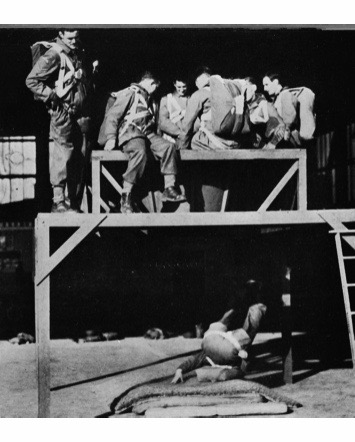
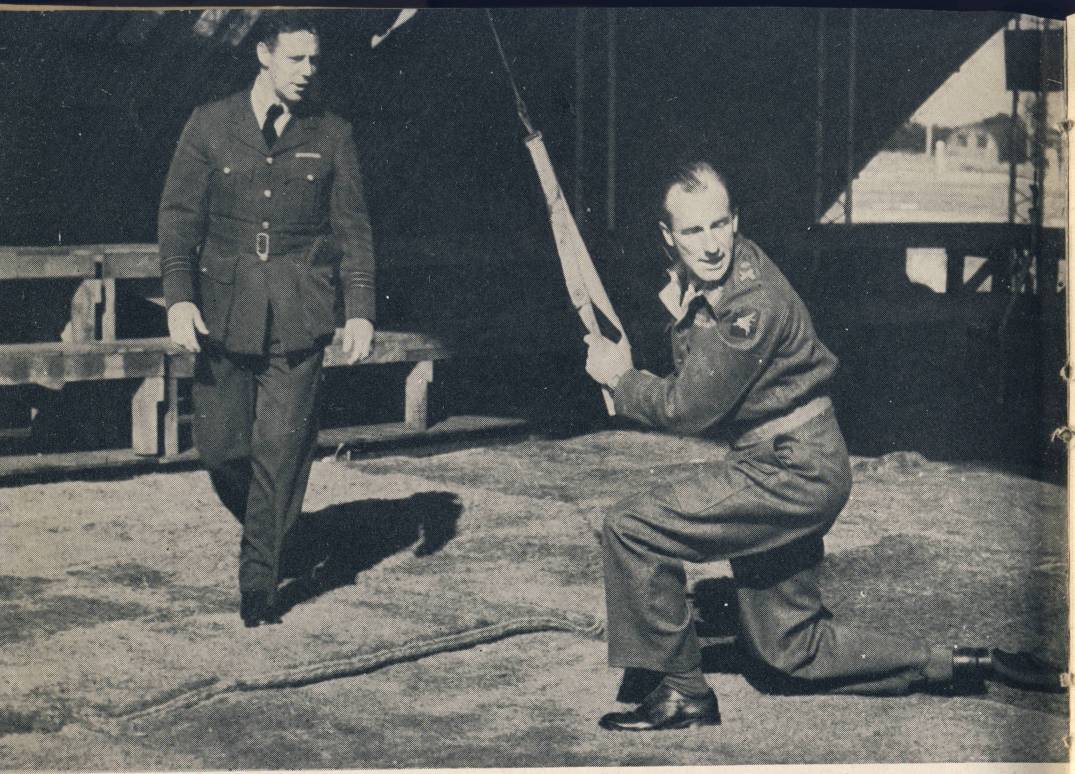
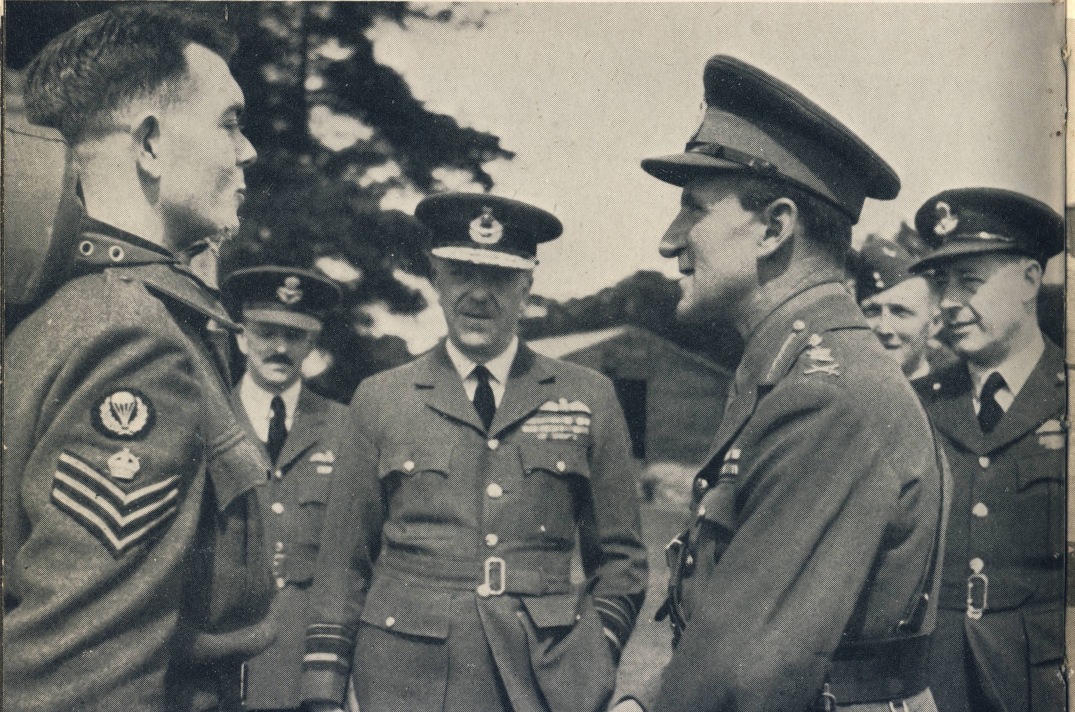

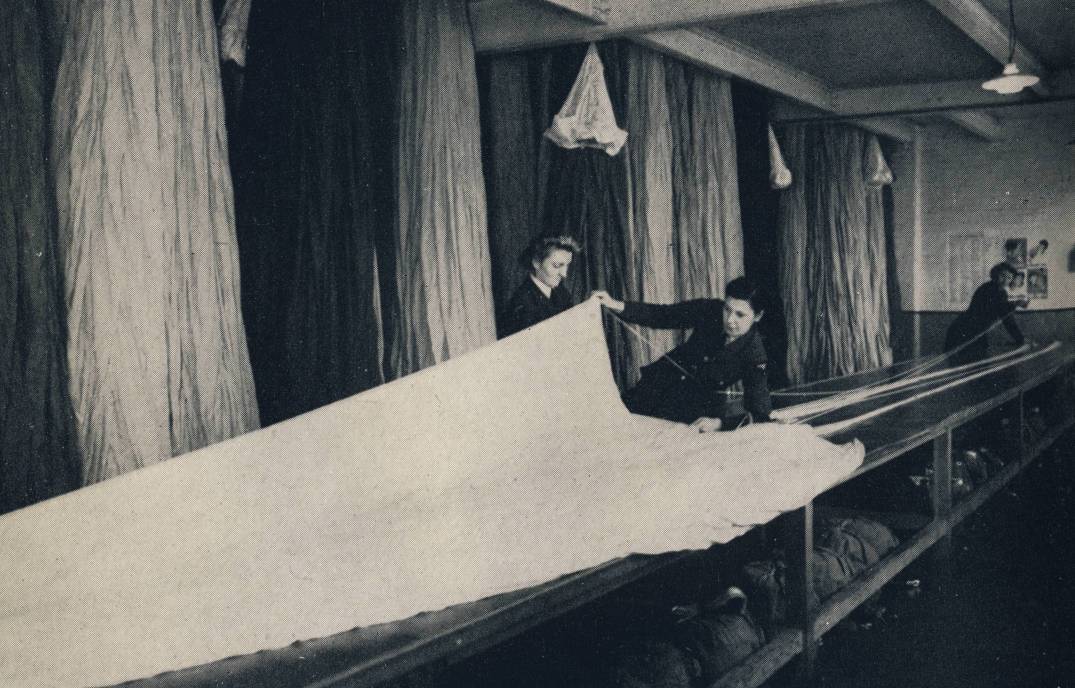
Tatton Park Drop Zone
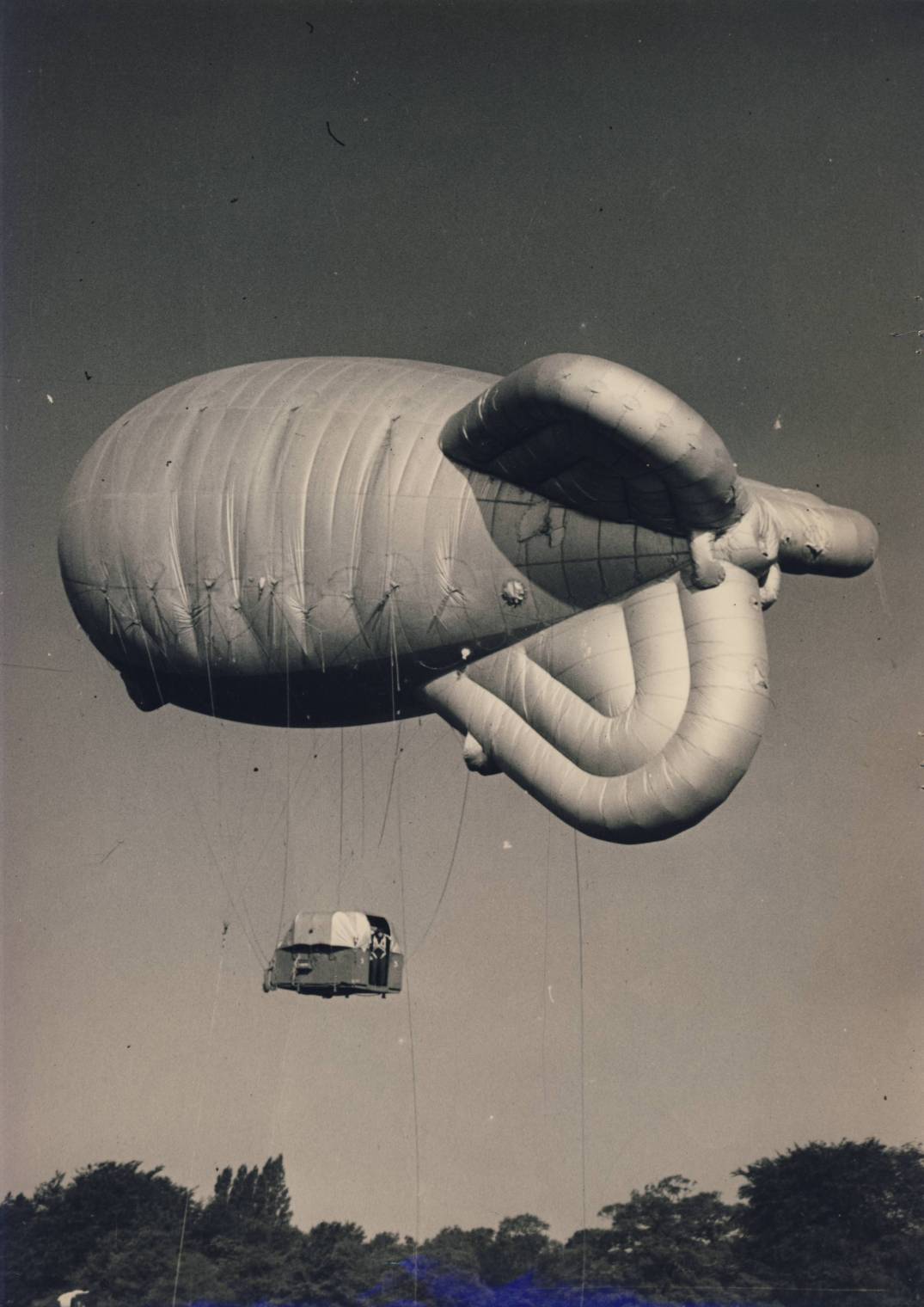


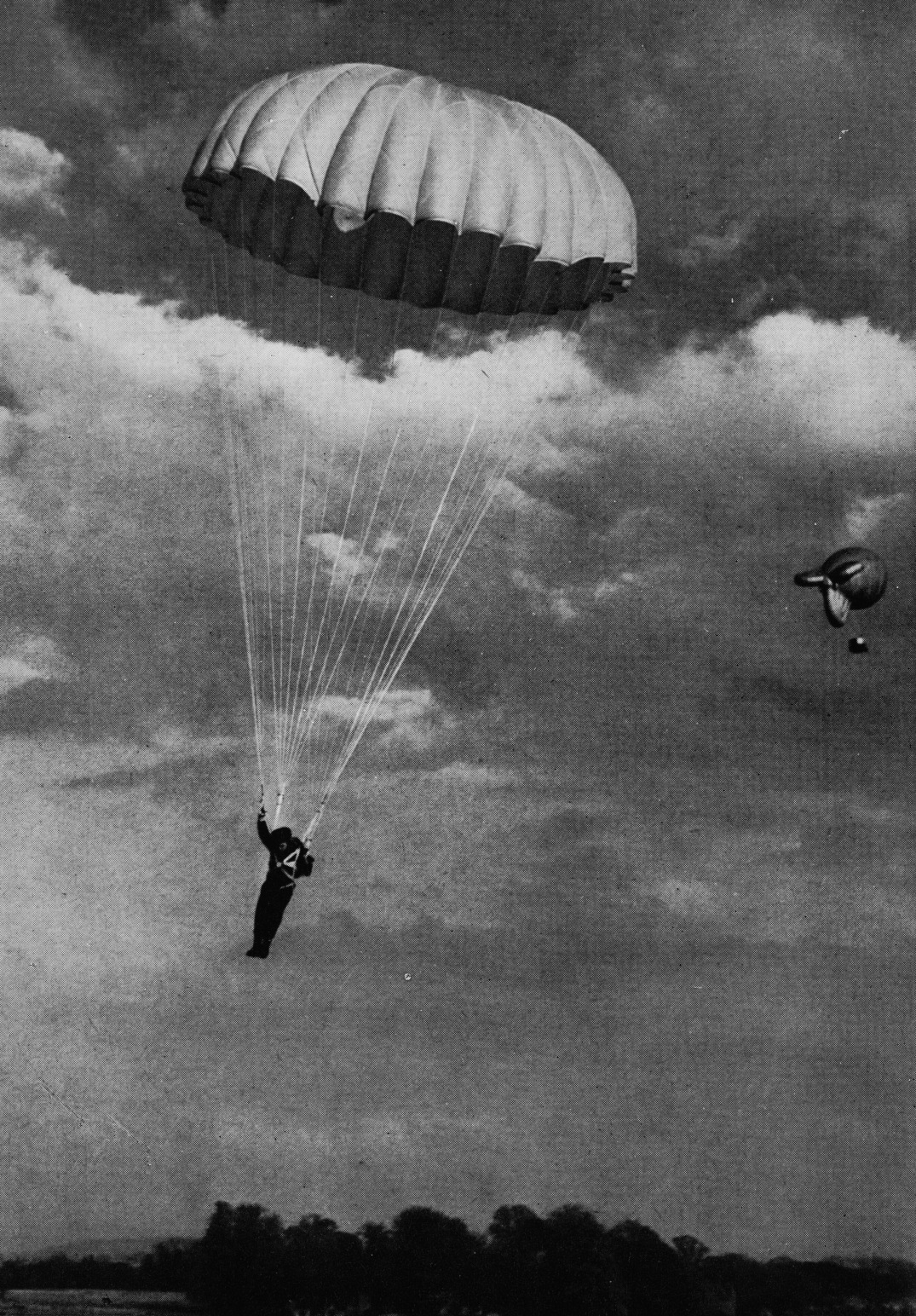
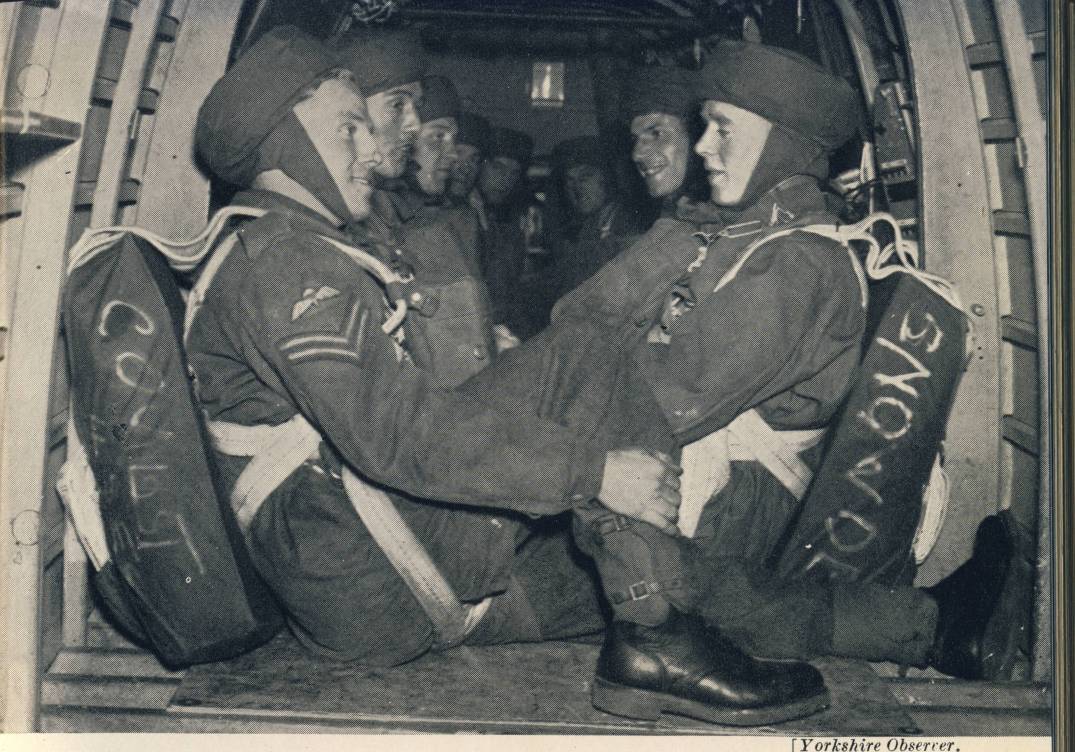
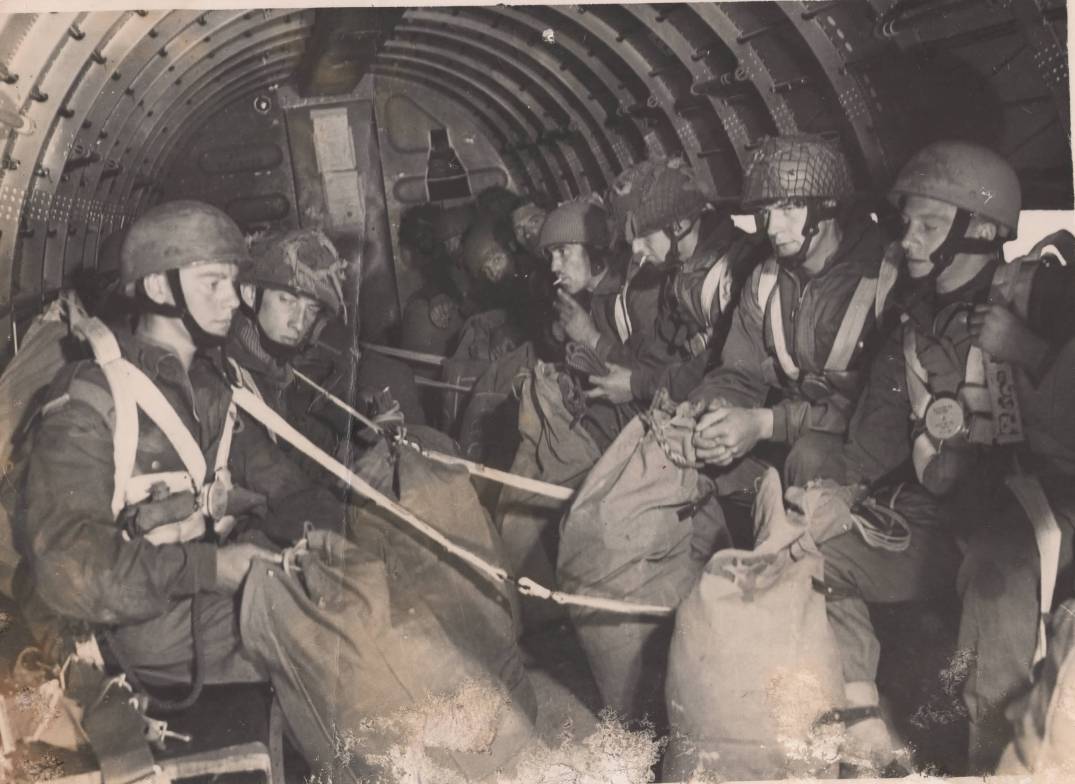


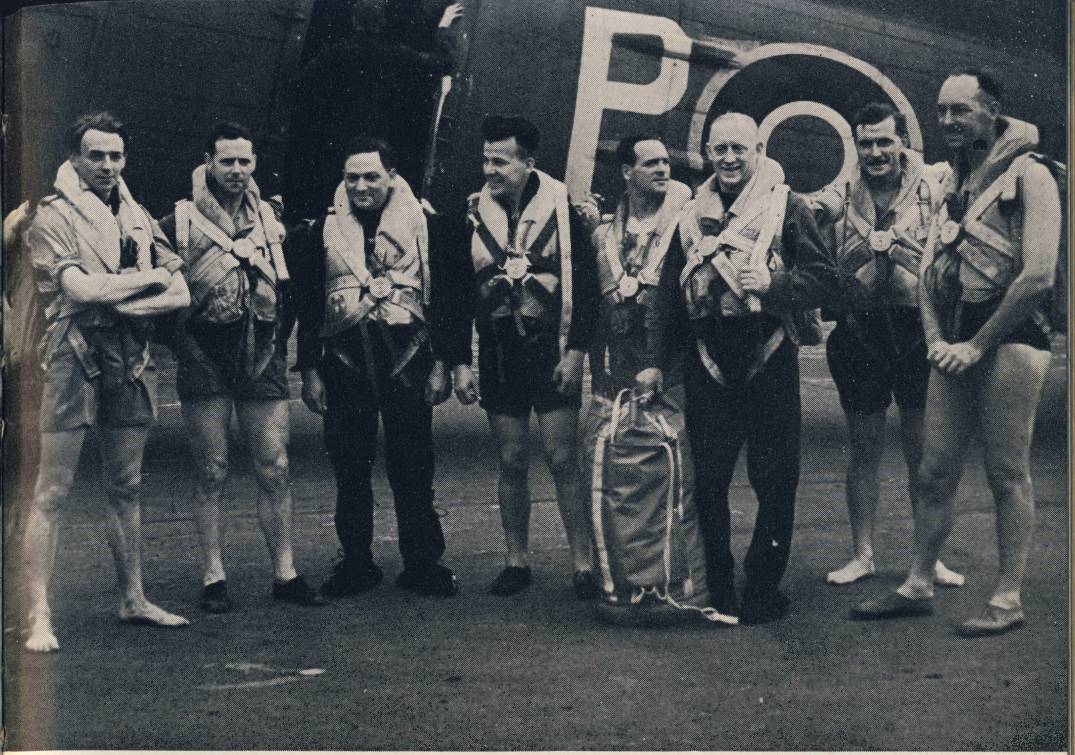

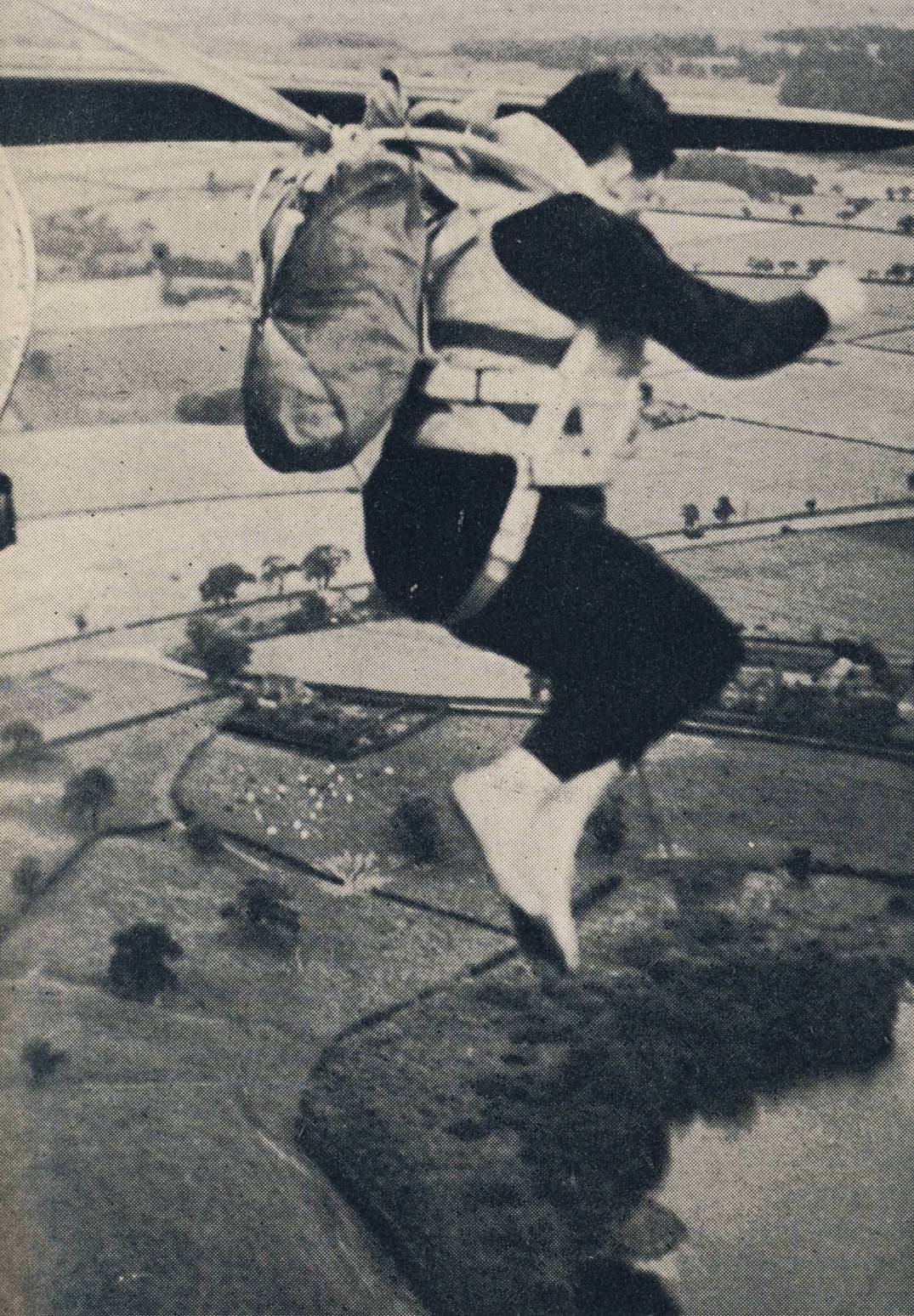
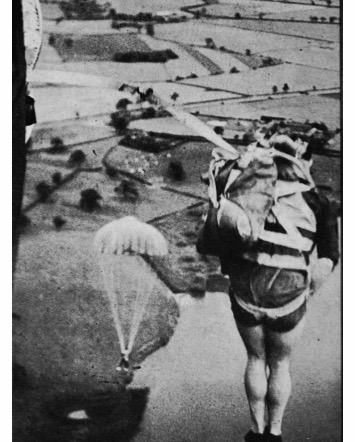
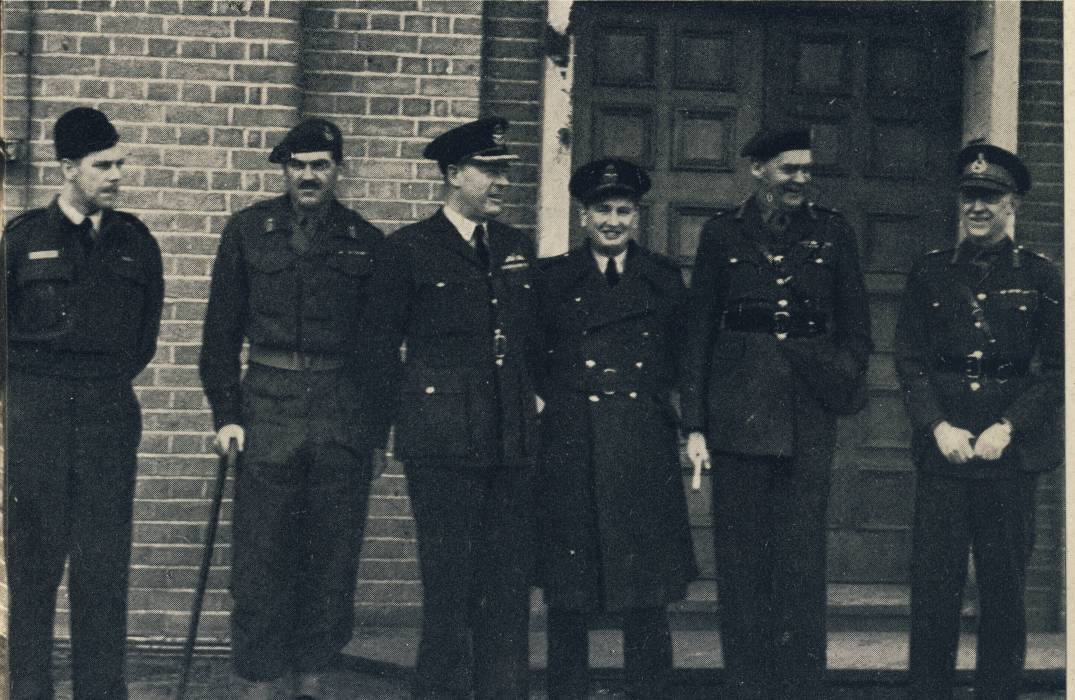
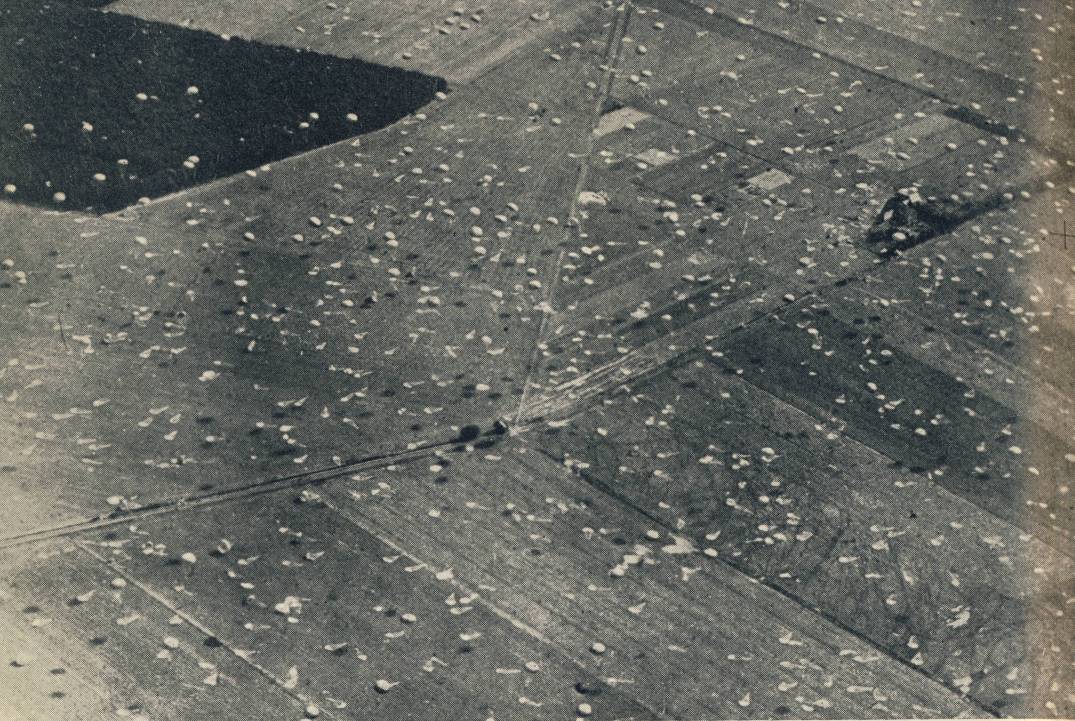
Victory in Europe 1945
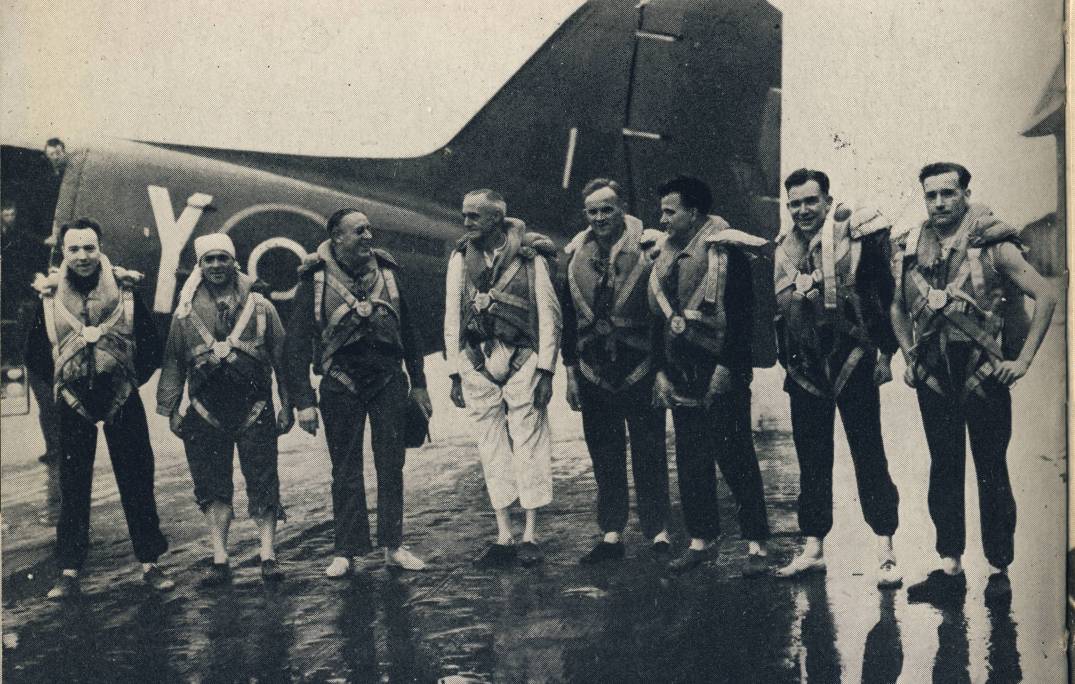
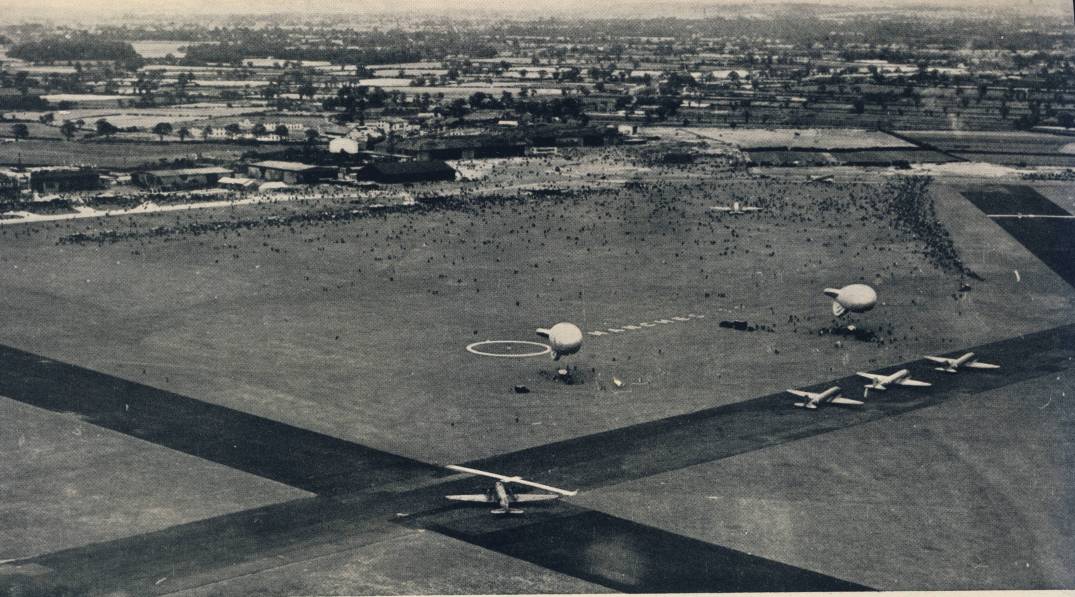
Aftermath

In 1945 Royal Air Force Parachute Jumping Instructors were awarded honorary aircrew status by virtue of their role as despatchers on Airborne Operations in the European and Far East theatres during the Second World War.
RAF Upper Heyford 1946 – 1950

RAF Abingdon 1950 – 1976
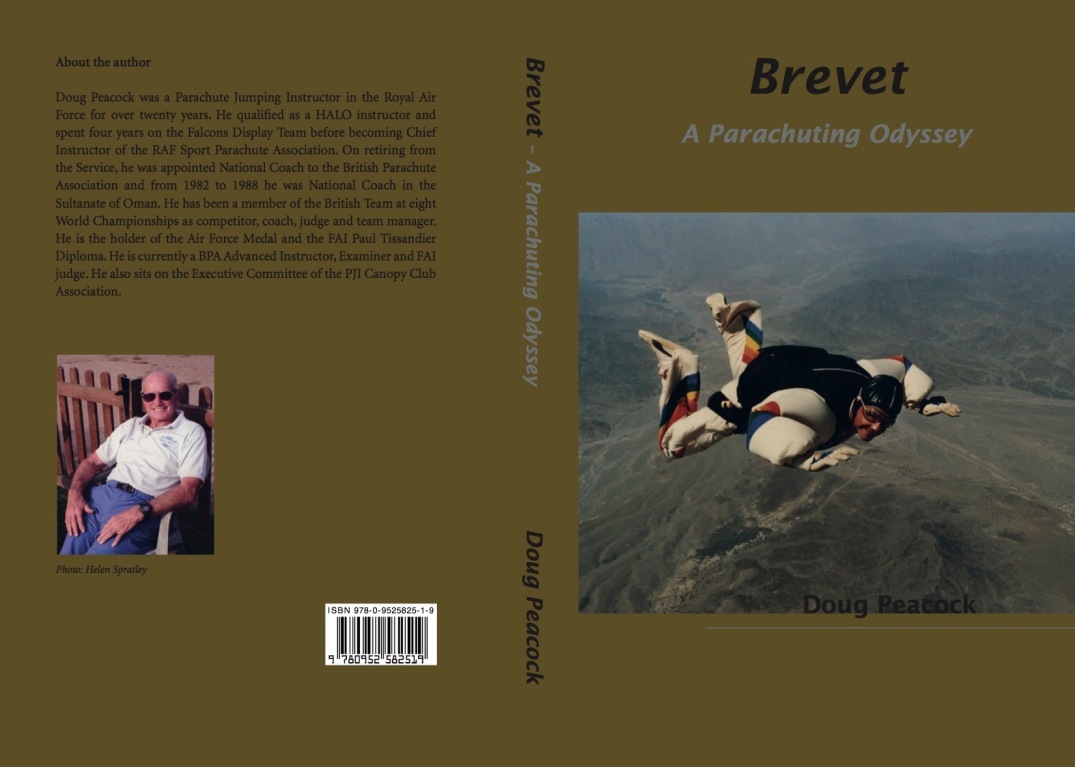
Basic Training
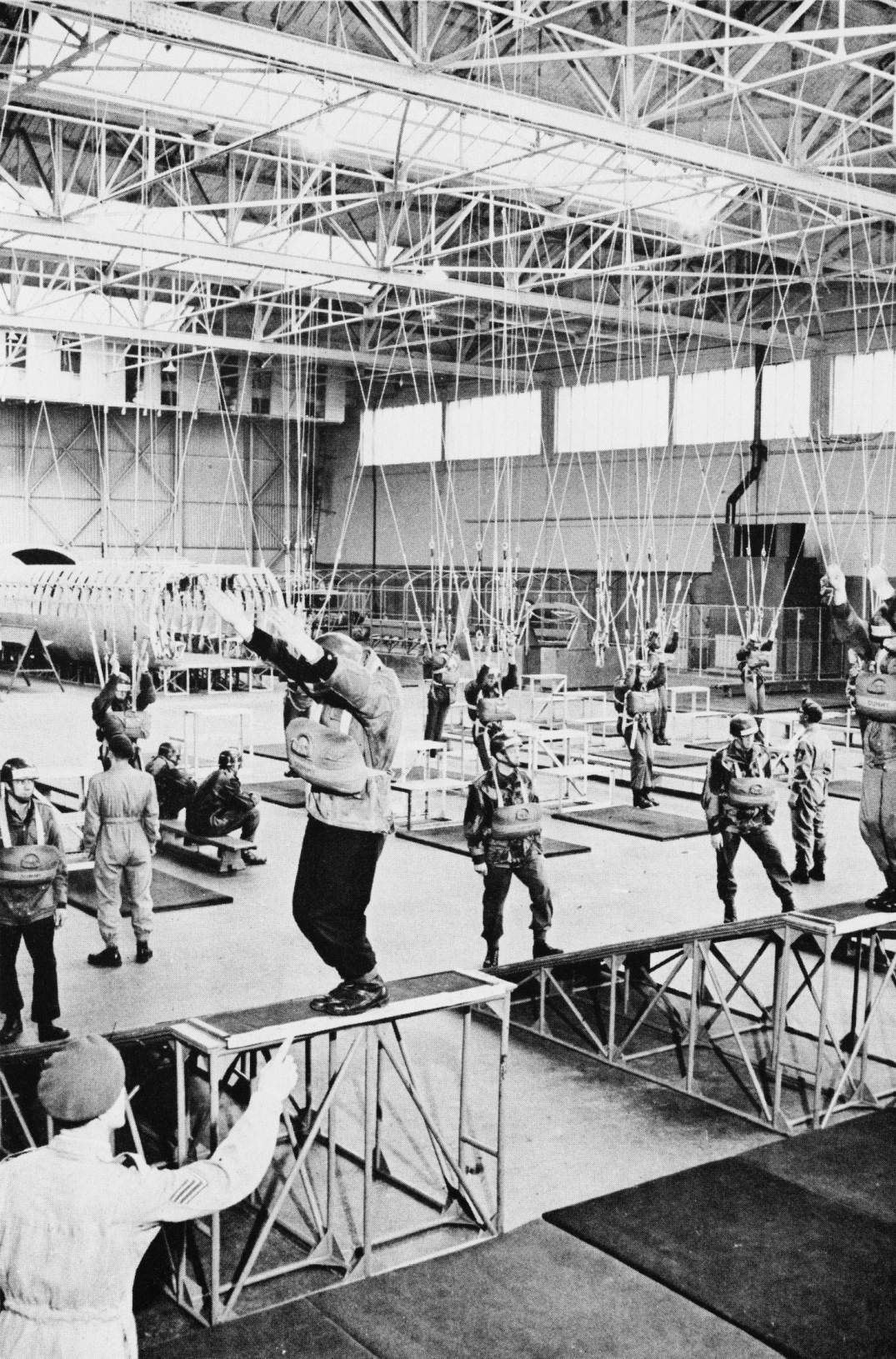

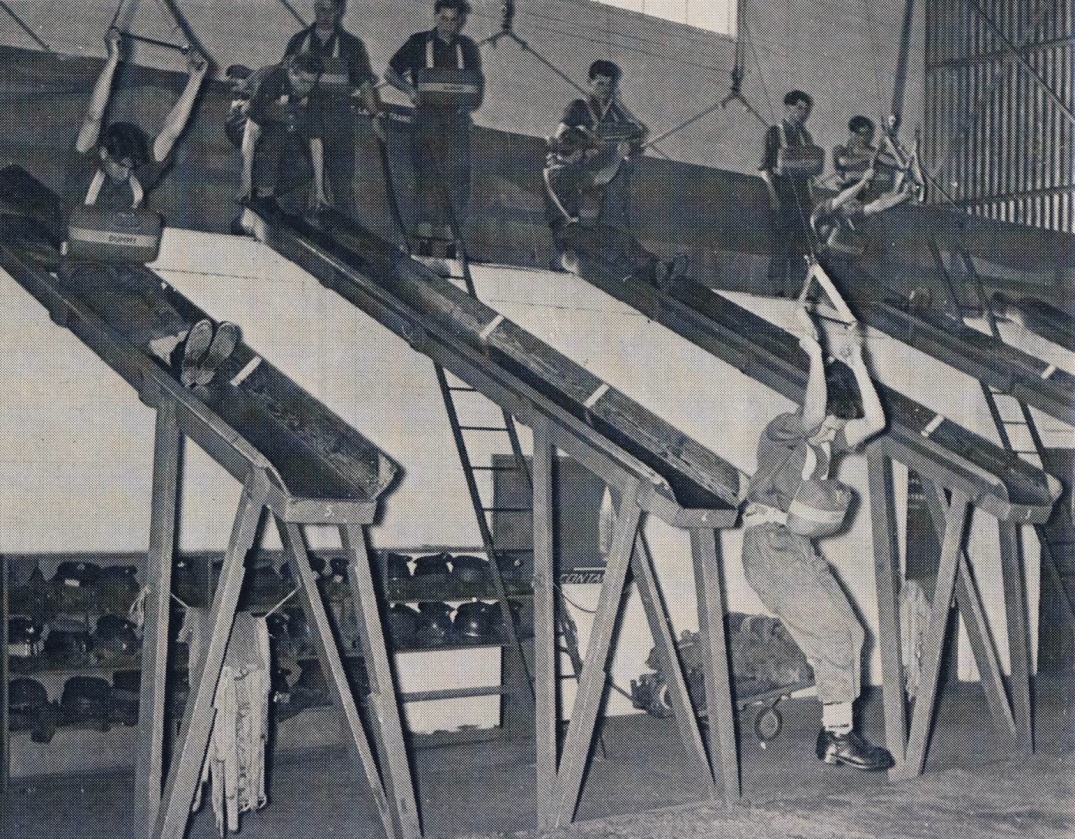


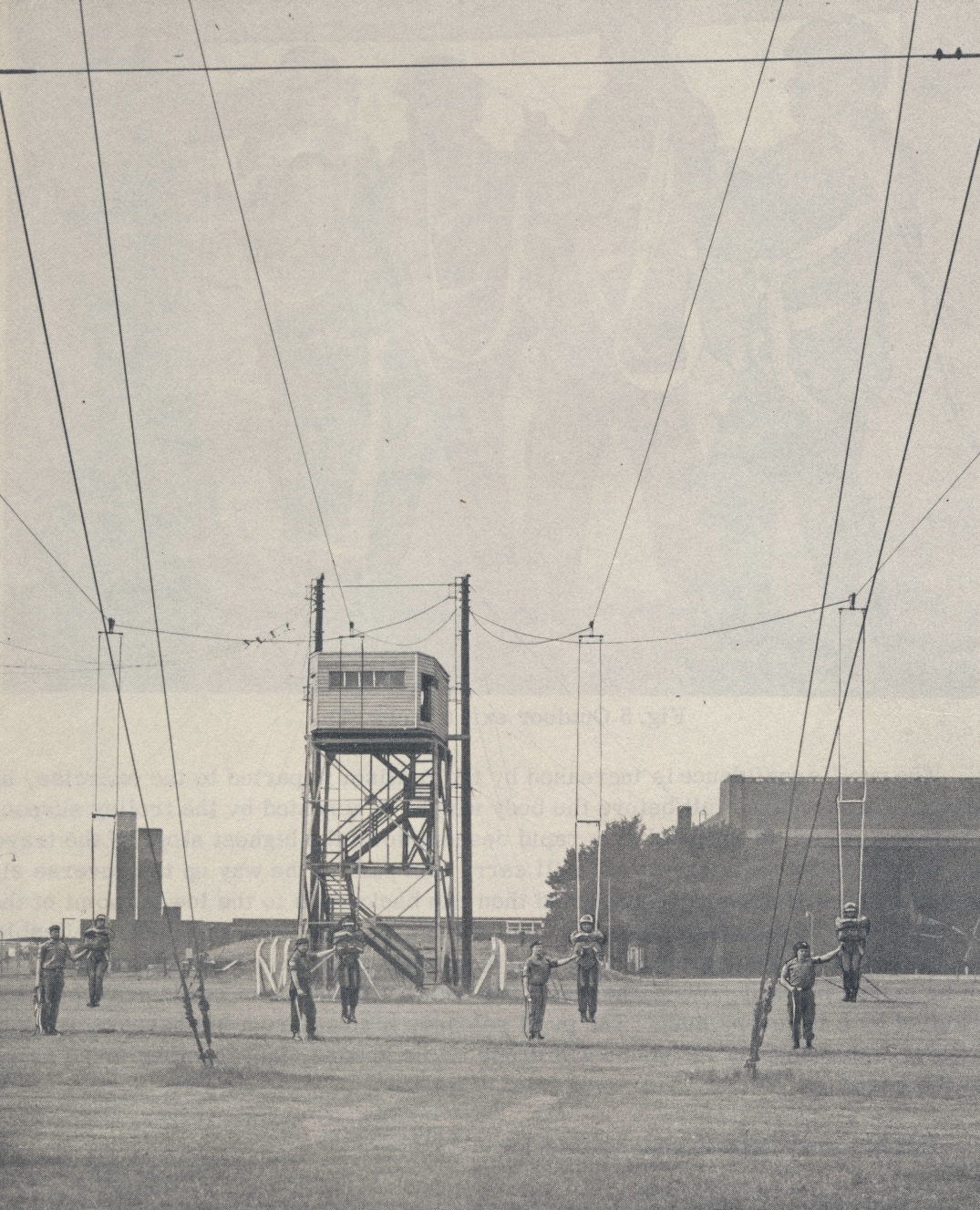
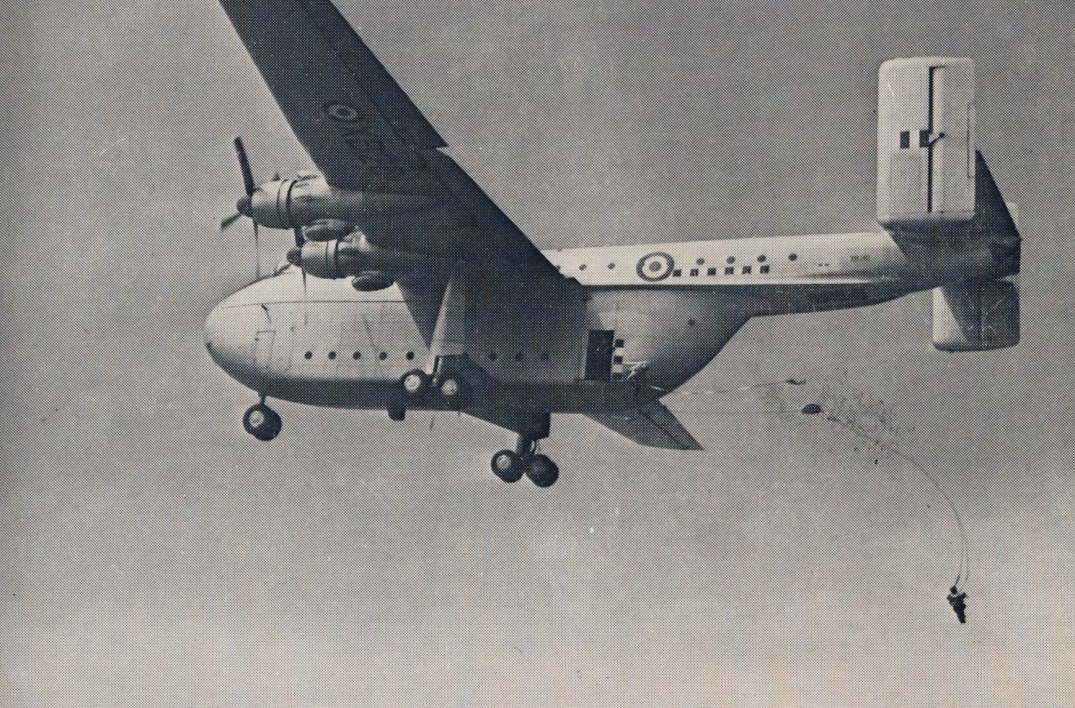
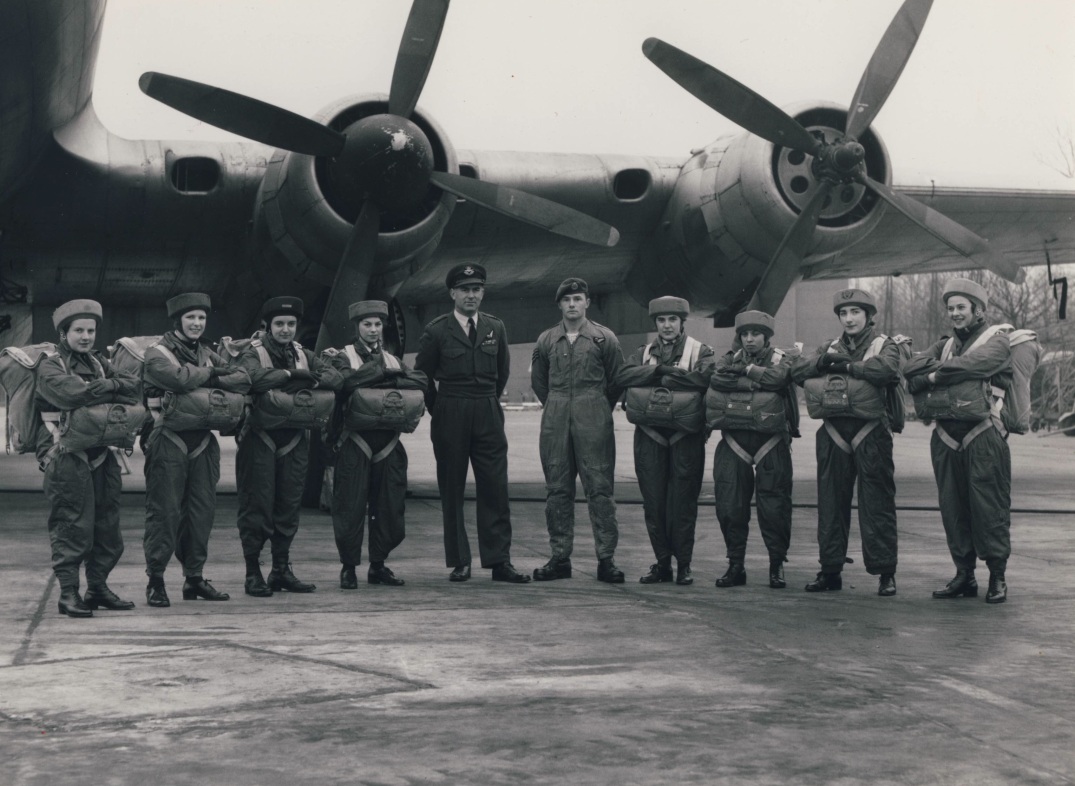
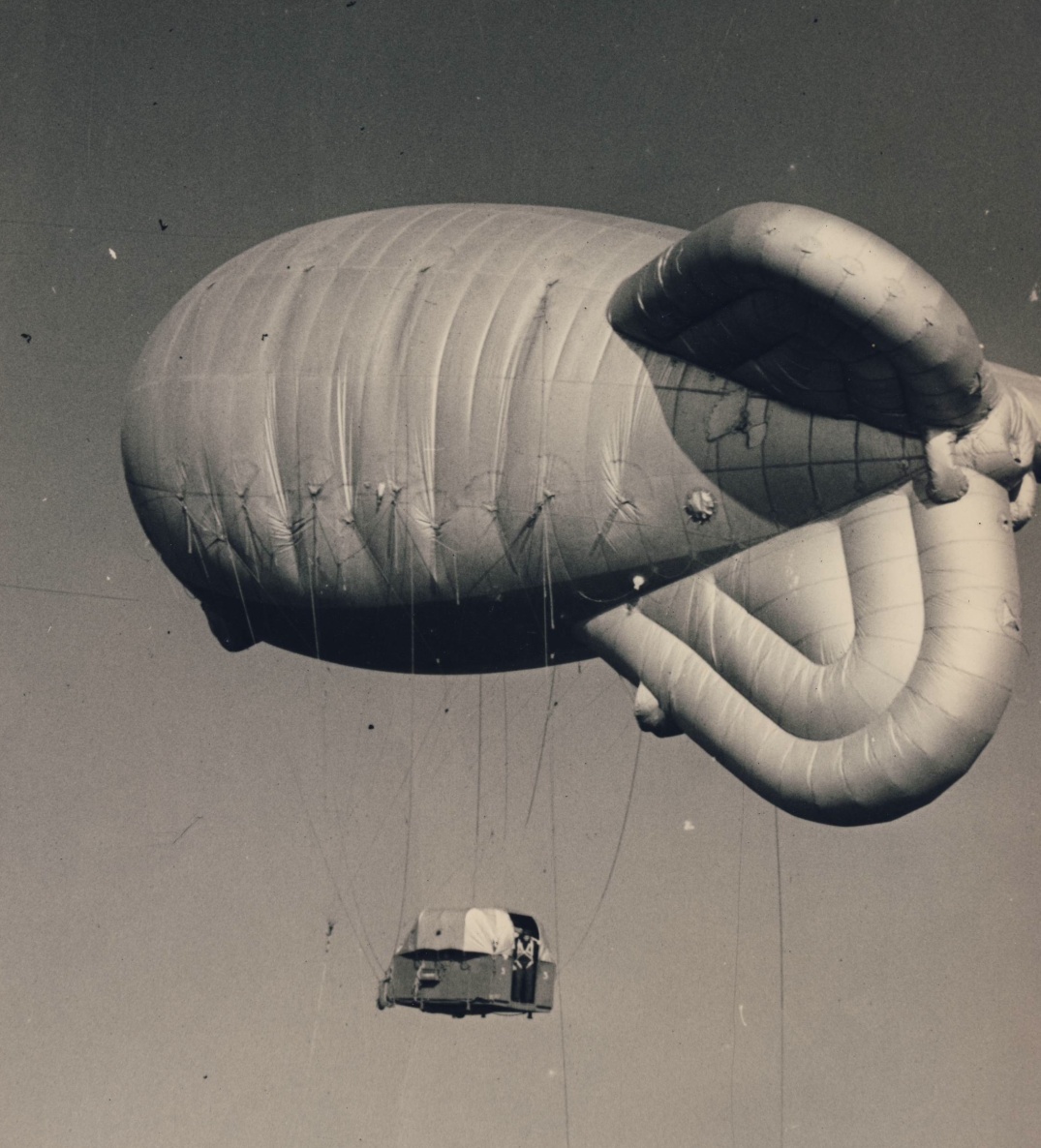

beginnings, 1954
“Although ad-hoc delayed opening descents had been made at PTS with manually operated parachutes in the early 1950’s, (a flavour of which can be found in this fascinating narrative from John Saxby, OC 2 PTS in 1947:
“- it seems a long time ago when Stannard and I tried out a free fall from 10,000 feet at Aqir in Palestine in 1947 using wrist watches. I was about to hand over command of No 2 PTS and proceed on demobilisation and it seemed a jolly end to my RAF career. Group Captain Geoffrey Wood was the Station Commander and took a bit of persuading. Before I left Stannard and I took a Dakota up to 10,000 feet over the station, Aqir – bloody cold – to let them all see what a drop looked like. Our usual DZ was Yibna some miles away. At 1000 feet as I remember the school instructors did a demonstration jump with Statichutes as usual, and at 10,000 feet Stannard and I baled out wearing standard Pilot Type parachutes. I spent a lot of the previous night trying to be sure that my maths was right – 120mph = feet per second ??? = how long dare I wait ??? We used our wrist watches to time the drop before pulling the release. Knowing no better I adopted the standard exit position and reached TV in that position – surprised to feel myself ‘standing’ in the air with the wind whistling past but no feeling of falling – how naive we were. But then I began to tumble and was sick, remembering to keep my boots out of the way! Finally I saw Stannard’s parachute deploy and decided to rely on his maths and deployed my own”)
… the first formal recognition occurred when Sir Raymond Quilter, co-founder of GQ Parachute Company, approached No 1 PTS in 1954 asking for jumpers to train for the forthcoming World Parachute Championships. After four weeks training (from scratch!) in basic freefall techniques six instructors were selected for the British team at this second WPC which was to be held at the former French National Parachute Centre, St. Yan, (Saône-et-Loire). They were Flt Lt Doddy Hay, Sgts Alf Card, Danny Sutton, Timber Wood, Norman Hoffman and Tommy Maloney (Below)

The team returned from France without any medals, but having gained valuable experience in terms of freefall techniques, canopy handling and free fall equipment. Disappointment ensued as the then PTS establishment showed little interest in developing these new ideas, it being felt that there was no requirement for freefall jumping in the Service. The parachutes were returned to GQ, and the cadre dissolved. Only two men had other ideas, which they were determined to put into practice.The prime movers in taking freefall jumping forward at PTS were Alf Card and Norman Hoffman. http://www.telegraph.co.uk/news/ obituaries/1443195/Norman-Hoffman.html.”
(Brevet pp.10-11)
Alf Card, along with Keith Teesdale, ran an operation at Kidlington, using the Tiger Moth:
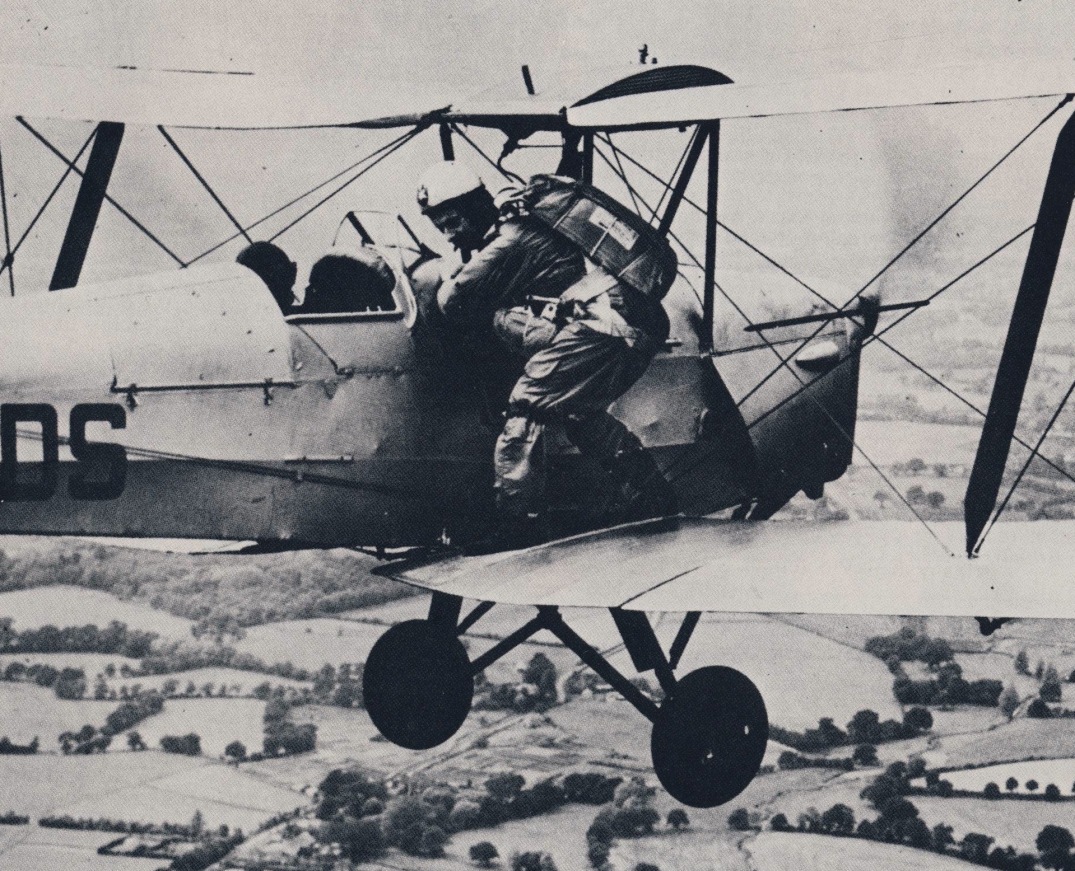
whilst Norman formed the British Skydivers with jumpers from Boscombe Down operating out of Thruxton.


By 1960 back at the school, opportunities had arisen for staff members to be trained in freefall techniques. There was now a Special Forces training requirement, and PTS had to quickly adapt to the task. The previous year (the then) Flying Officers Peter Hearn http://www.amazon. co.uk/Parachutist-Peter-Hearn/dp/0709154135 and John Thirtle, along with Flight Sergeants Alf Card and Tommy Moloney, had attended a freefall course at the French Airborne Depot (BETAP) in Pau and they formed the instructor cadre back at Abingdon.

This time, as opposed to 1954, the benefits were immediate and permanent. Freefall was now firmly on the PTS agenda. And in 1959 PTS provided a demo team for a tour of Australia. (below).
(Brevet pp 12 -13)
1959 Tours to Australia and New Zealand
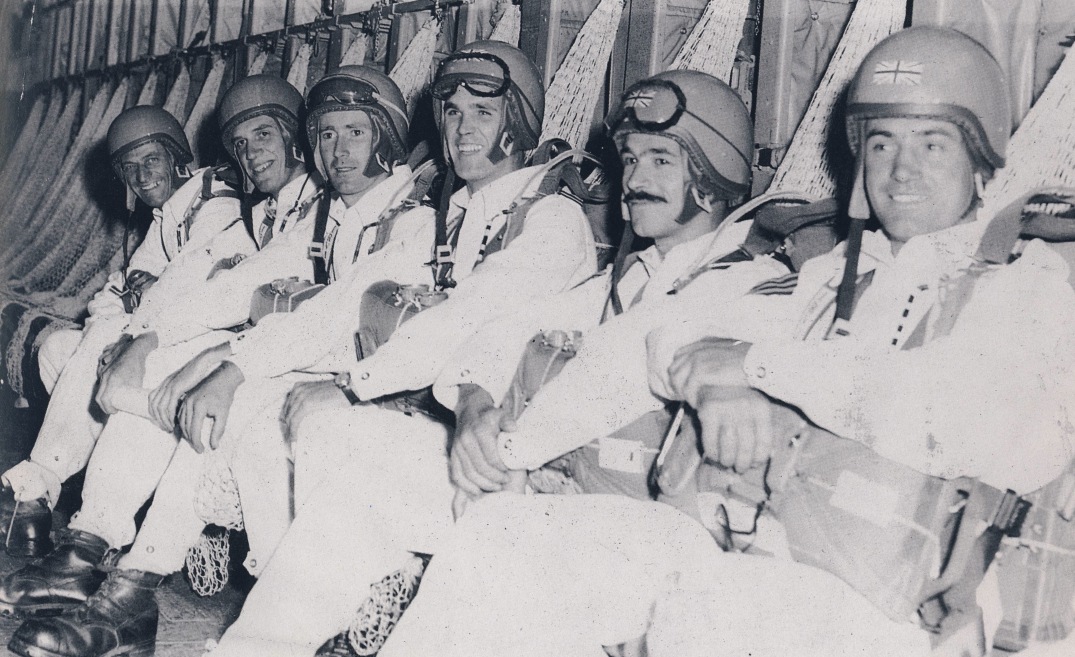
1961 Farnborough and the “Big Six”*
In mid-June trials work at PTS was suddenly brought into extremely sharp focus with the establishment of a Royal Air Force parachute display team, and the directive that this team was to make its official debut at the Society of British Aircraft Constructors (SBAC) Farnborough Air Show in September.
* Coined during training. Groups of three, four and five, leading up to the “Big” six.
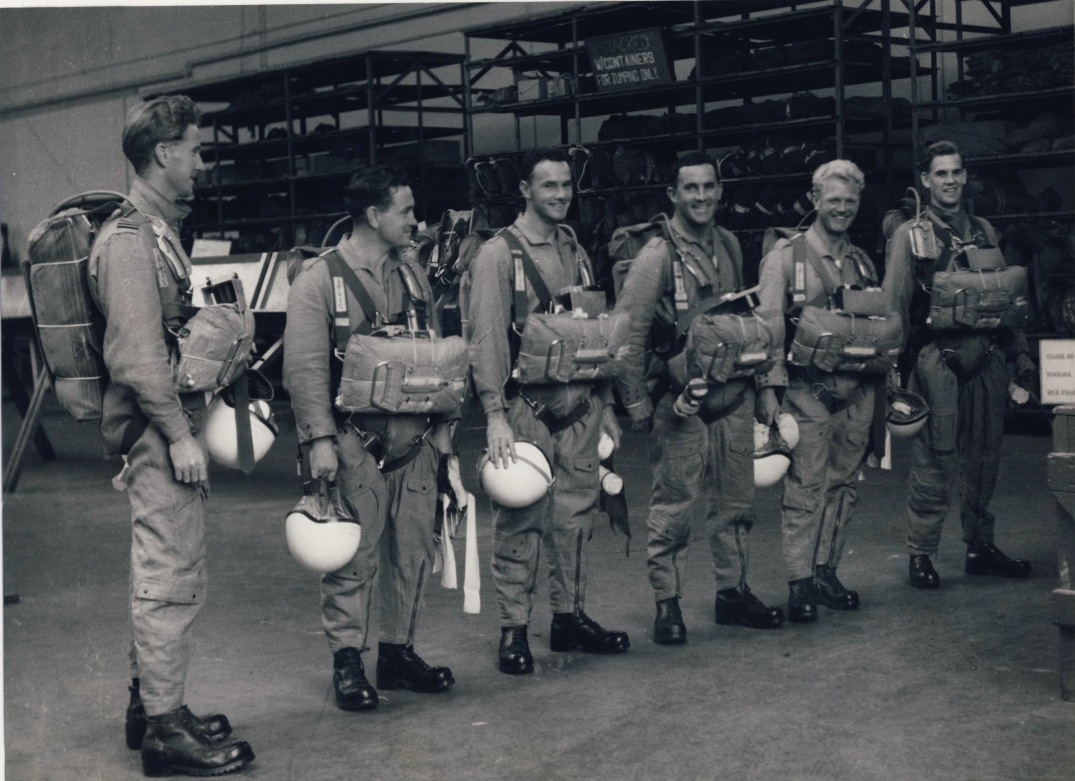

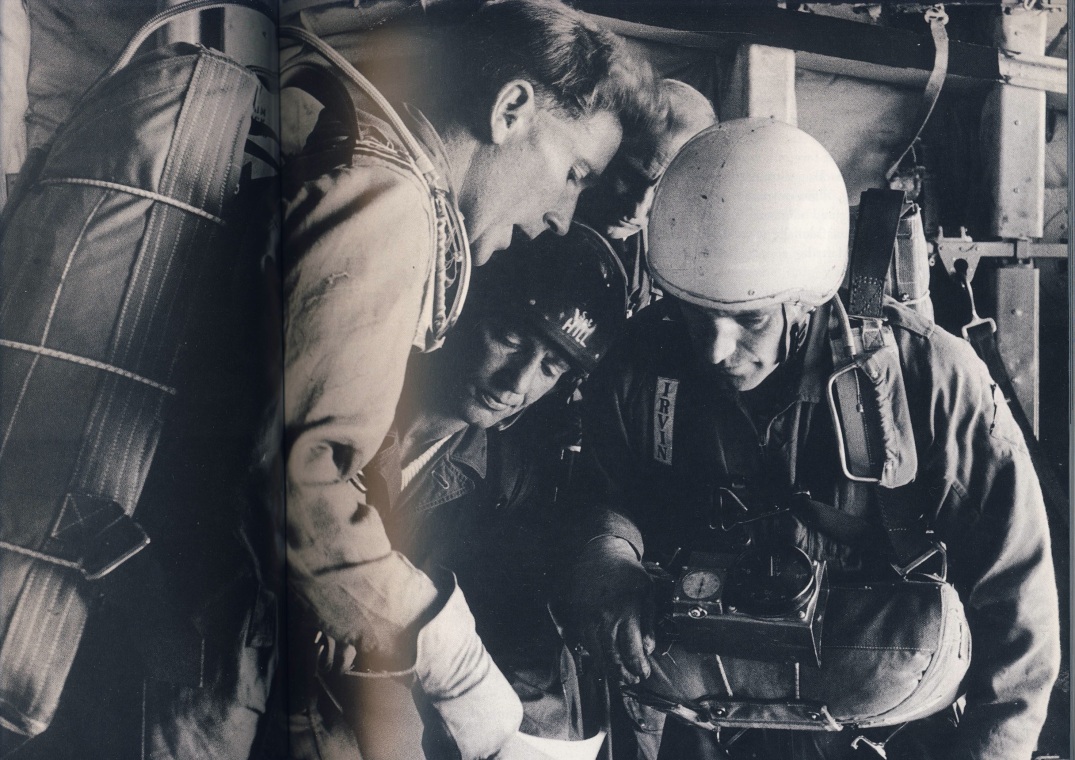

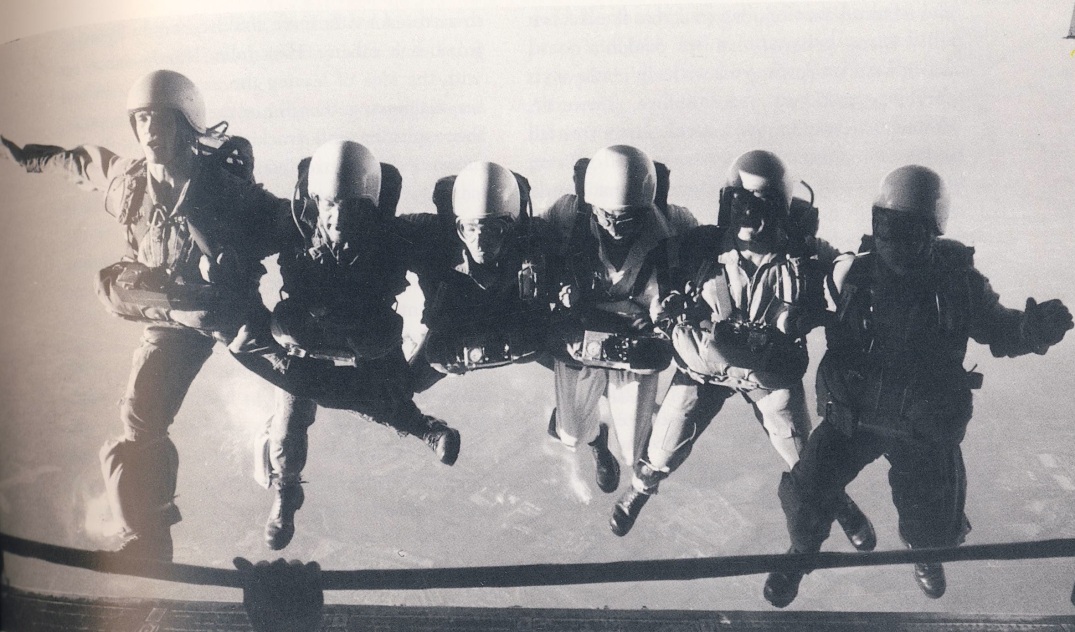

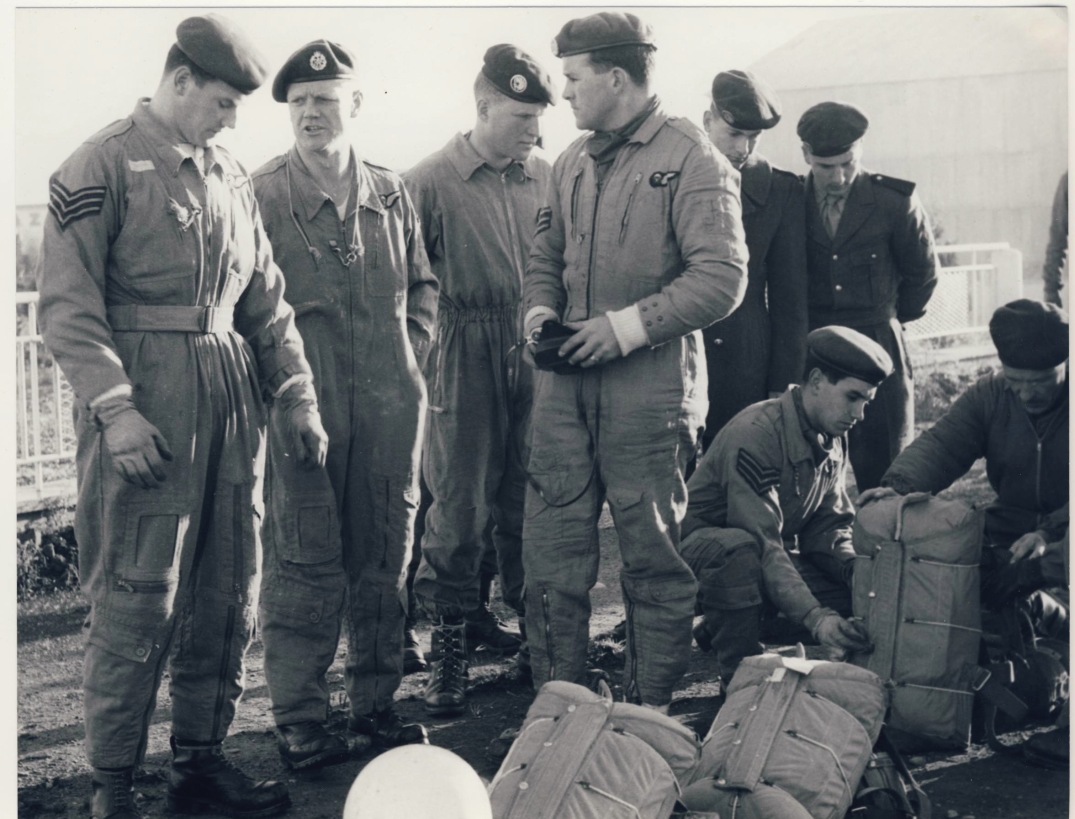

1962
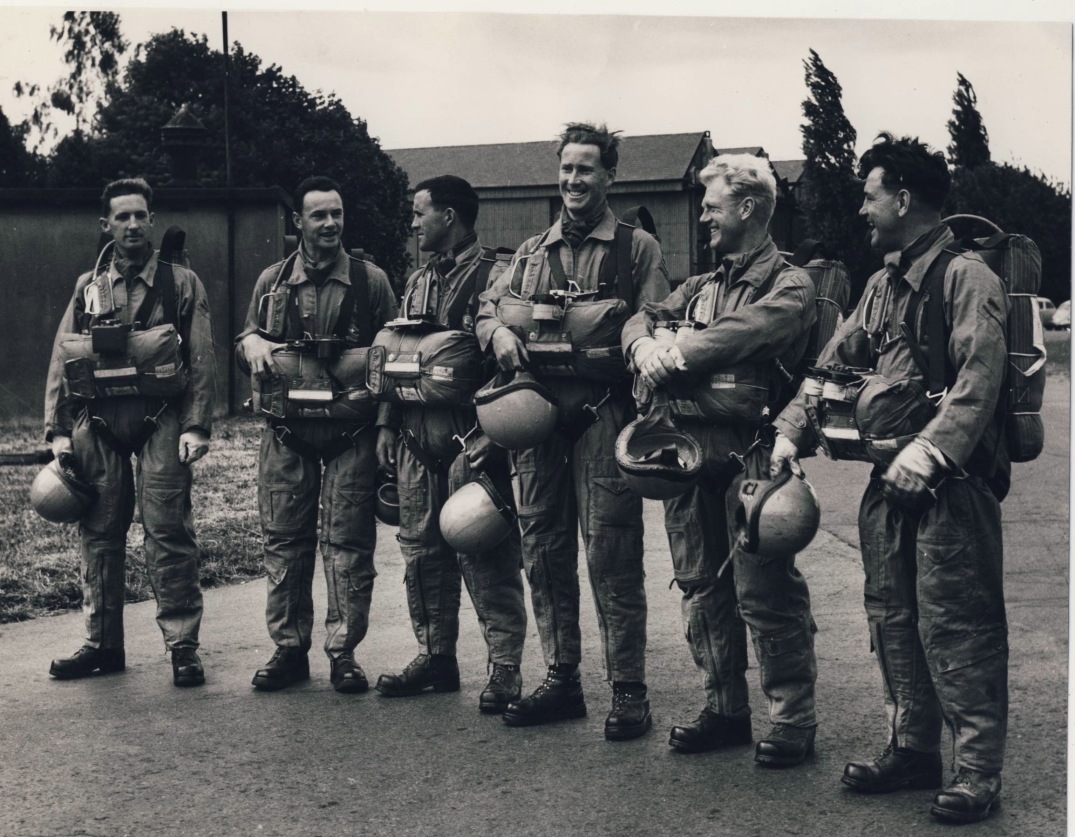
Demo Rouen Boos Airfield
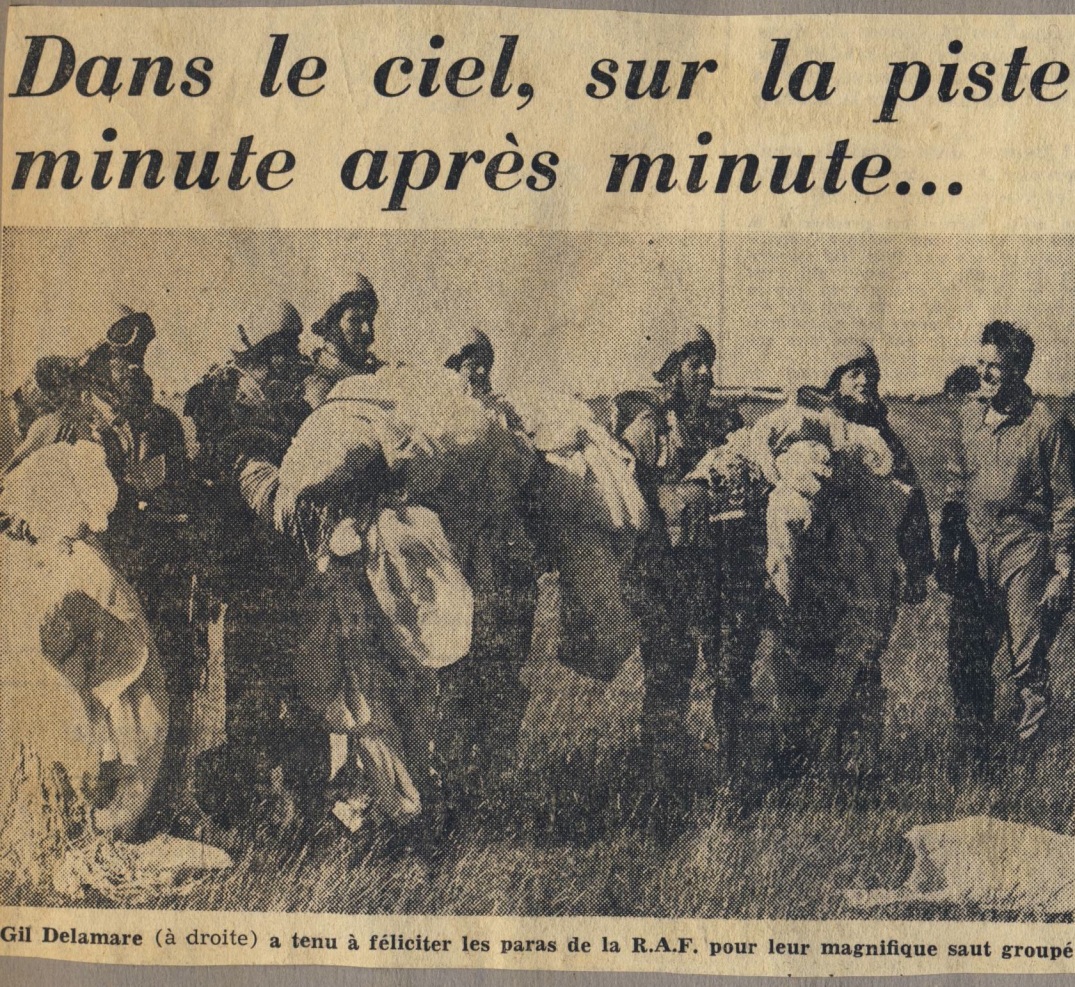

Intermission 1963-1966
During this whole period,as mentioned above, in parallel with our work at PTS, Norman Hoffman had formed his own Display Team, the British Skydivers, operating under BPA regulations. Norman, Jake, Tommy, Geordie Charlton and I were jumping each free weekend and competing in the annual National Championships with some success and representing Great Britain at World and International Championships from 1961 onwards. In June 1963 we entered the European competition at Leutkirch in Germany and took gold medals in the team event, against strong opposition including the US Army team, the Golden Knights.
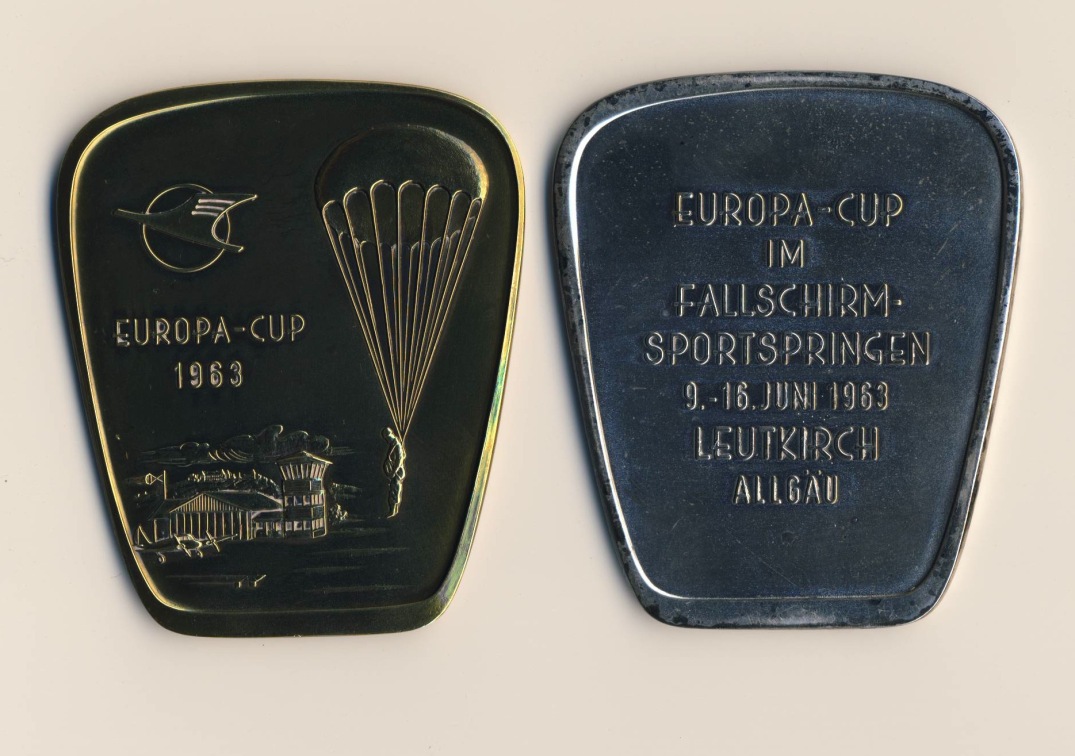
On our return to Abingdon, we were summoned to the OC’s office, presumably to receive official congratulations. Wrong. In company with Jake and Snowy, we were summarily given to understand that we would all be posted off PTS at the first available opportunity, the reason given being that, in the opinion of the OC, we had been around the Parachute Training School for long enough. Wing Commander Bernard F. Stannard was undeniably the boss and, by the end of the year, Norman had gone to Kenya, Geordie to Aldershot, Jake and Snowy to Singapore and I was on my way to Cyprus. With Peter Hearn also posted to Singapore, and Tommy commissioned into the RAF Regiment, the diaspora of the sport jumpers from the hangar was complete.
Meanwhile, pace the OC, at PTS all our sporting initiatives had not been in vain. Moves were underway to create an official RAF Abingdon Sport Parachute Club, presumably on the premise that if you can’t beat them, join them. Under the chairmanship of Squadron Leader Mike Stamford this Club came into being in August at Weston on the Green.We had taken delivery of a de Havilland DH89 Dominie trainer from the Royal Naval Air Service, at a cost of £400. 00. This princely sum included numerous spares, including two extra engines. On 28th August 1963, with Mike Stamford running the programme we flew three inaugural lifts, two at 5,000 feet and a final lift to 7,000 feet. Jumpers were Norman Hoffman, Tommy Moloney, Jake McLoughlin, Geordie Charlton, Robbie Robertson (“Big Rab”, not Snowy) Mike Stamford and myself. Our pilot for the day was 47 Squadron Beverley captain Flight Lieutenant Crawley. The RAF Abingdon Sport Parachute Club, later to become the Royal Air Force Sport Parachute Association, was born.
(Brevet pp 54-55)
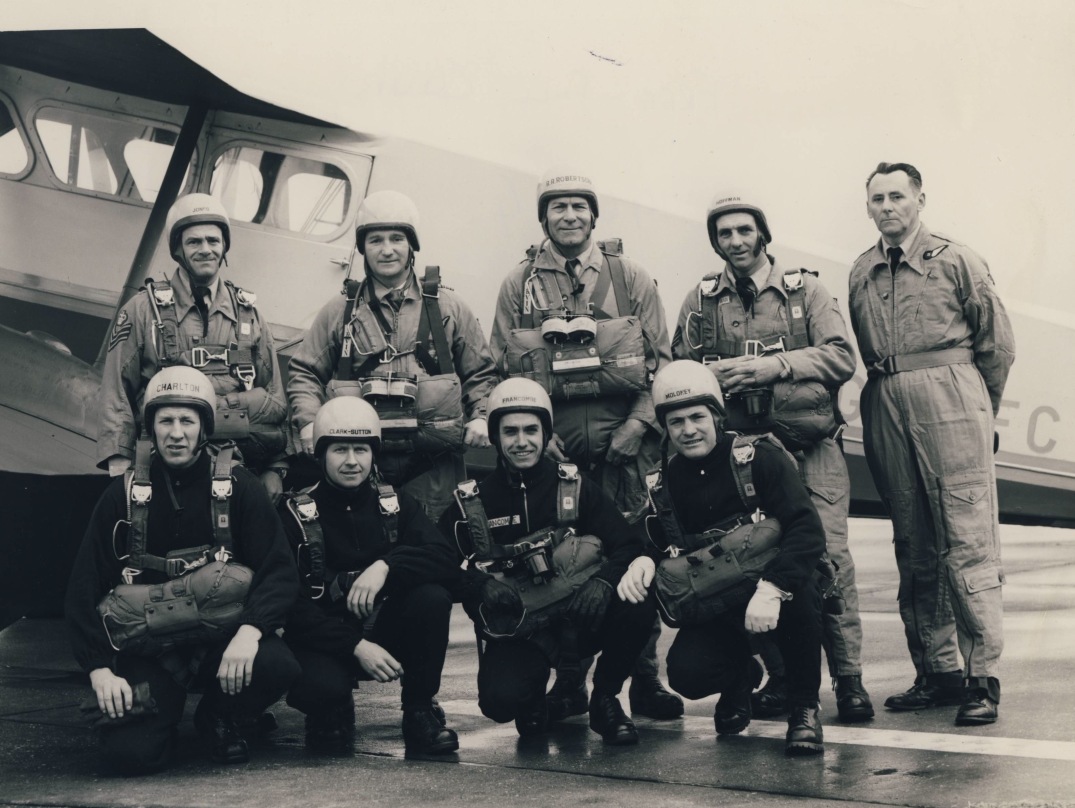
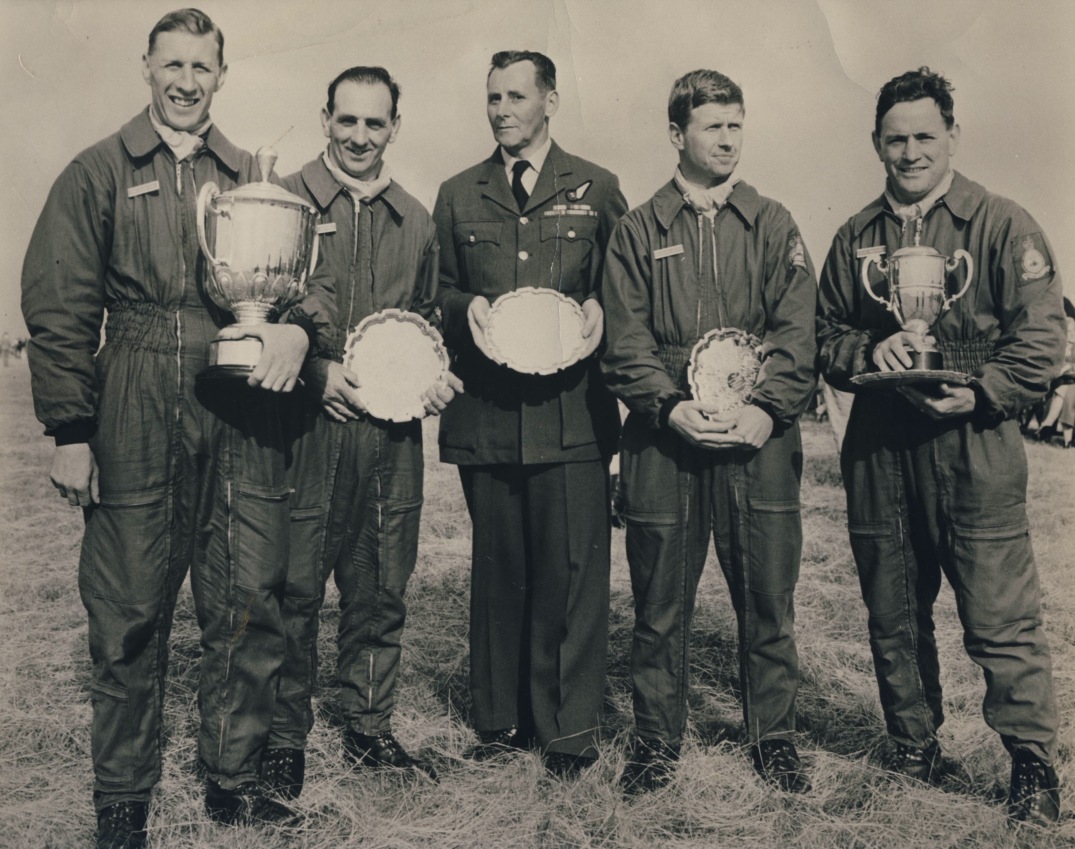
Jungle Survival School Changi
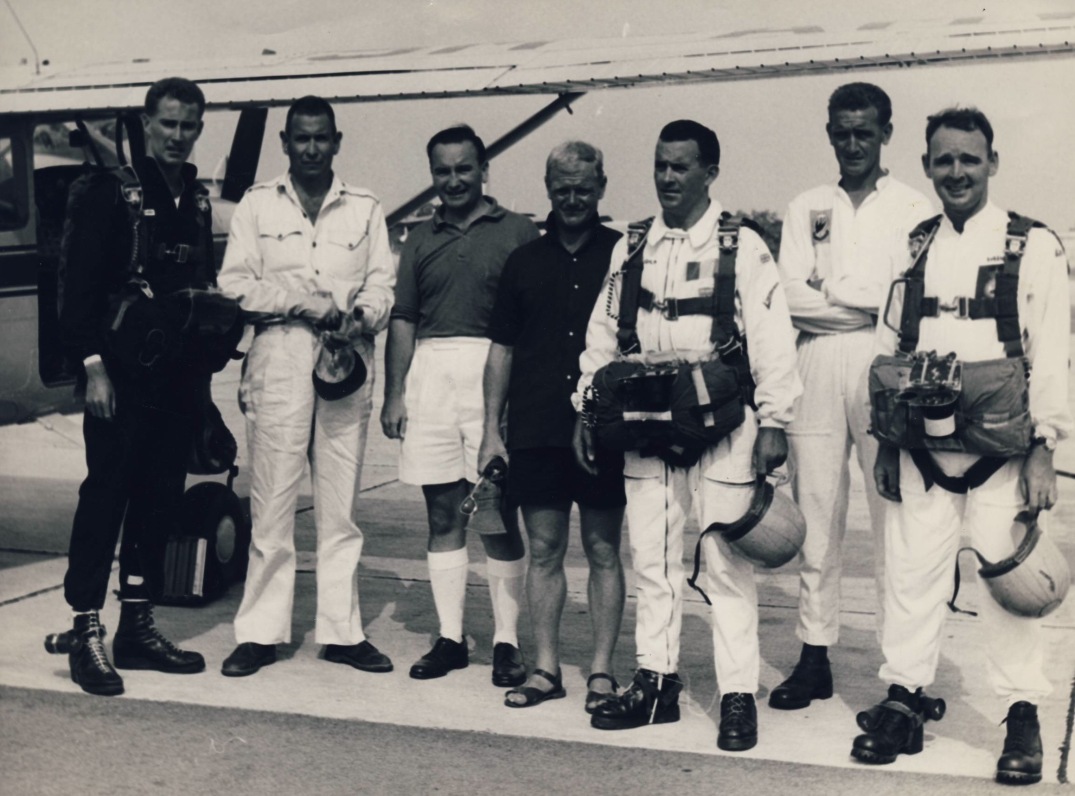

NEAF Parachute Rescue Team Cyprus 1963 – 1966

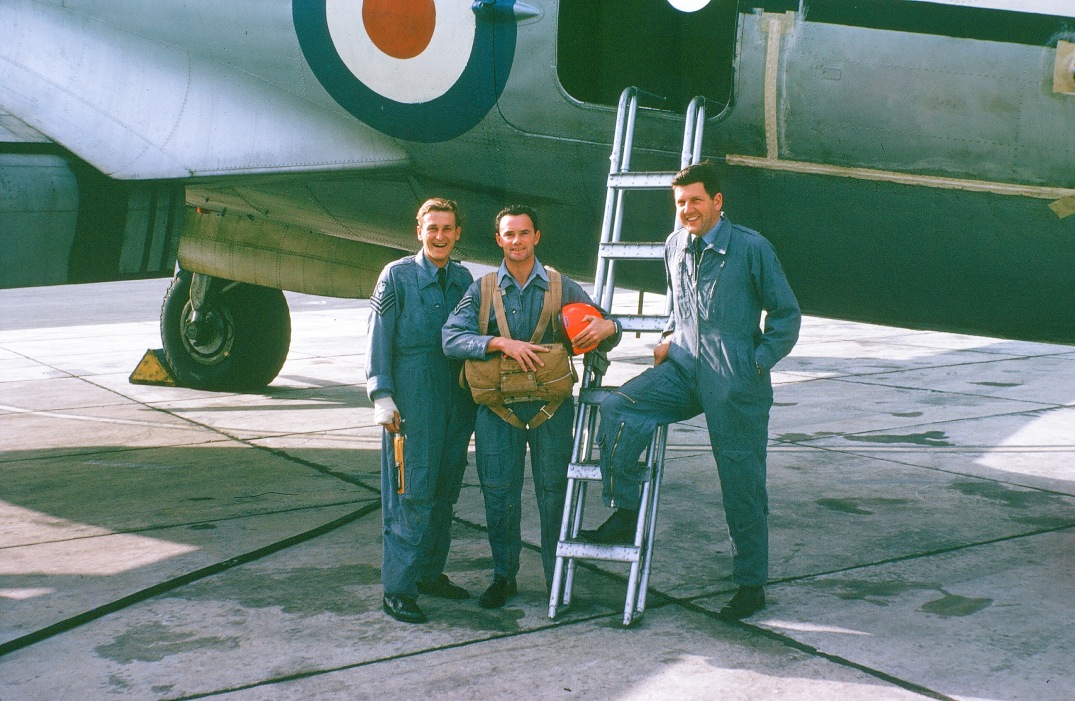
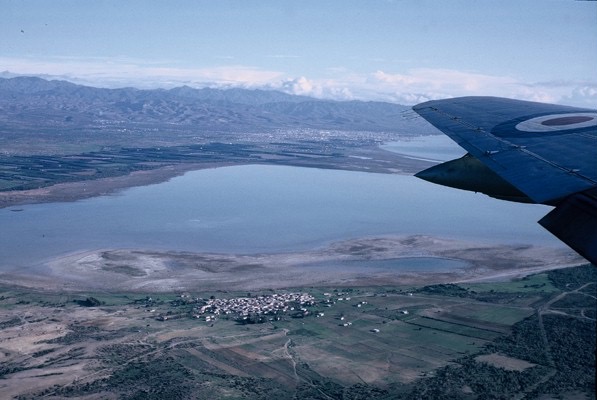



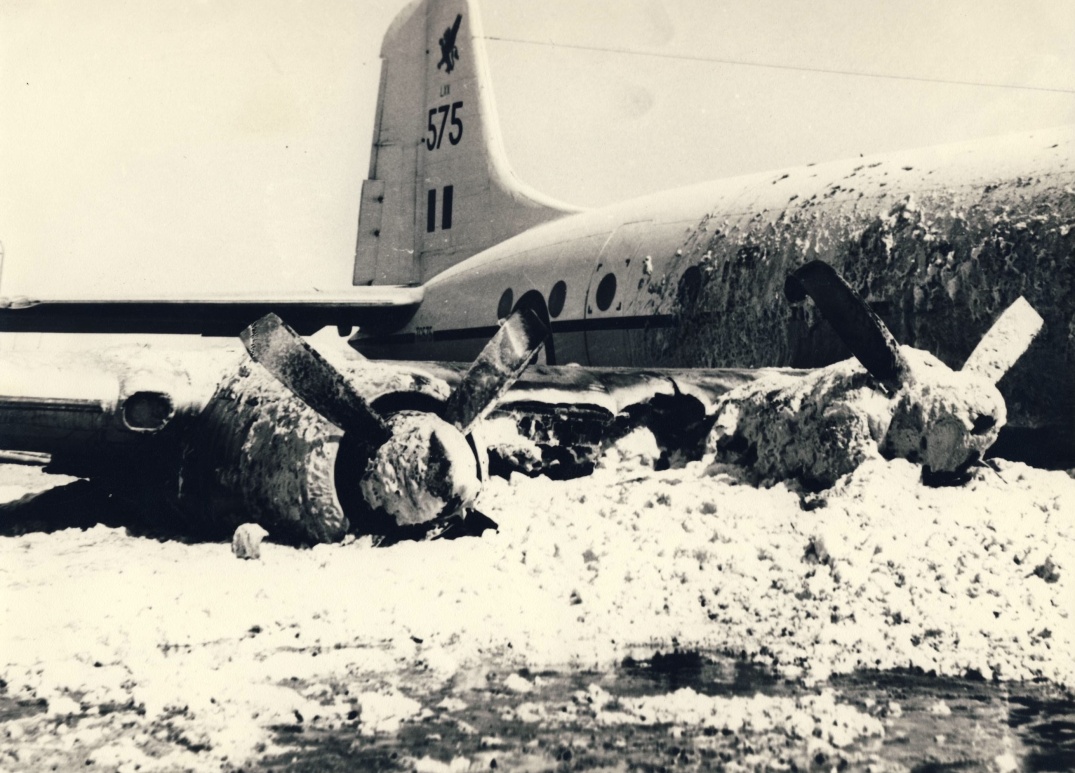
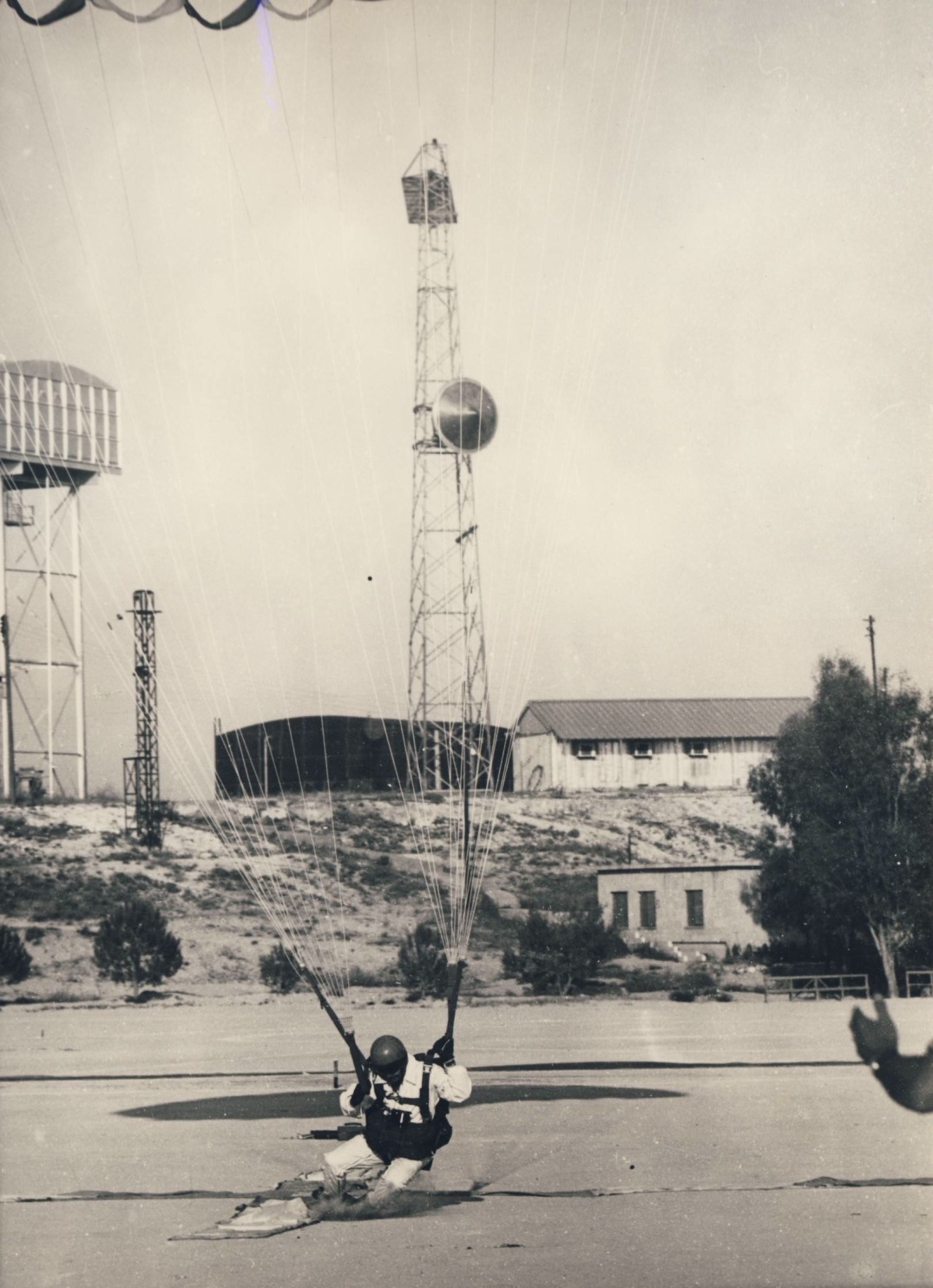

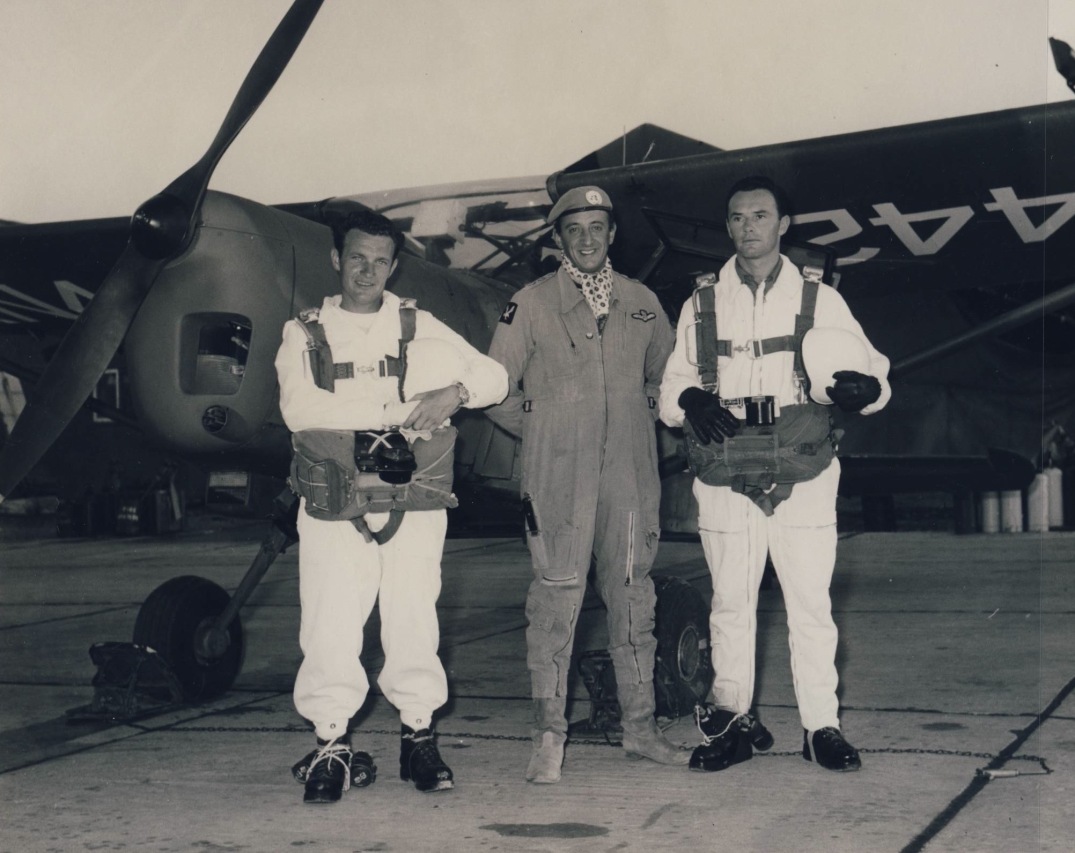
22 June 1967 Boscombe Down Team set British Altitude Record
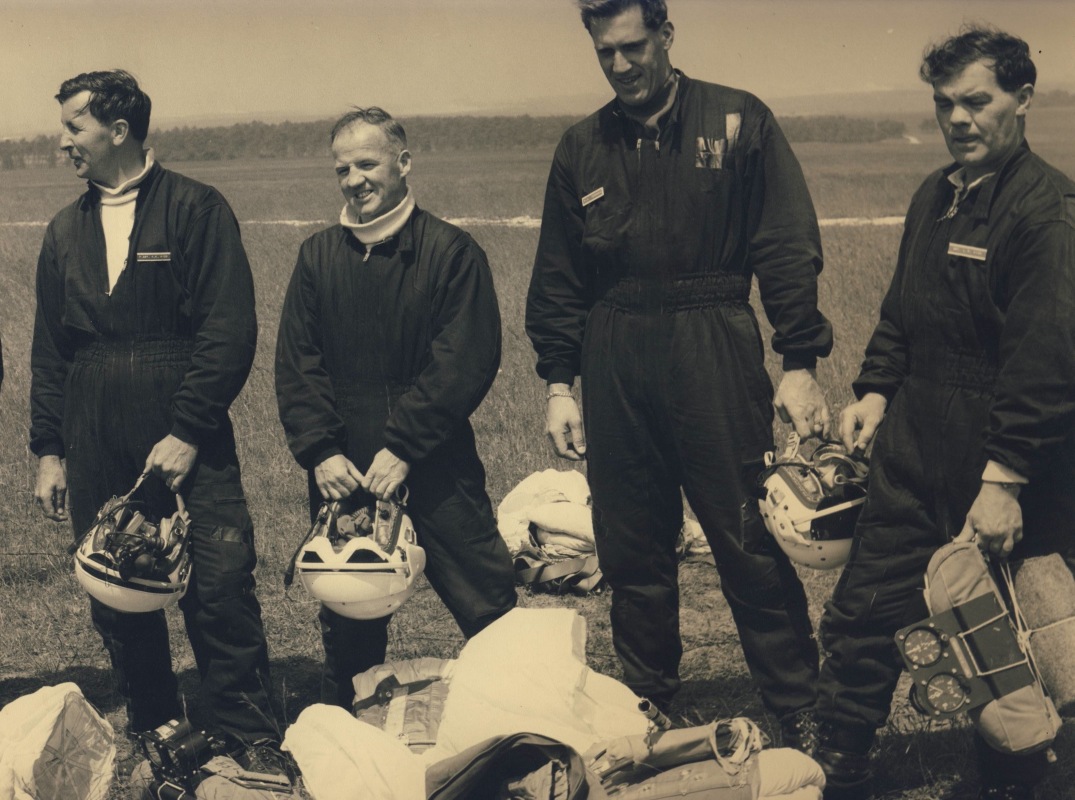
Falcons Display Team 1967
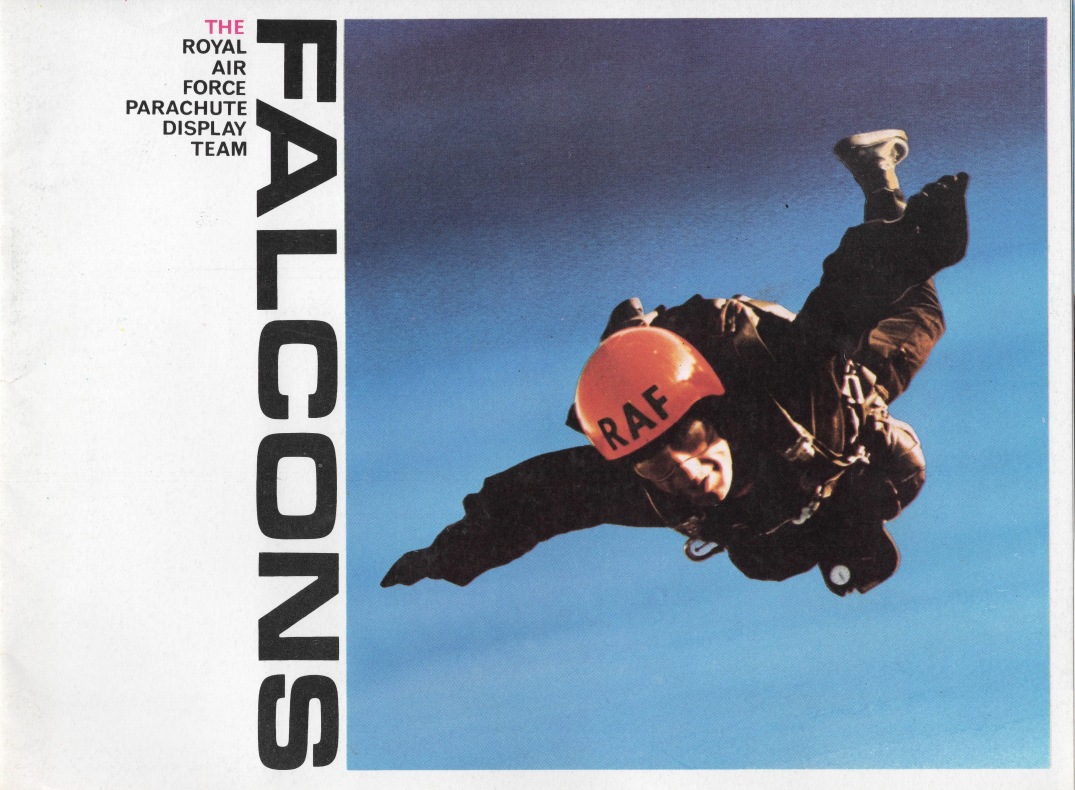
Team Leader Flt.Lt. Stuart Cameron, Coach F.S. Terry Allen

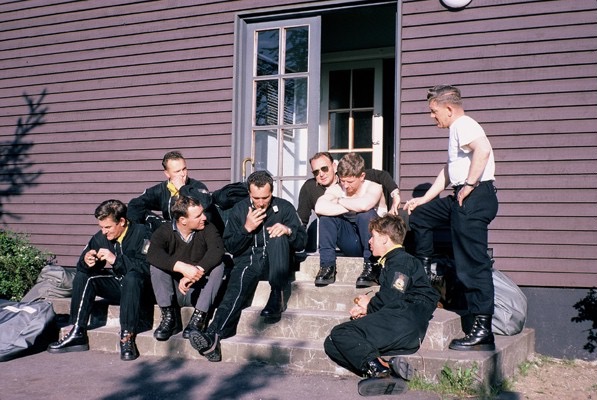
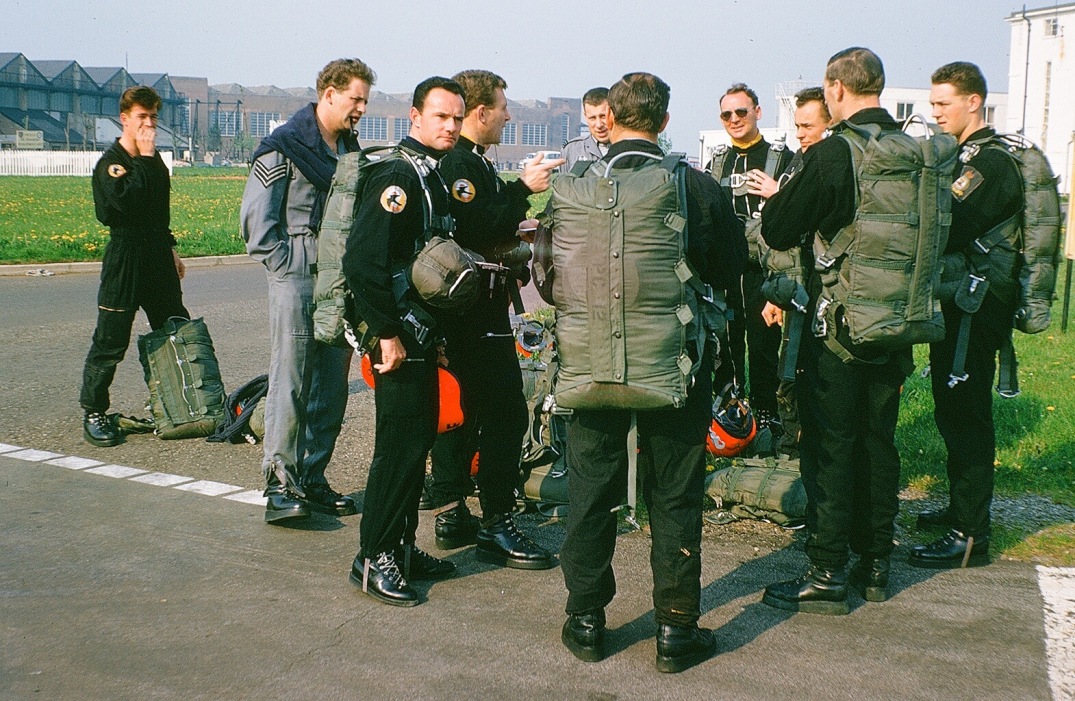
Abbotsford Airshow Vancouver August 1967
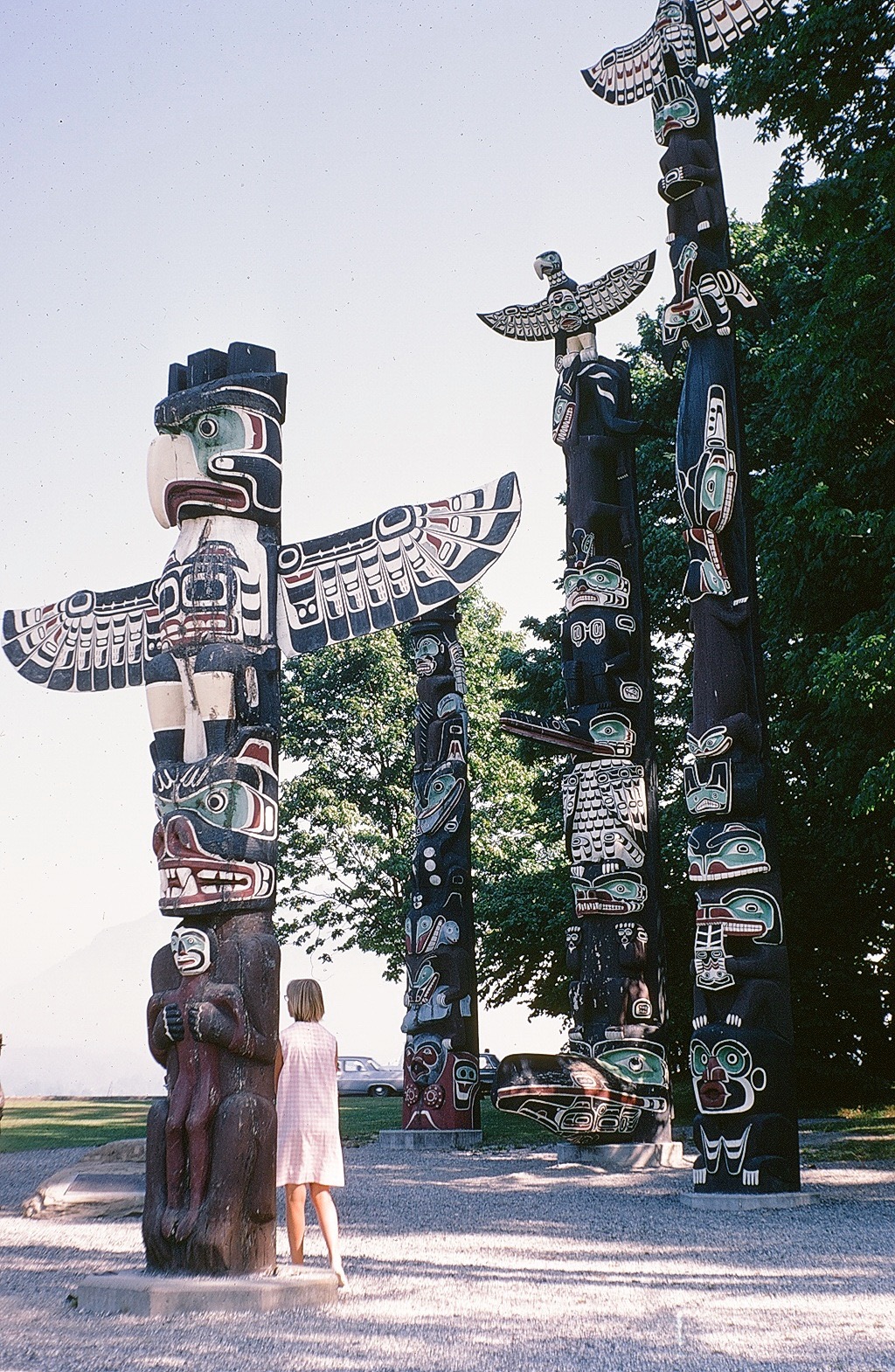
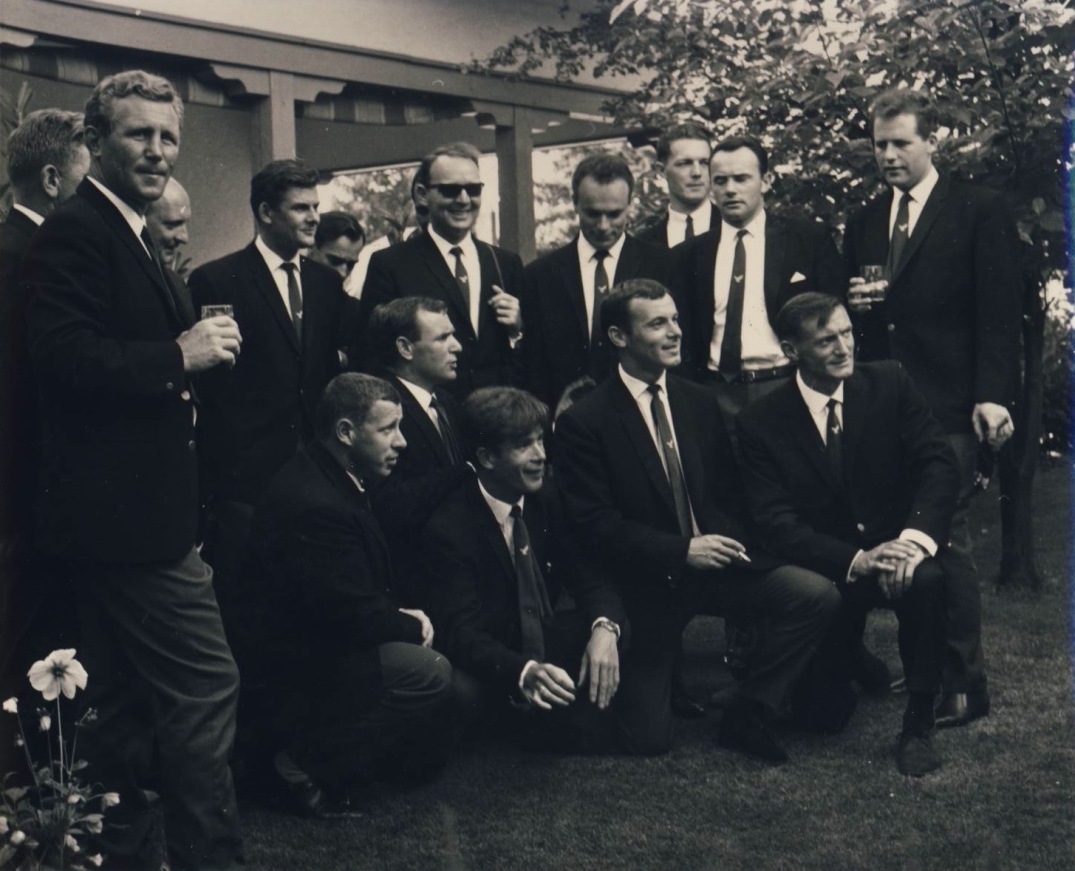

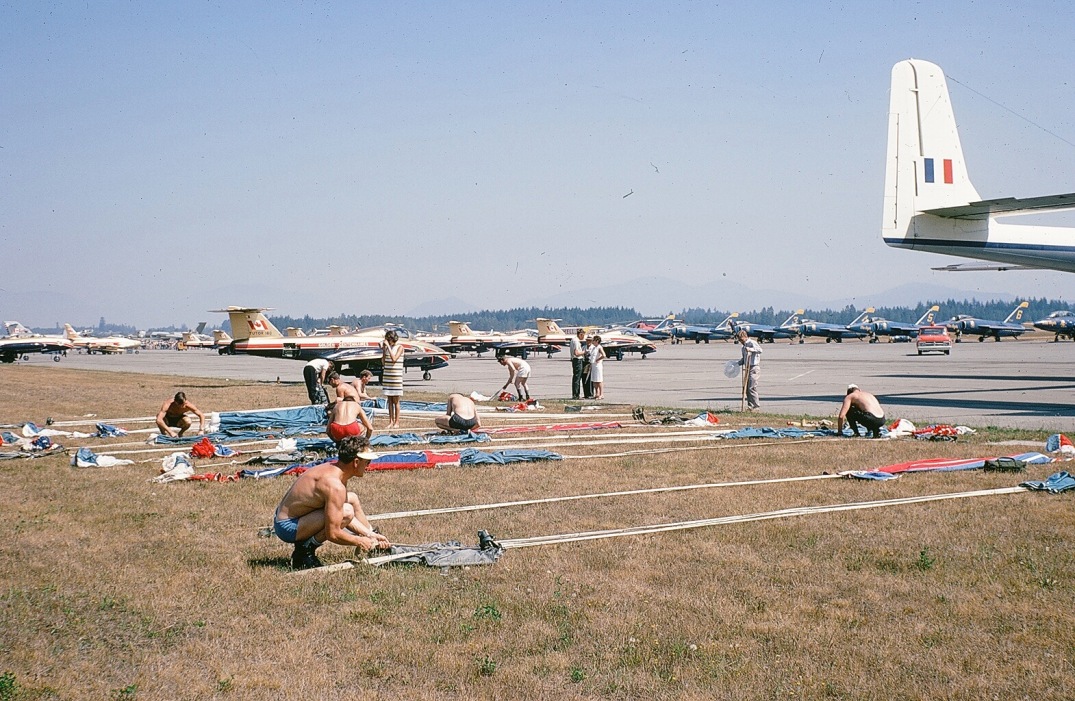

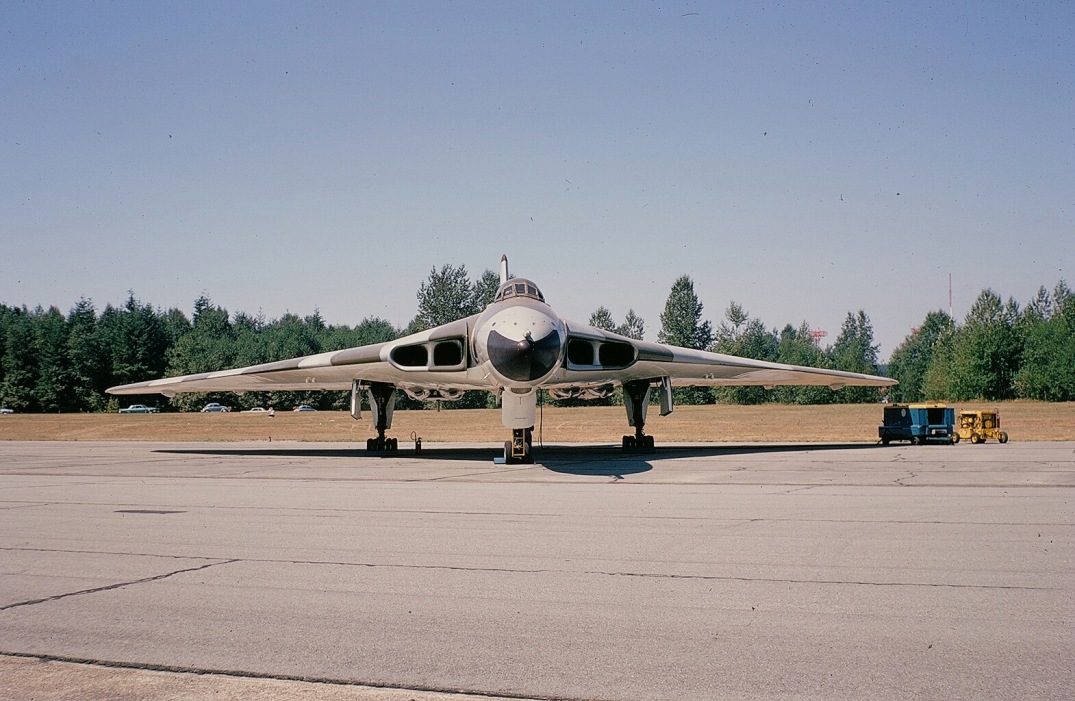



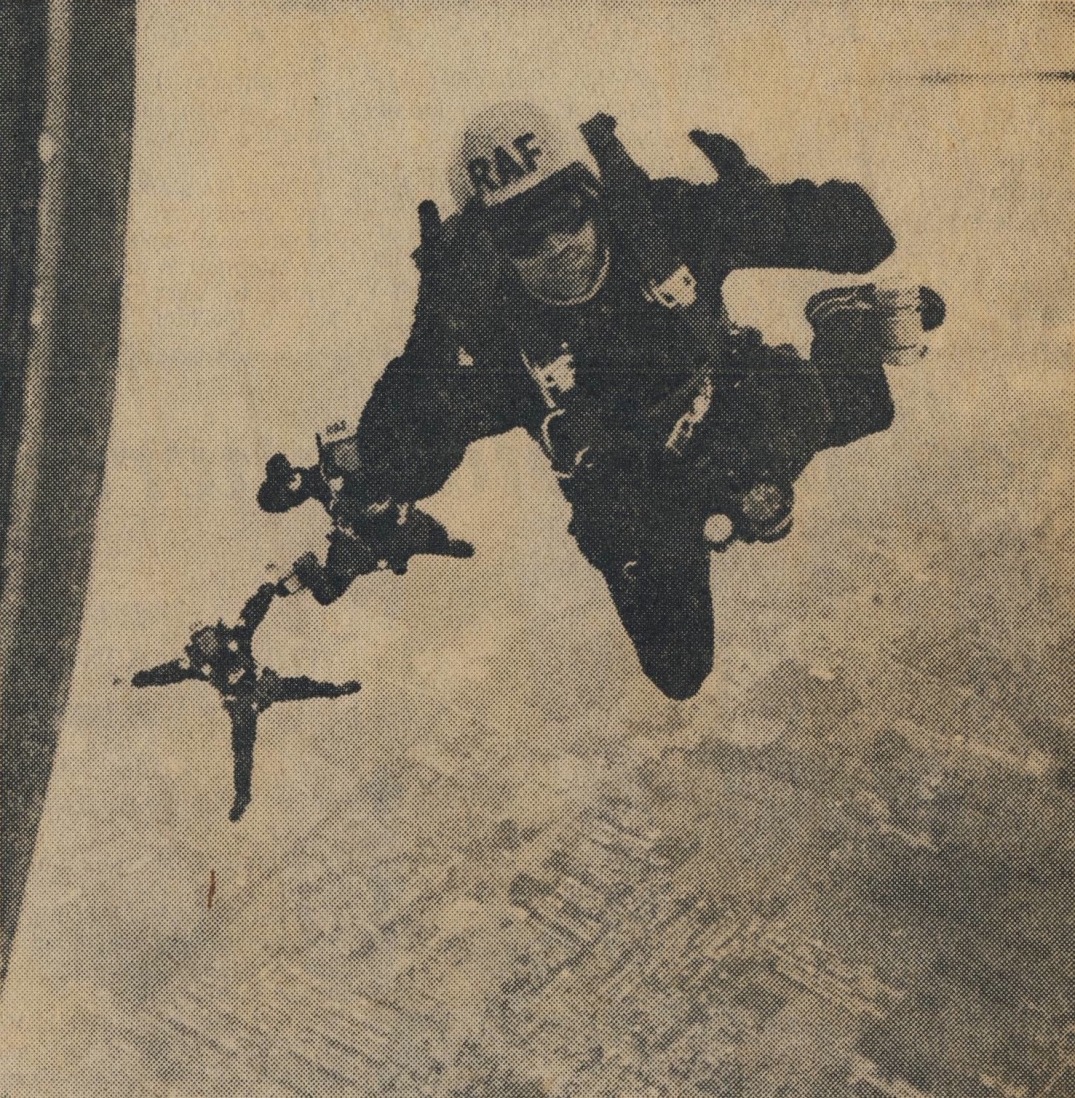
Falcons Display Team 1968

Team Leader Flt. Lt. Geoff Greenland, Coach F.S. Terry Allen
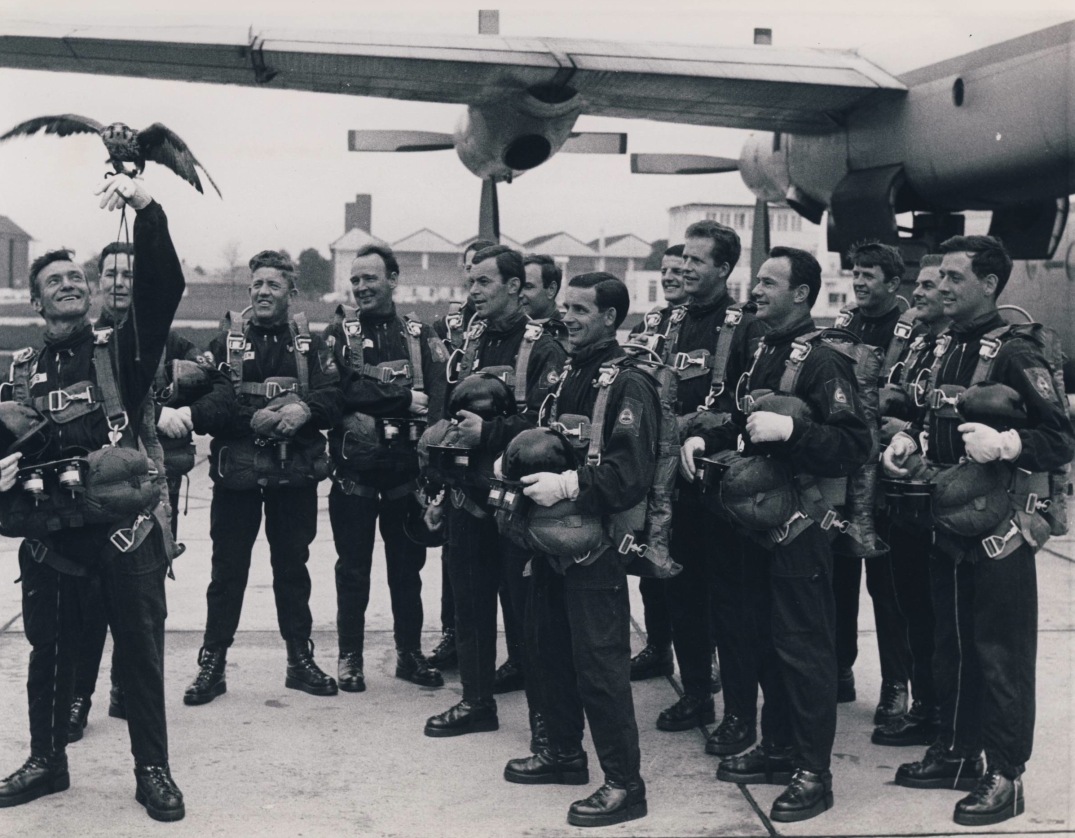
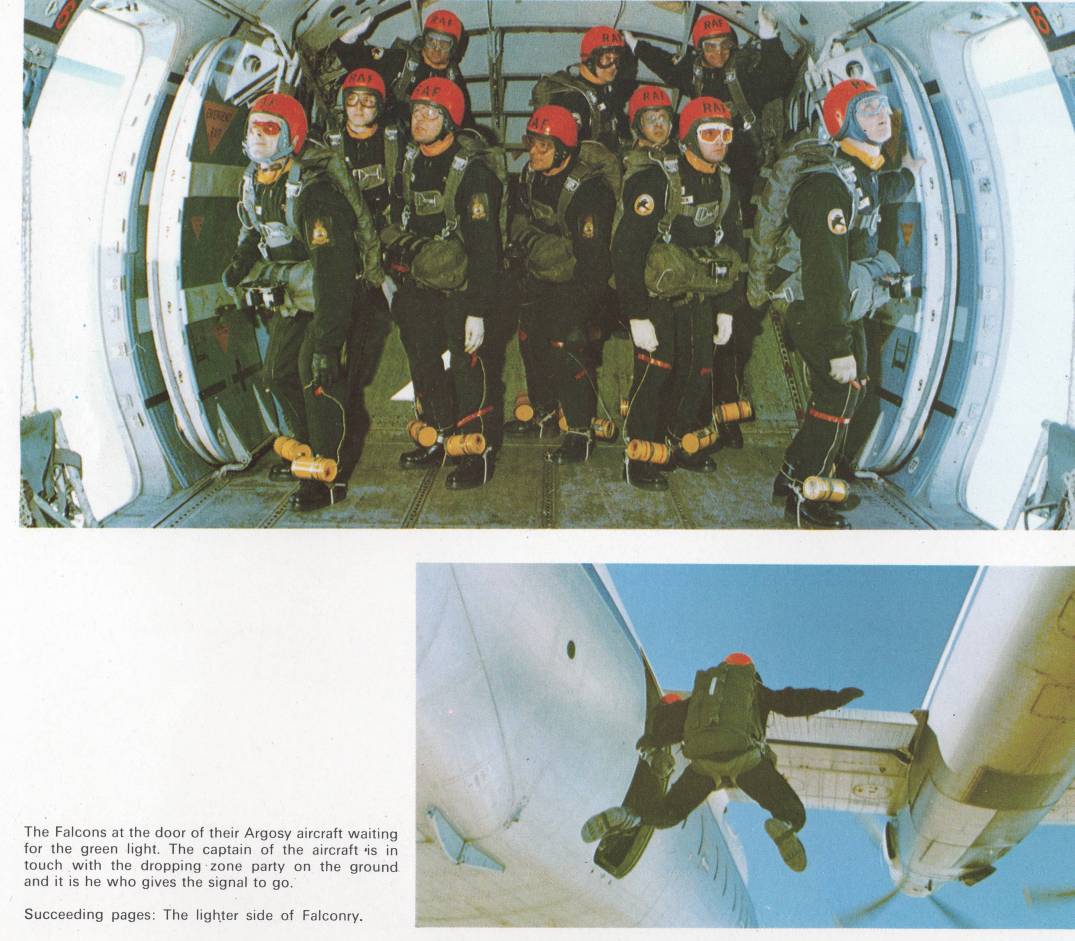

First overseas demo: en route to Italy May 1968

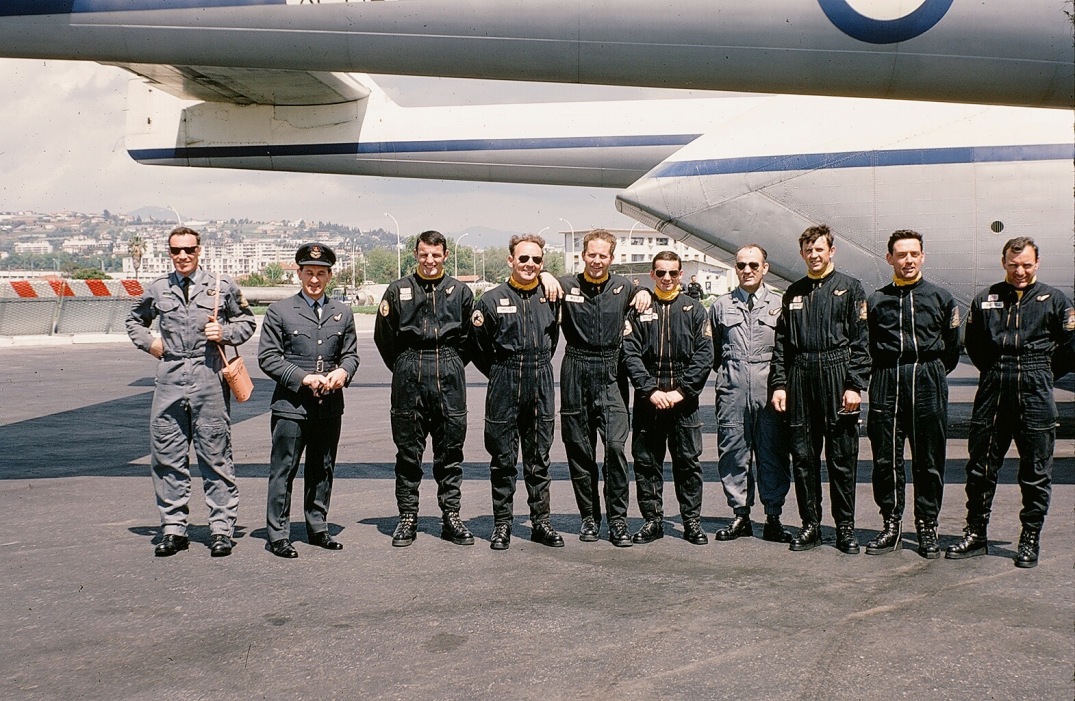
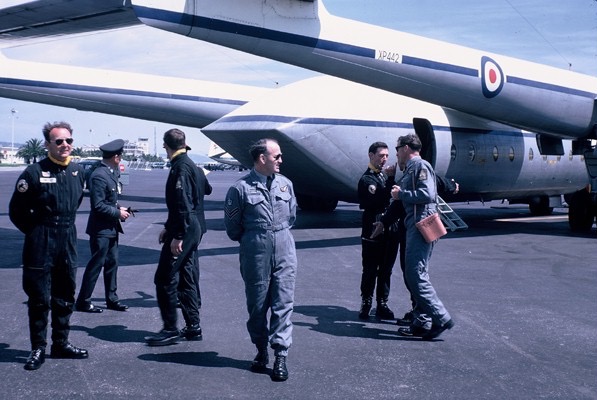
Demo 1 May 1968
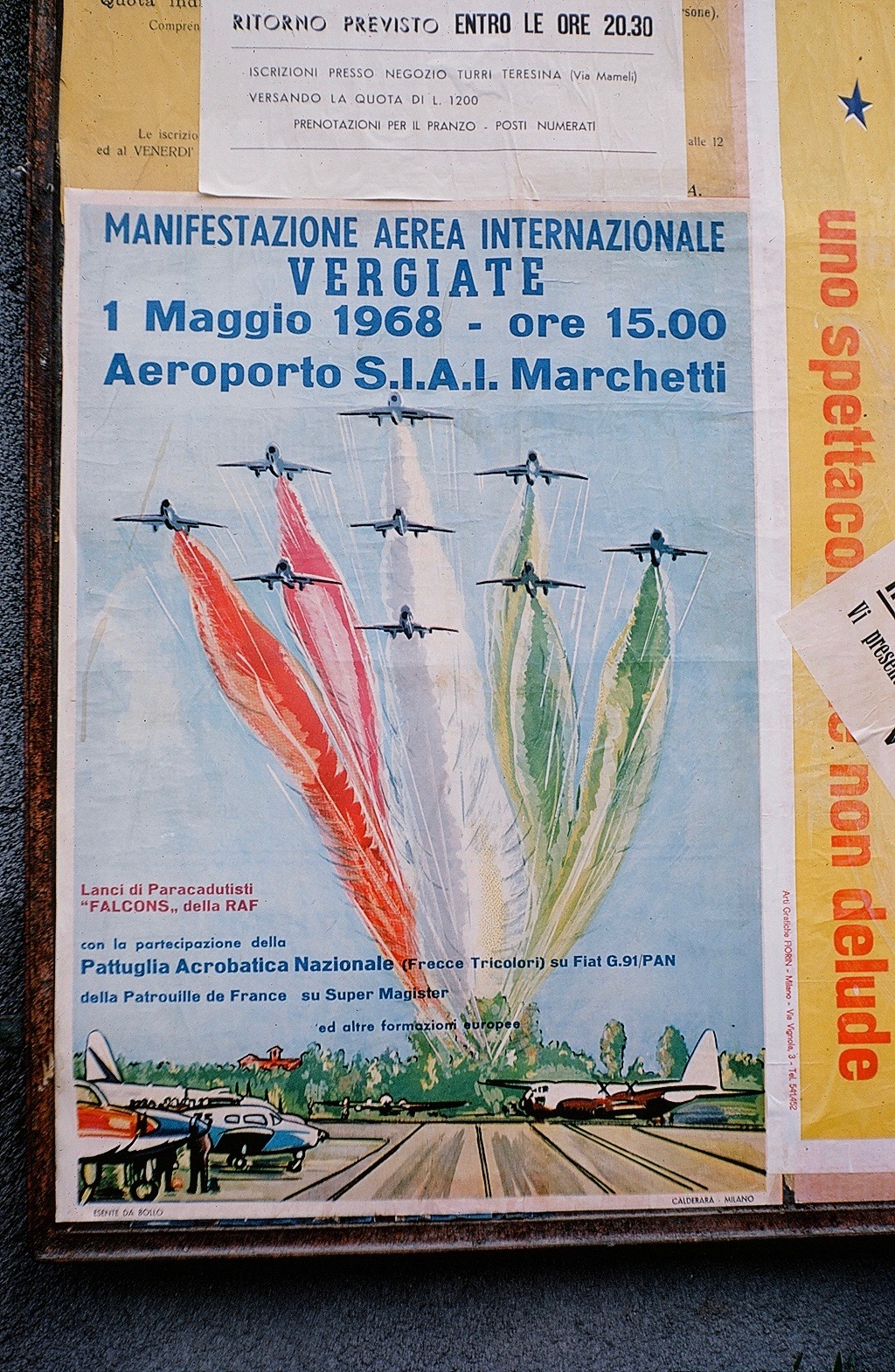
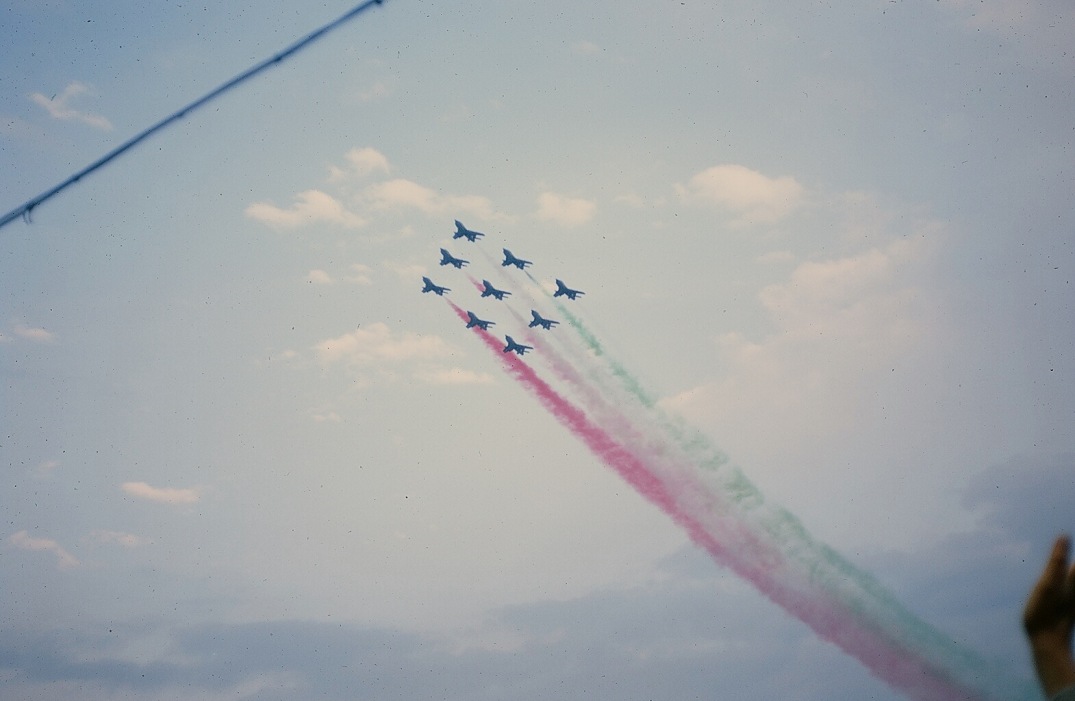
Demo 12 May 1968
This was the Biggin Hill Air Fair, and took place on the Sunday afternoon, the 12th of May. The weather was cold, low cloud and rain, with the smoke from the sodium flare horizontal across the airfield. The Argosy ran in and out of the cloud base and we all left at four thousand feet in a sim. six, over eight hundred metres to the southwest of the field. I was about number four; once out of the aircraft I dipped a shoulder, turned outwards and pulled on the number three’s extractor at around two and a half thousand feet. As I ran toward the twin marker crosses I could see the red and white roundels of our Para Commanders widely scattered and disappearing over the dispersals towards the wooded areas behind. The smoke was hugging the ground and from about eight hundred feet I saw one canopy touch down between the markers, remain inflated, and drag the helpless jumper across the runway towards the flight line where several of the display aircraft were running up their engines. The canopy hit the live prop of a Mustang, and instantly imploded into a whirling blue ball. From eight hundred feet I heard the bang as the engine seized and stopped. I was then carried by the squall over the runway, over the Mustang, over the dispersals and managed to find a few clear square metres behind the fire section to land in. As I returned to the tea tent I came upon Geoff Greenland wandering around looking pretty bemused with his finger strapped up. He had a small remnant of blue taffeta nylon in his hand, a section of his canopy, given to him by a young spectator. He was still in shock, only later understanding that it was he who had been dragged into the prop, which wound up his canopy and lines and pulled him in a couple of feet under the nacelle before the engine stalled. His container was shredded and the ripcord housing was completely severed by the propeller. It was that close. Once again, SOPs for Falcons Air Shows were amended accordingly… . Two weeks later, we flew out to Bari, on the heel of Italy, for what was to be my final Falcons demo of the year. From the end of May Geordie, Ken and I were excused duty to train for the upcoming British Nationals; in the event we made ninety-five jumps in the following five weeks. Not even the visit to Abingdon by Her Majesty Queen Elizabeth the Second for the Royal Review warranted our recall. We were out at Weston working on our style training.
(Brevet pp.87-88)
Intermission – IXth World Parachute Championships, Austria




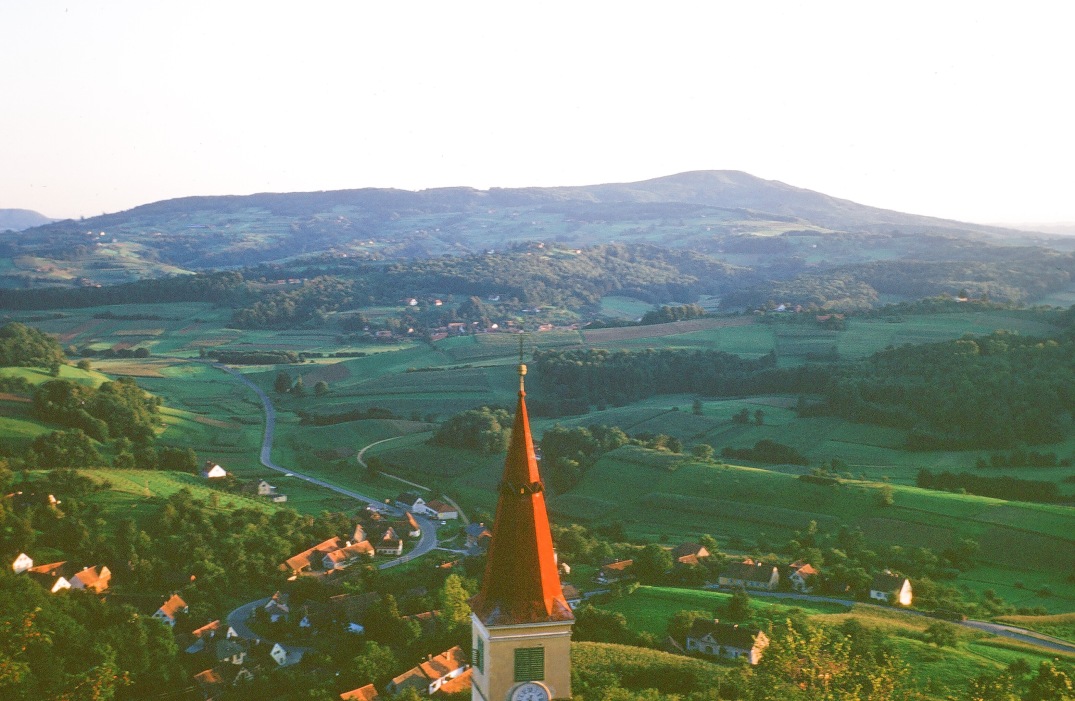
Falcons Display Team 1969
Team Leader Flt. Lt. Mervyn Green, Coach F.S. Terry Allen

Falcons Display Team 1970
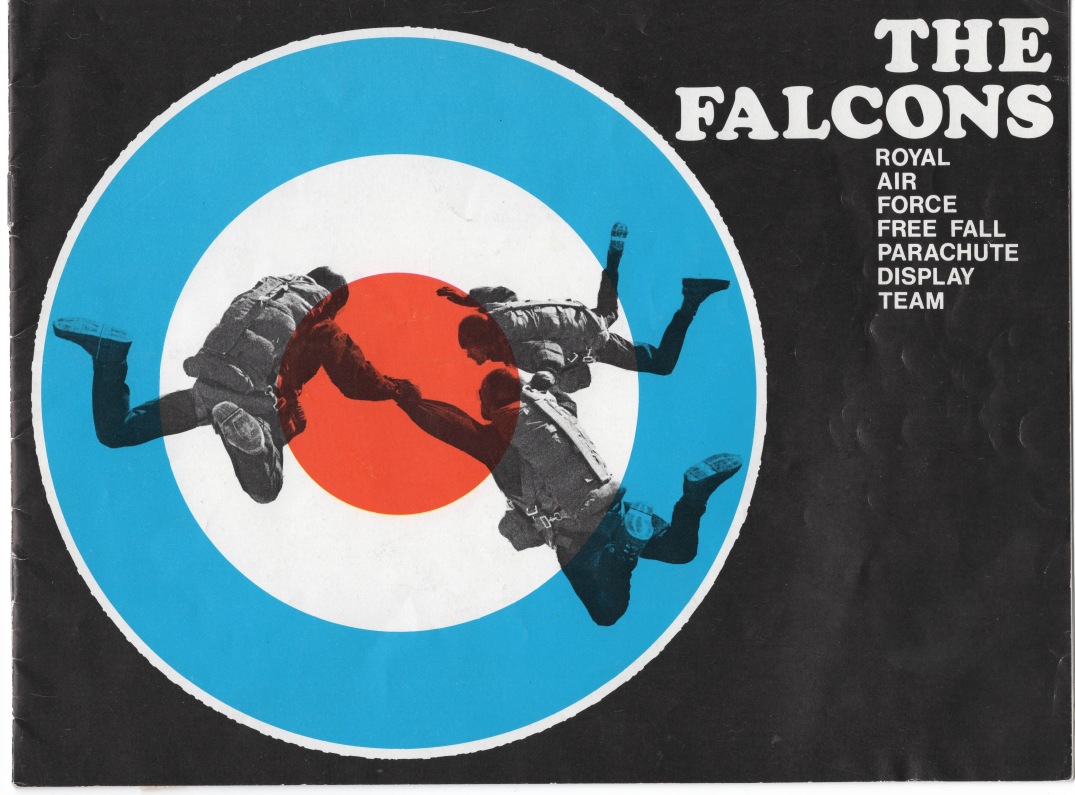
Team Leader Flt. Lt. David Cobb, Coach F.S. Doug Peacock
Come September and the PTS management decided I could be spared from Basic training, and moved me on to the Falcons under the new title of Team Coach. This job description suited me fine, and, as the first current competition jumper to be so appointed, I felt I had some experience to offer. My immediate boss was Team Leader Flight Lieutenant Dave Cobb, who had been number two to Mervyn Green the previous year. Our own number two was Flying Officer Alan Jones (ADG), and I considered myself exceptionally lucky and privileged to be able to work with these two Team Leaders over the next two years. As well as coach, I decided to take on the job of cine cameraman, with Allan Rhind looking after the still photography on the Nikon. The rest of the team were Pete George, Joe Featherstone, Sid Garrad, Les Allworthy, Doug Dewar, and Dave Ross from the 1969 team, plus newcomers Barry (Smokey) Furness and George Long. Making a comeback was Bill Cook, a member of the 1967 team. Harry Appleby was our permanent DZ man.
(Brevet pp 105-106)
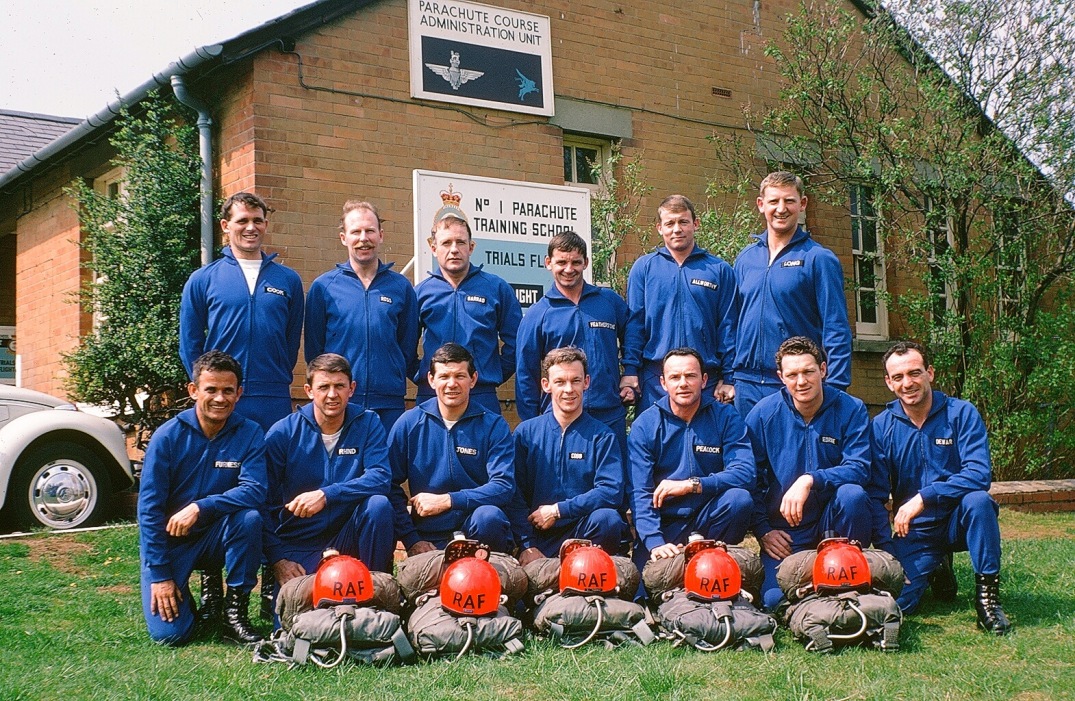
Following a Sharjah Detachment we returned to the UK in mid-November after twenty jumps apiece, then made another dozen or so before the Christmas stand down. In the middle of January, as there was not much parachuting weather, Dave and Al Jones decided the team should have a change of scene and organised a short detachment to the RAF Outdoor Activities Centre at Llanwrst in North Wales. This proved to be a most popular idea and a most successful break.
(Brevet p. 108)
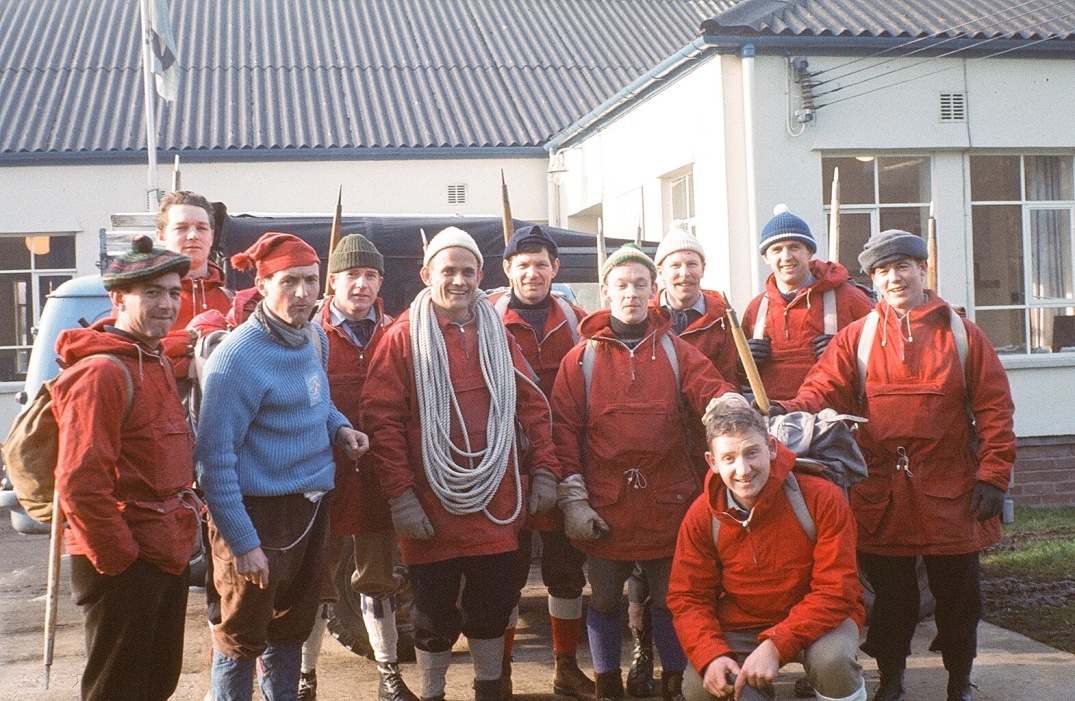

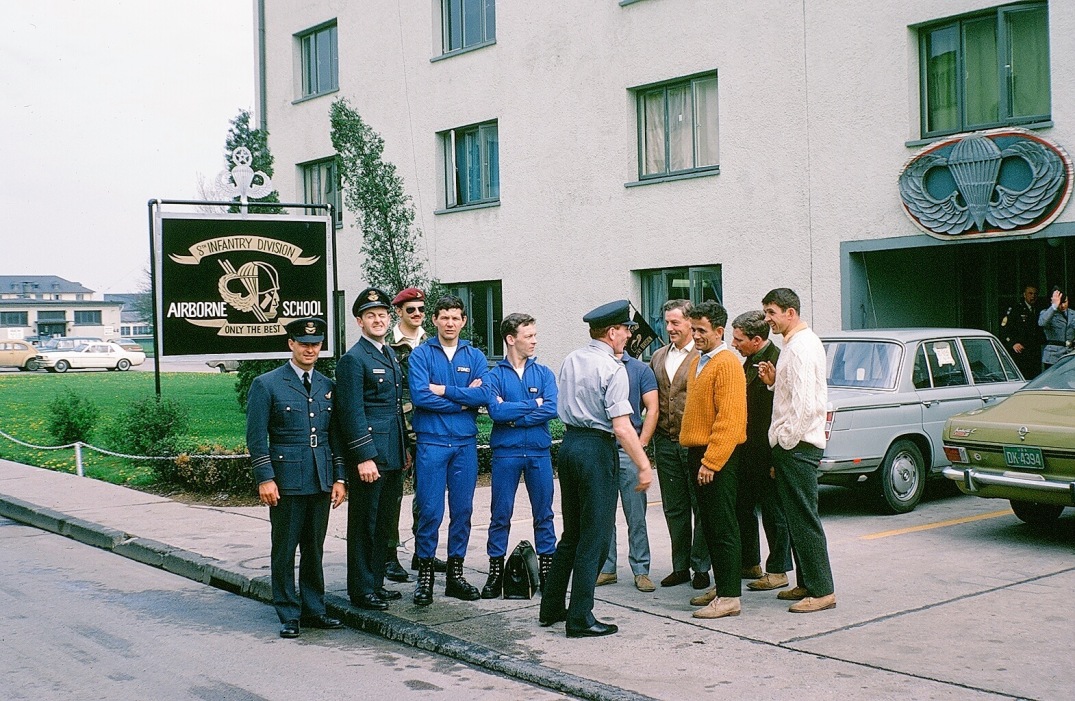

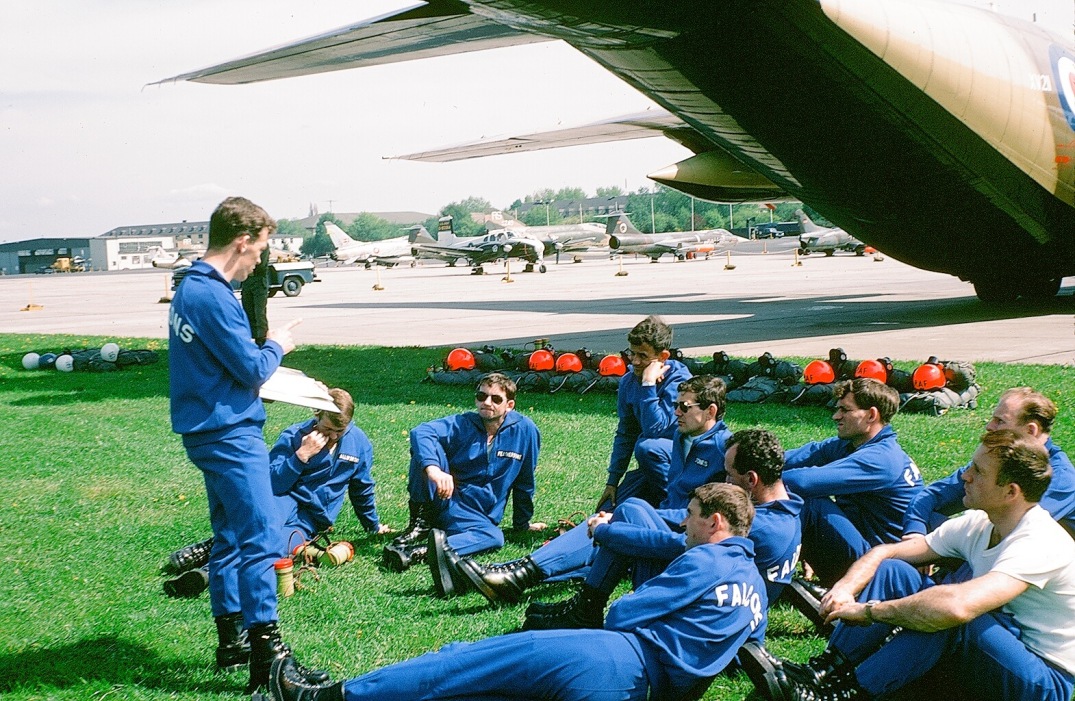
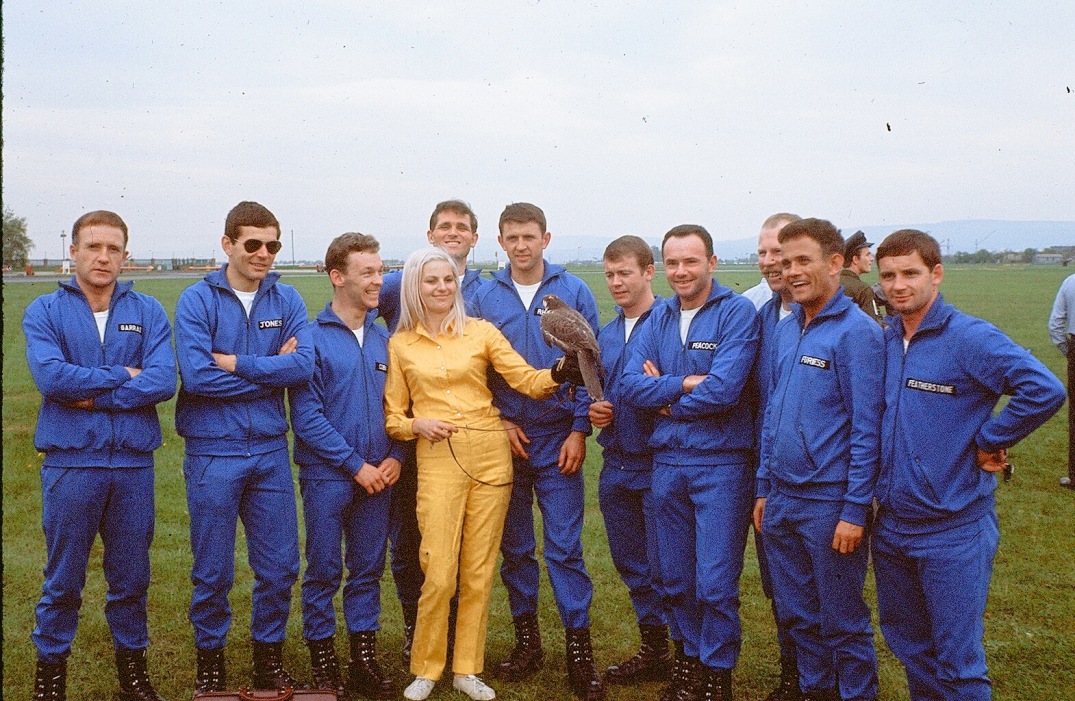
- Turnhouse June 1970. Sid Garrad, Alan Jones, Dave Cobb, Bill Cook, Alan Rhind, Les Allworthy, Self, Dave Ross, Smokey Furness, Joe Fatherstone.
Falcons Display Team 1971
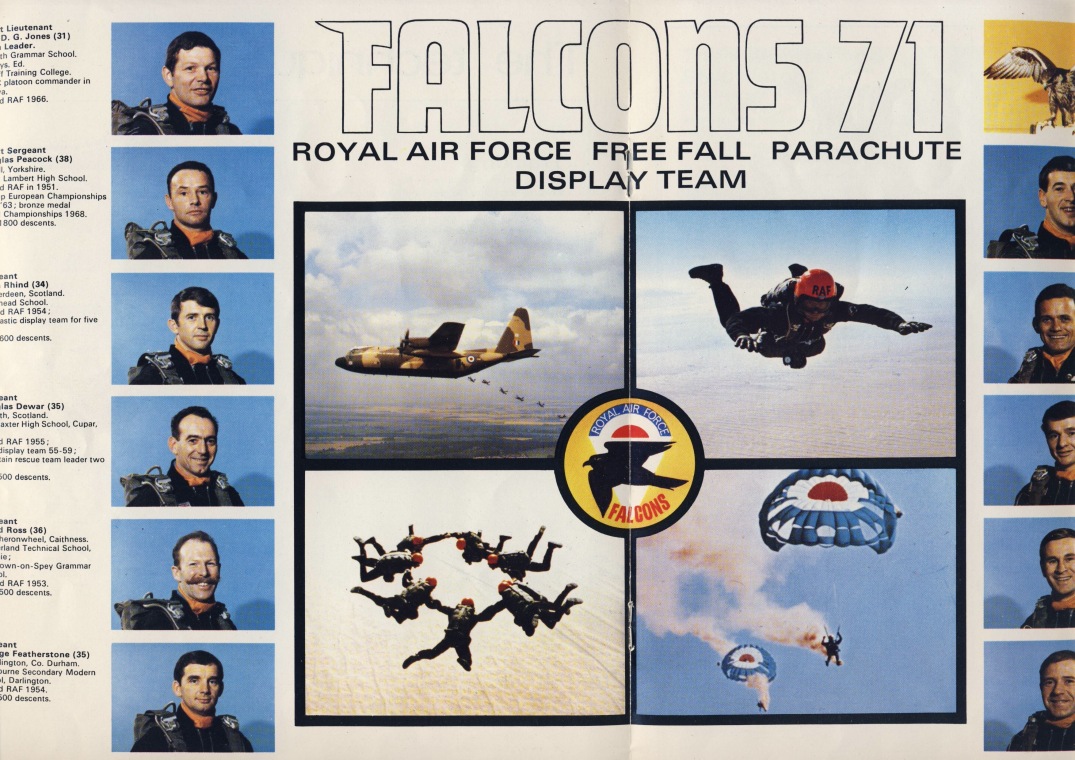
Team Leader Flt. Lt. Alan Jones, Coach F.S. Doug Peacock
Sharjah Detachment (Team selection) November 1970
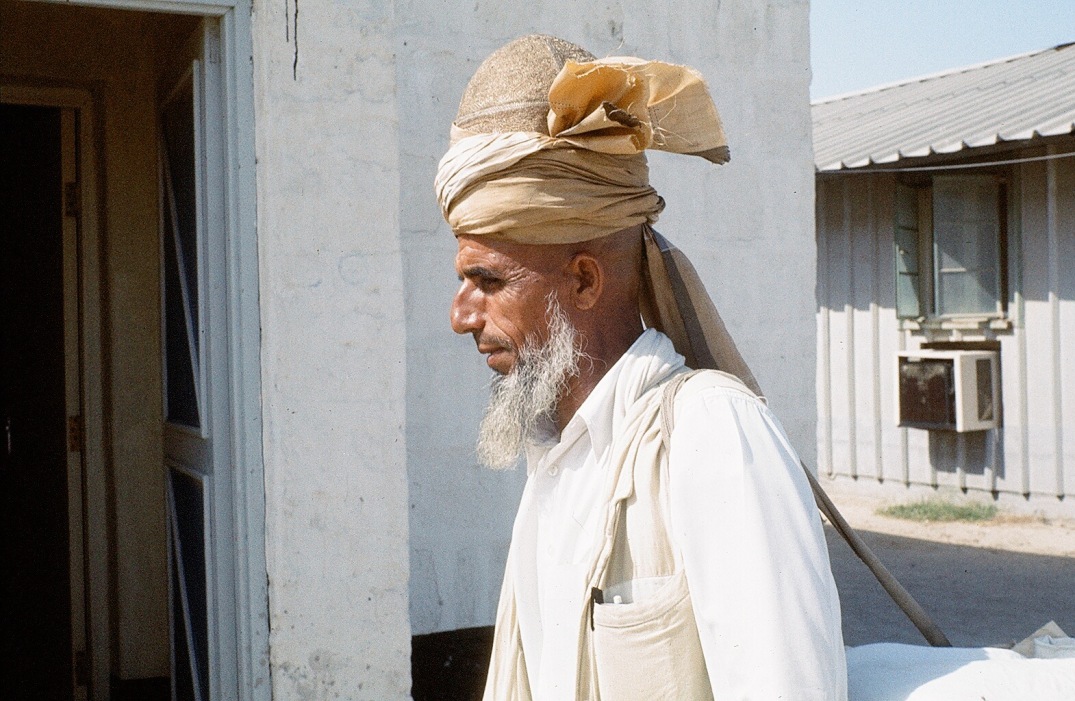
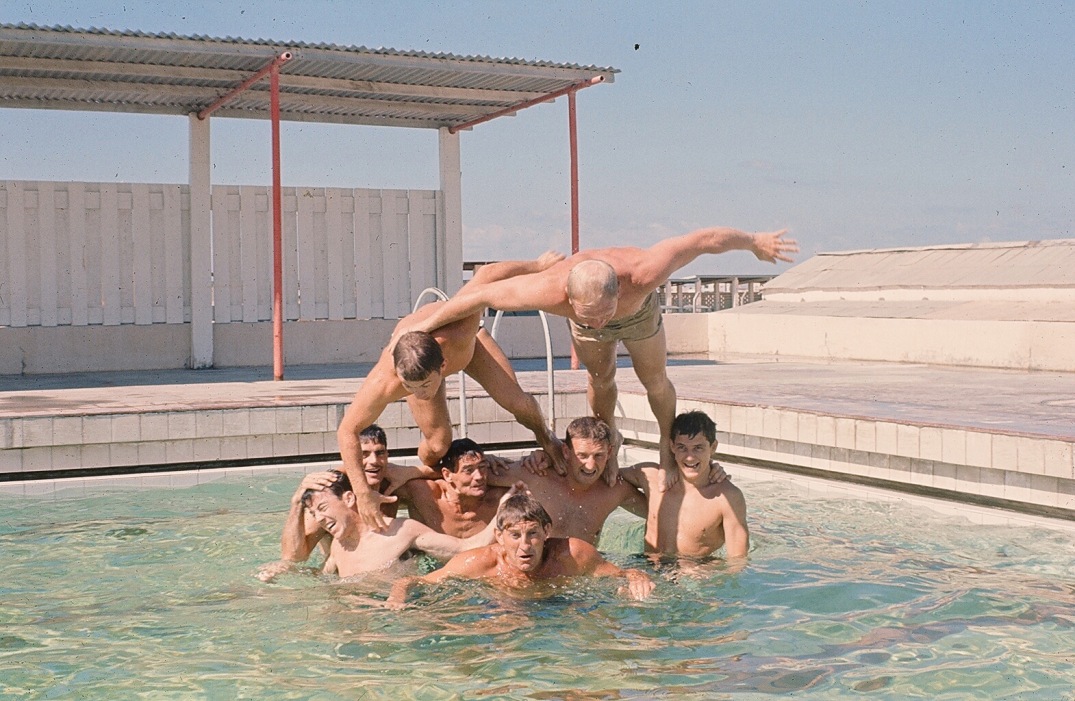
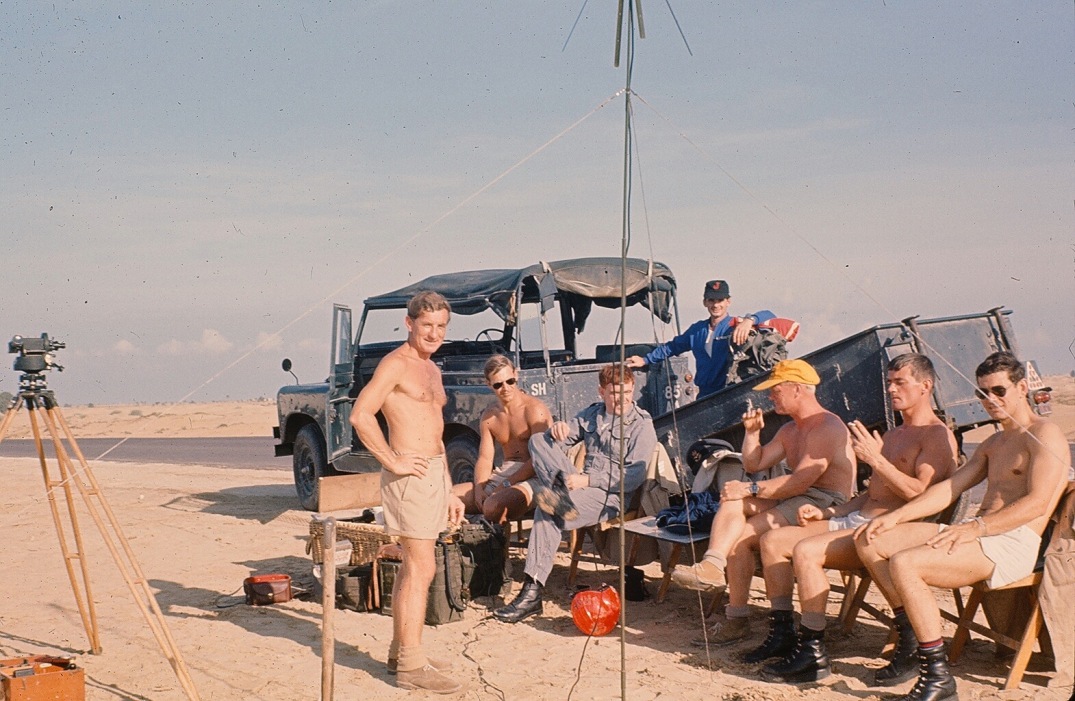


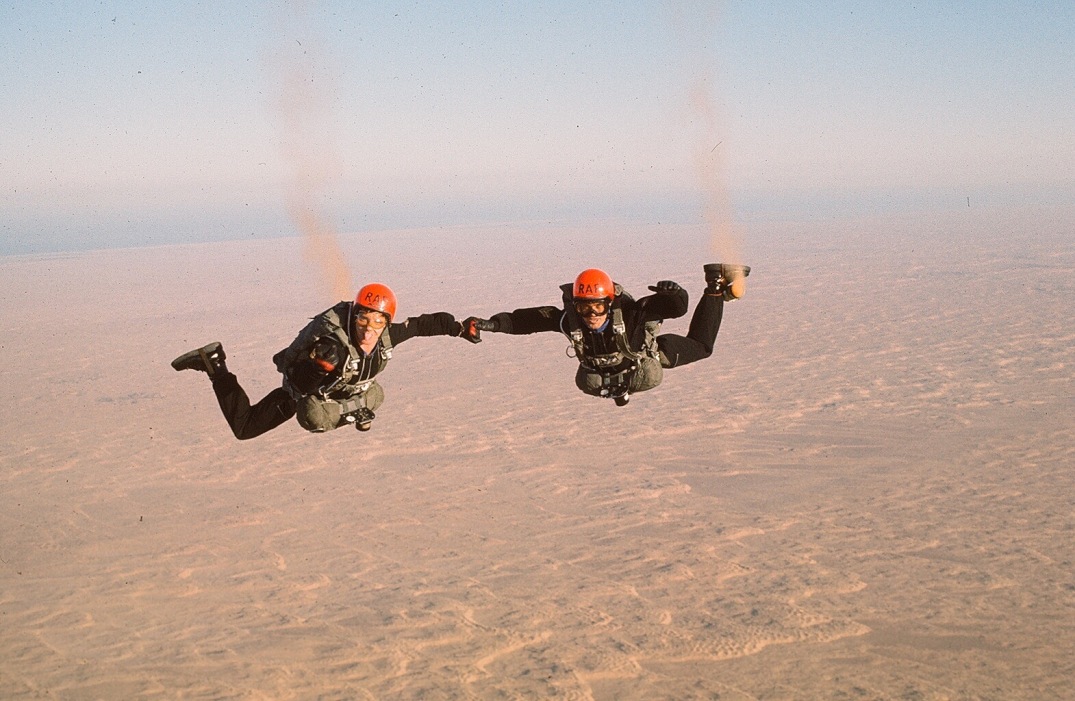
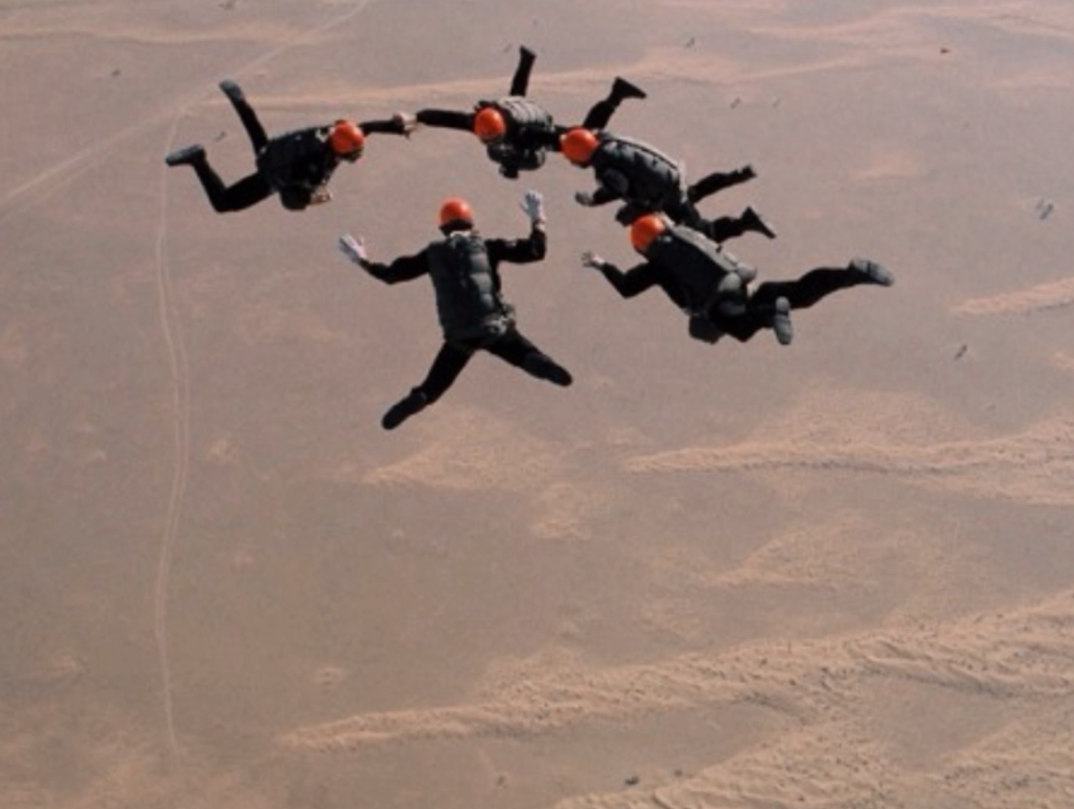

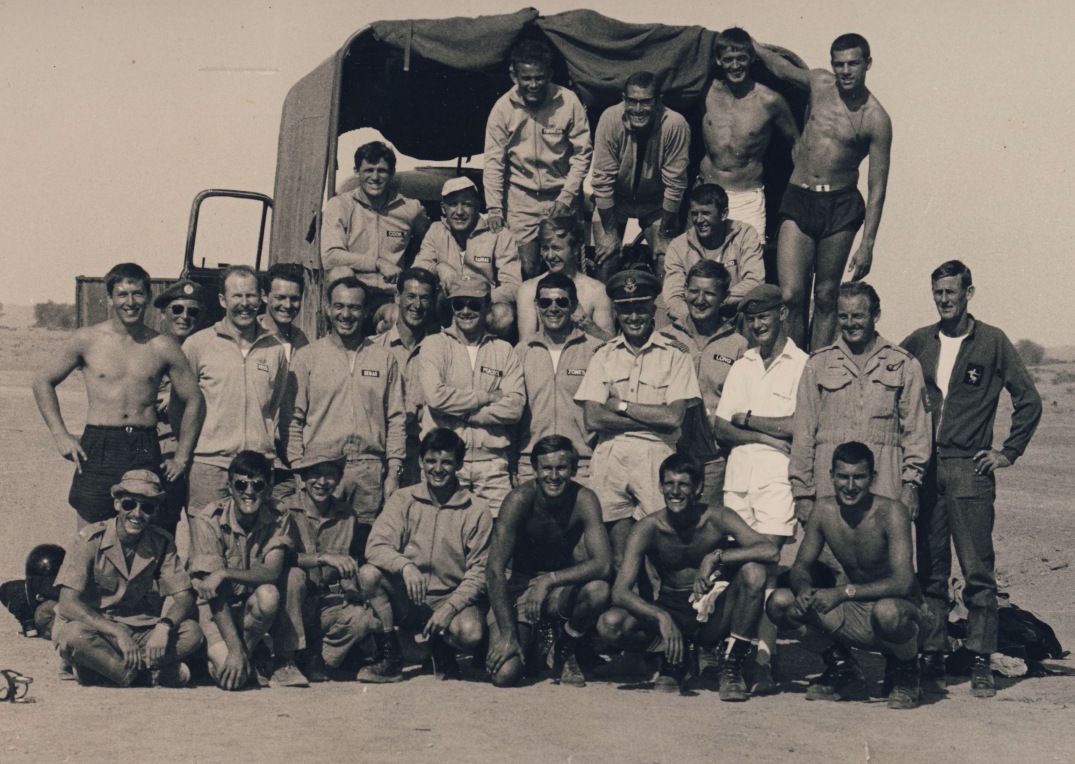
1971 – Oz to Hongkong
The 1971 Falcons team reported for duty in January. We were blessed with good jumping weather for the next six weeks, making some two dozen high jumps both on the airfield at Abingdon and at Weston. In mid-January Alan Jones called me into his office with the news that we had been invited to Australia to participate in the Jubilee commemorating the fiftieth anniversary of the formation of the Royal Australian Air Force. This was a most prestigious invitation beyond doubt, and it was arranged that for the first three weeks we should train with the Parachute Training Flight based at RAAF Williamtown, in New South Wales. The detachment commander was OC PTS, Wing Commander Norman Johnstone, with Ron Ellerbeck, Frank Weatherley and Geordie Maguire assisting John Parry and Harry Appleby on the DZ. An MOD film unit was concurrently shadowing the Falcons, and Ron was given a 16mm cine camera to take exit shots and also shoot ground footage on the detachment.
We flew out from Lyneham on Monday the 8th of March in a C130 on our six-day trip down under. The freight bay was packed with kit and piled high with cardboard boxes containing the parachutes. Some of the guys rigged hammocks, and there were the inevitable card schools atop the boxes. The first leg was six hours to Akrotiri to refuel, then a further five to night-stop in Muharraq (Bahrain). Next day was seven hours to Gan in the Indian Ocean where we enjoyed a morning swimming and snorkelling. From Gan we went on to Changi (Singapore), thence the next day another six- hour leg to RAAF Darwin in the Australian Northern territories. Once disembarked, we enjoyed the hospitality of the Sergeants’ Mess at their monthly Guest night, (over which event it is deemed prudent to draw a discreet veil), before embarking on our final two thousand mile leg across the barren Northern Territories, flying over Ayres Rock, into New South Wales and our final destination of Williamtown.
(Brevet pp124-125)

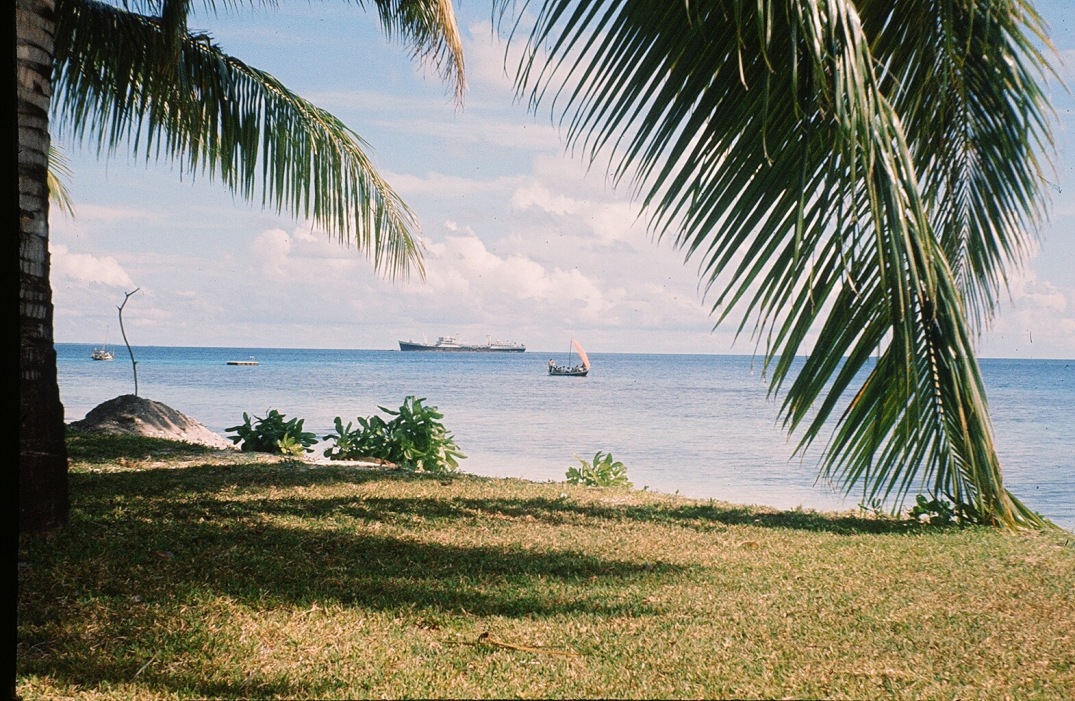
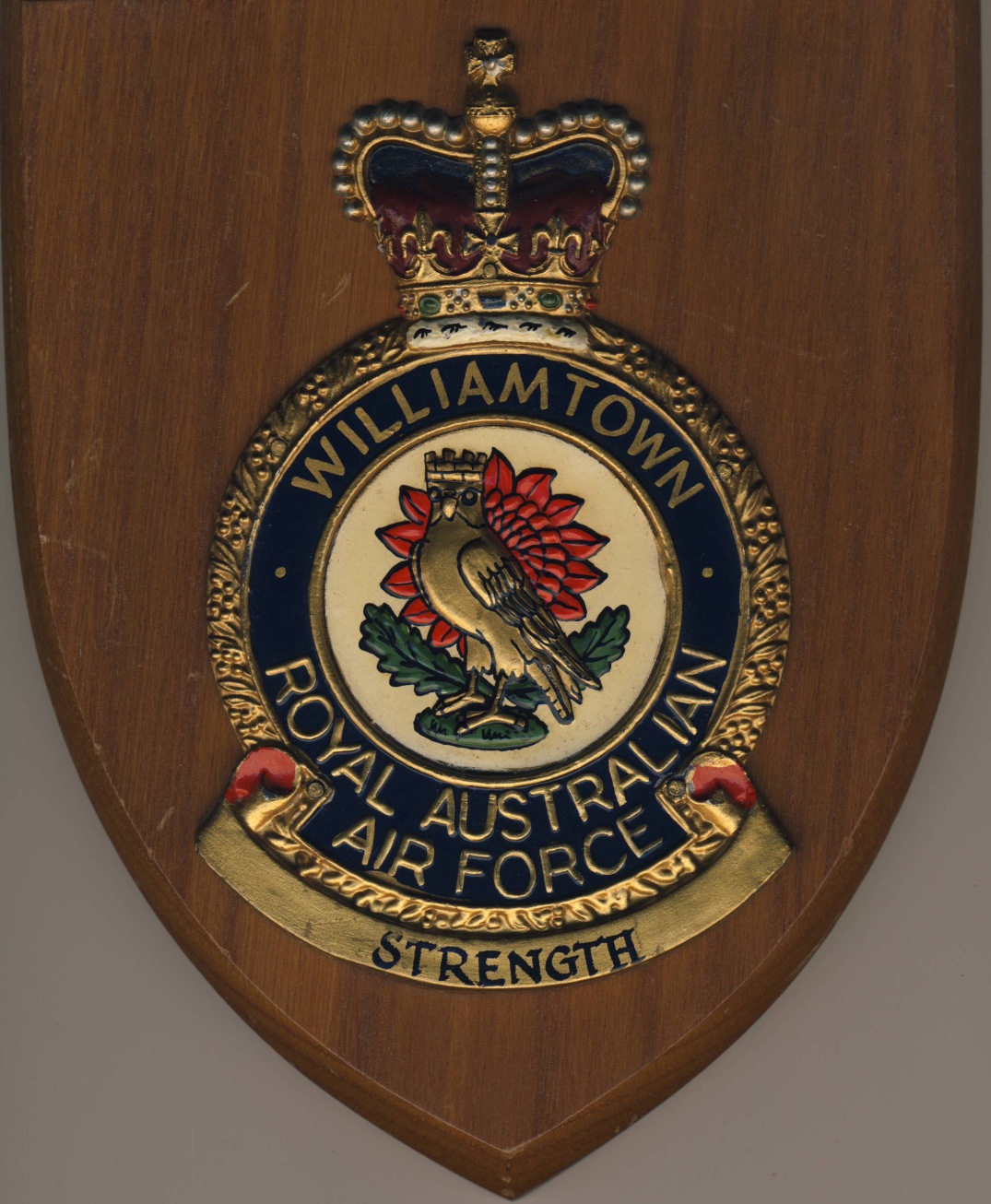



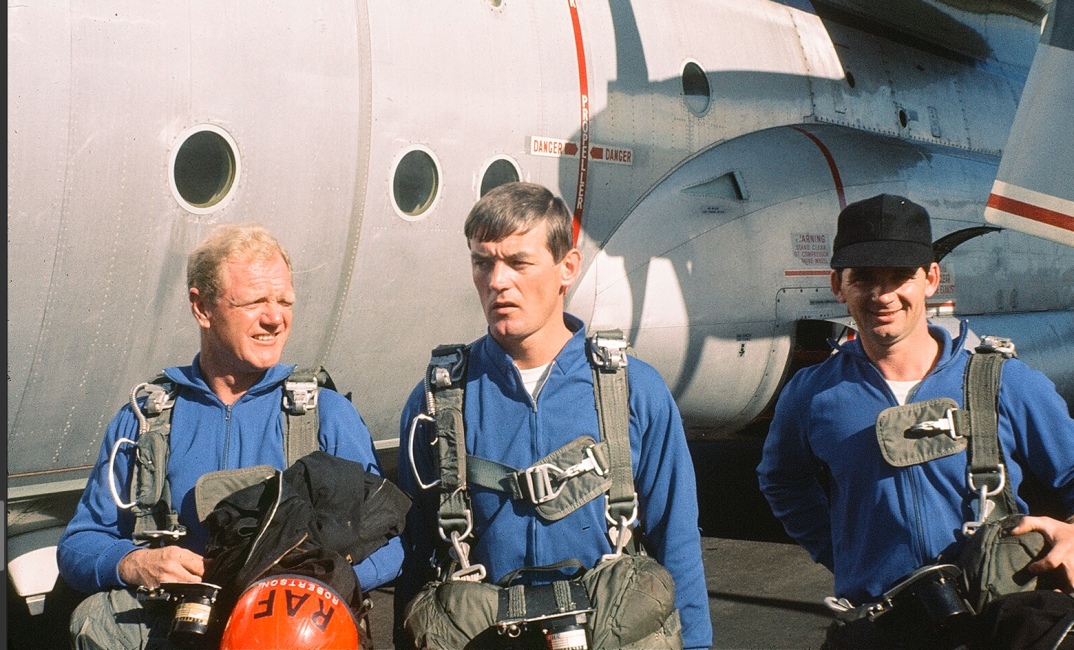
Hong Kong December 1971

The final act of Falcons ’71 was played out, as had been the first, many leagues from home. We had been invited to Hong Kong to participate in the 1971 Festival, a ten-day trade and cultural pageant which engendered massive local publicity. We flew out from Brize on the 16th of November in a VC10 for the six thousand mile trip via Akrotiri, Gan and Changi, finally touching down at RAF Kai Tak on the Kowloon peninsula after nineteen hours airborne. The Falcons had some high-level support on board; with the team were the Abingdon Station Commander, Group Captain Bill Green, and OC PTS, Peter Hearn who, naturally, had brought his jumping boots with him. The MOD Film Unit were also there in force, as were the Royal Air Force Central Band. Barry Furness had left the team mid- season, having re-mustered to loadmaster; Harry Parkinson had taken his place and had slotted in effortlessly.
We settled once more into the Sergeants’ Mess at Kai Tak; the first few days were taken up with introductions, TV interviews and publicity shots both for the local press and for our own MOD cameramen, with falcon Fred prominently on show. We were scheduled to jump at various venues on the island, as well as several up-country in the New Territories. The centrepiece of these demos was the Government Stadium, set in a natural bowl with steep cliffs on three sides and a main highway on the fourth. Six times we were to jump there and P hour was to be 22.00 hrs, our first night demos. The met man told us that the winds at two thousand feet would be in the region of twenty knots, and that anabatic and katabatic turbulence within the bowl was likely to be pronounced. We nodded sagely in agreement, then went away to find out what he meant (updraughts and downdraughts). We went to look at the place the next morning and, as can be seen in the photo, this first viewing provoked some thoughtful expressions among the brethren. Before we did any jumping, however, we also decided to recce and photo- graph all the Drop Zones from the air at two thousand feet; as usual it all looked easier from upstairs. The only proviso we decided was to put an eight-hundred metre limit on the spot for the night jumps.
(Brevet pp.132-133)
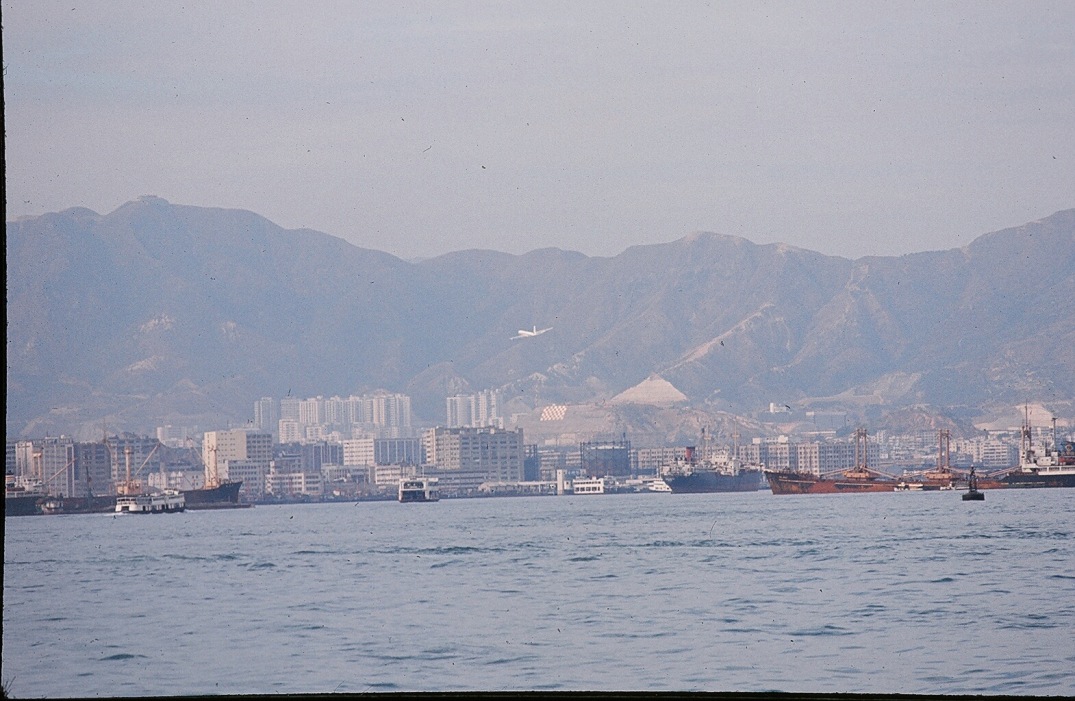

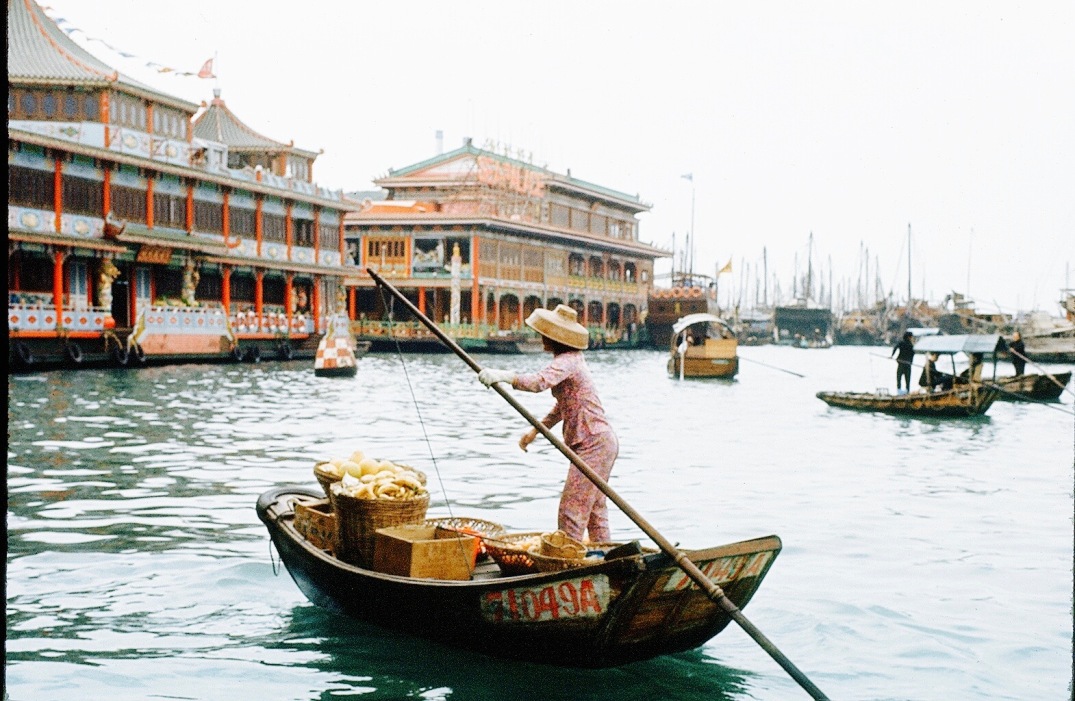
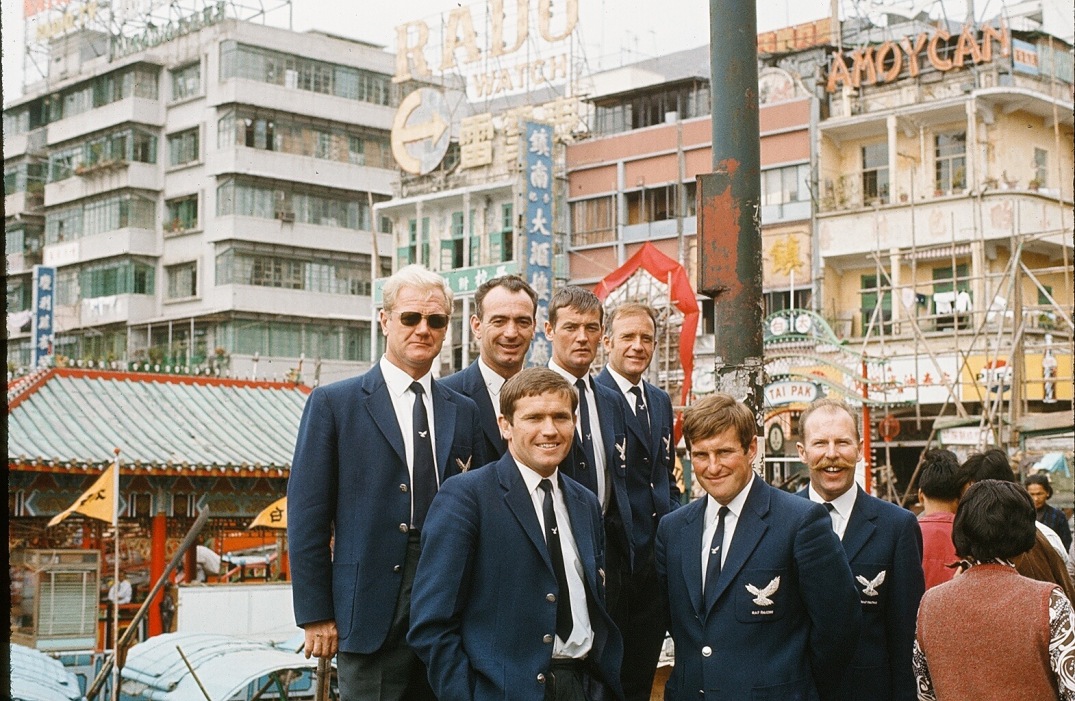
Down to business
On the Wednesday we did our first rehearsal in daylight into the Government Stadium. As already mentioned, this was quite a tight area and we ran in at 3,300 feet with three Whirlwinds in line astern at one minute intervals, with a strict briefing to observe good stack discipline. As usual, we were reliant on the balloon/theodolite to provide wind information, the balloons being tracked at night by the attachment of a small candle suspended below each balloon. The day rehearsal went well, so on the Thursday we followed up with our first rehearsal at night, also without complications. Thus reassured we carried on with a high rehearsal into the Happy Valley racecourse on Friday, and a high demo for our hosts on to the airfield at Kai Tak on the Saturday. We jumped on Sunday afternoon at Sek Kong on the mainland, then prepared for the official opening demo at the Stadium that evening. I was designated to spot from the lead aircraft. As I noted at the time, in an extract I wrote for Peter Hearn’s “Falcons”:
“We waddled out to the choppers at Kai Tak about nine o’clock in the evening for our first demo, festooned with ‘chutes, life jackets, smoke brackets, torches to illuminate the canopies when they were open, lights to illuminate the altimeters – all the paraphernalia pertaining to a night demo close to deep water. As the aircraft flew over the harbour towards Hong Kong the view from the open door was dramatically spectacular; the whole waterfront of Wan Chai was a blaze of lights with bejewelled towers jutting up from the illuminated ribbons that were the main highways, while the mountainside of the 1600 foot Peak loomed in the background, totally black.
From the lead chopper I could see at least six floodlit stadiums. Which was mine? I hoped the pilot knew… . Then I recognised it as he made straight for it. I started my stopwatch as I left the aircraft over the mountainside about 800 metres past the stadium, tucked up into fast fall, and pulled on exactly eleven seconds. As the canopy came out, I saw the shape of Snowy going past me, still in freefall. Wrong. He should have been above me. He opened below me and started running hard for the stadium, with the sodium flare in the centre and its smoke blowing towards us. Wrong again, especially as I was by then right over it at 1000 feet facing into the upper wind and being blown backwards towards the harbour. Worrying moments, but all at once, as we came below the level of the ridgeline, the 20-knot uppers decreased to zero and we were left with a gentle approach to the bowl and we could take those Para Commanders just wherever we wanted. As we came into the radius of the stadium lighting we pulled the smokes and slid comfortably one after the other into the centre circle of the soccer pitch in a series of light running standups. Judging by the din, thirty thousand highly vocal Orientals thought it was magic. We were a bit impressed ourselves… .”
(Brevet pp.133-134)
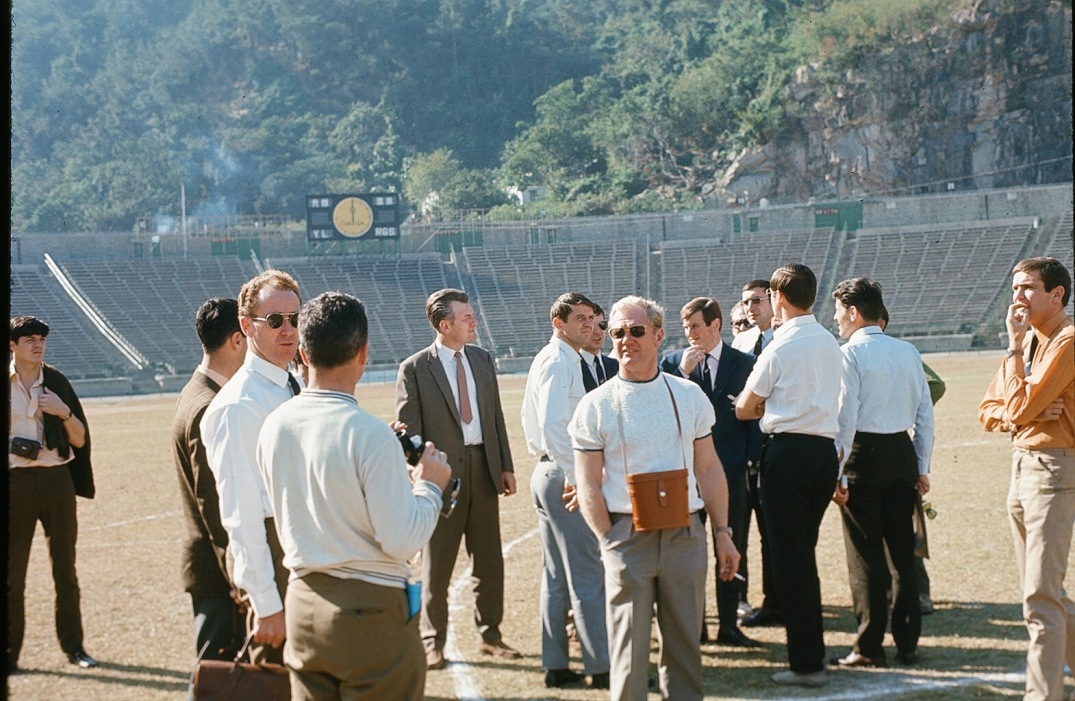
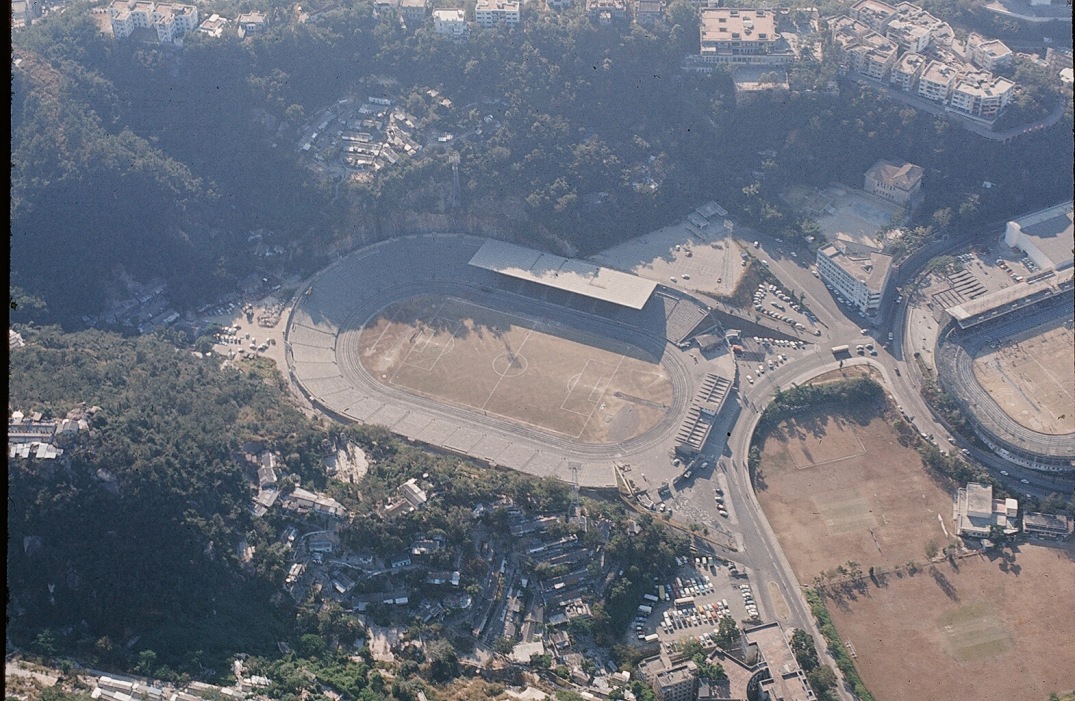
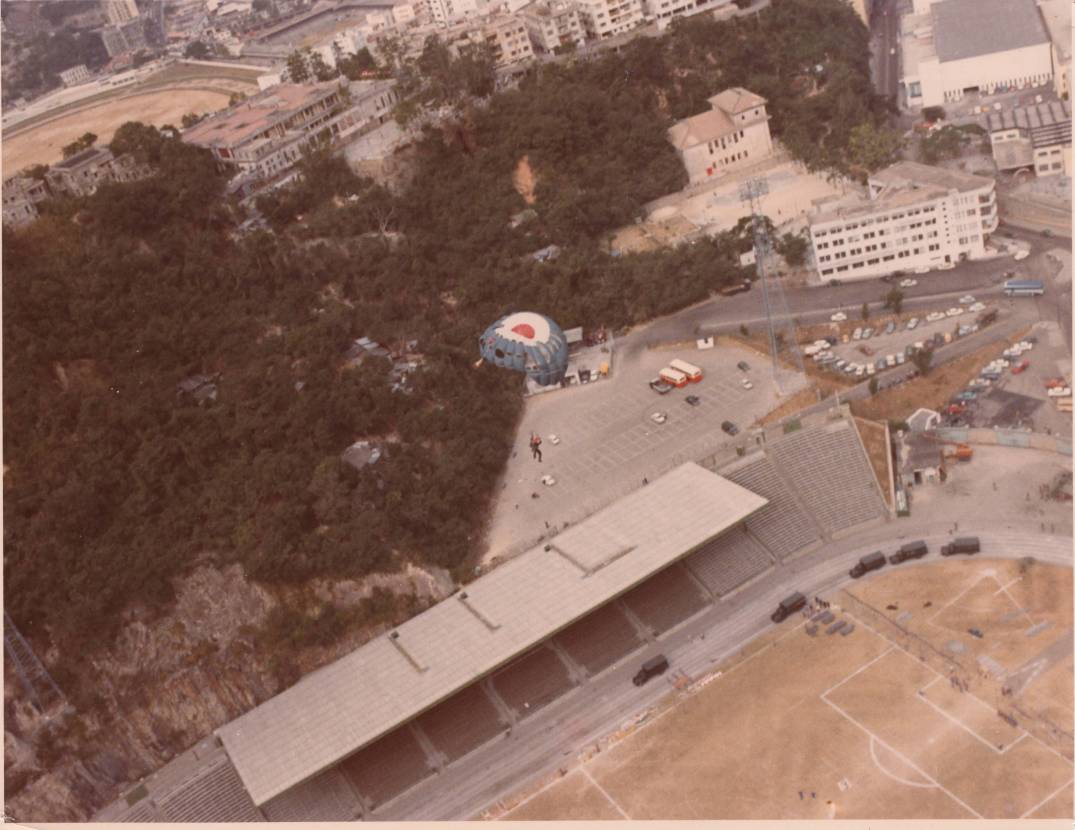

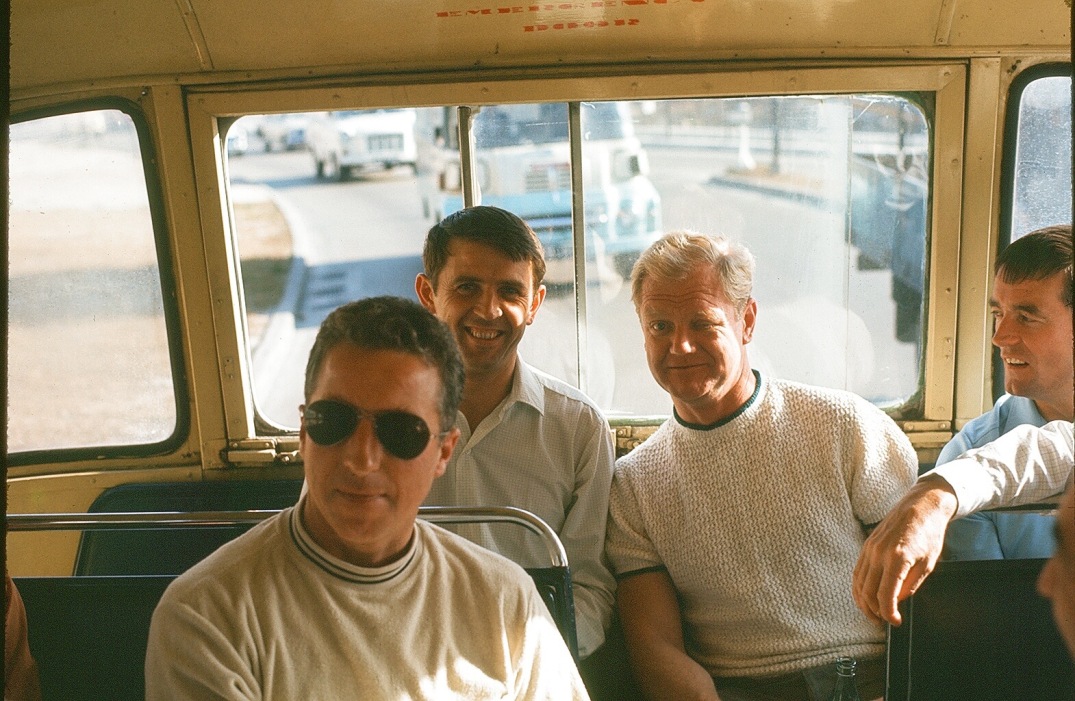

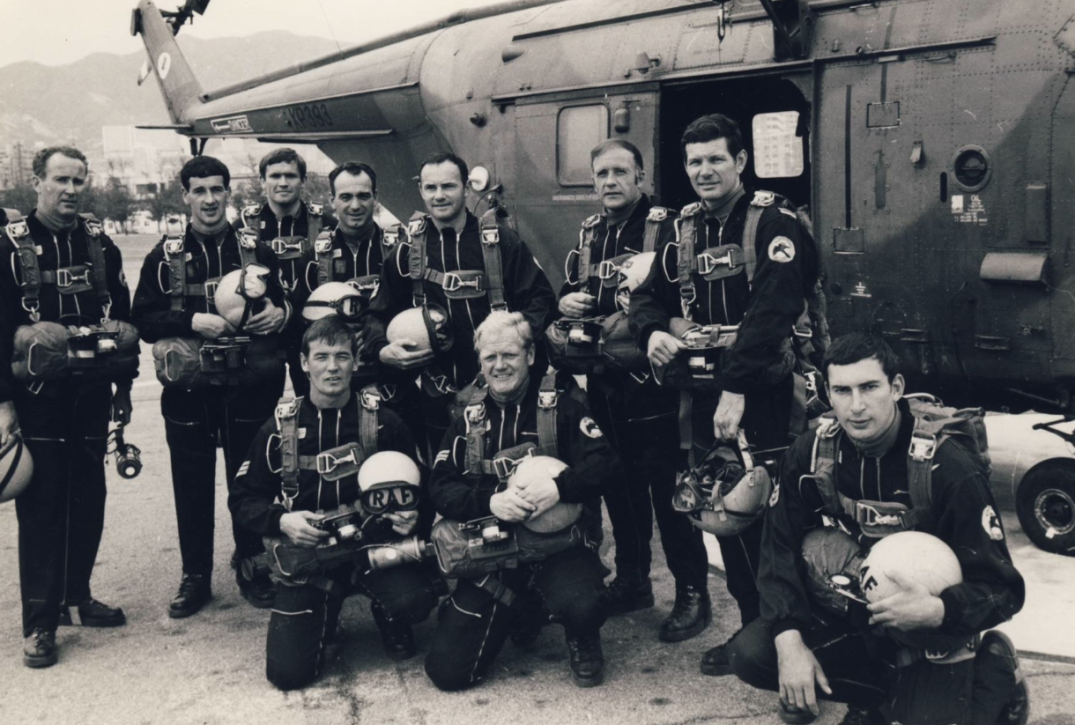
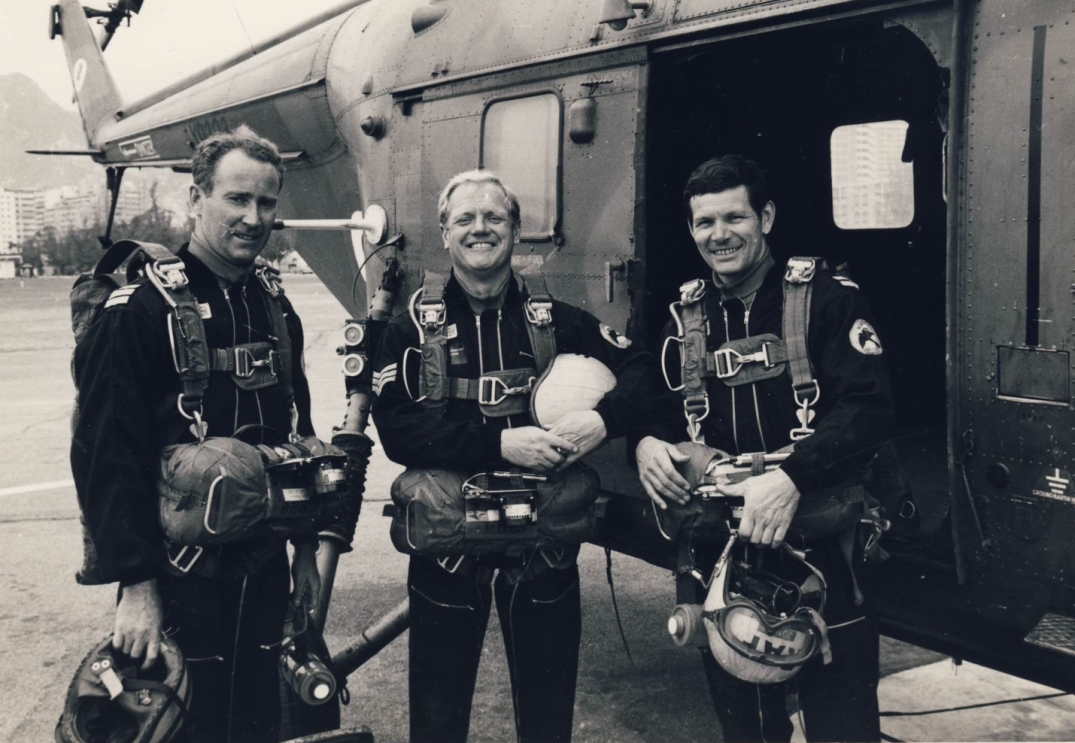






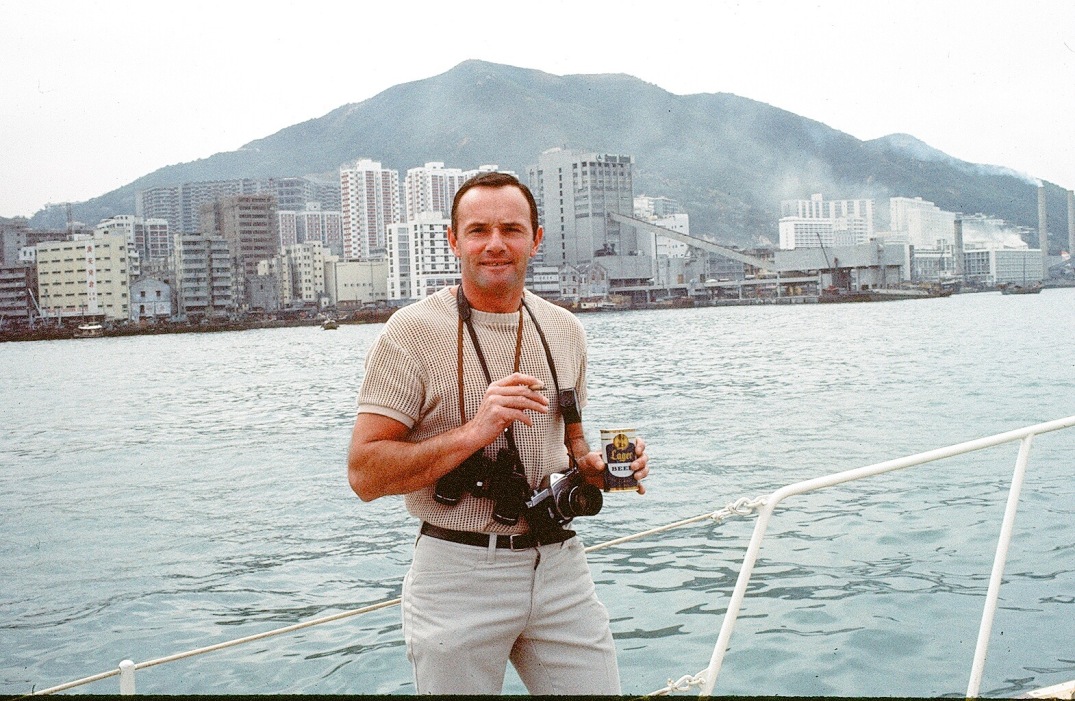


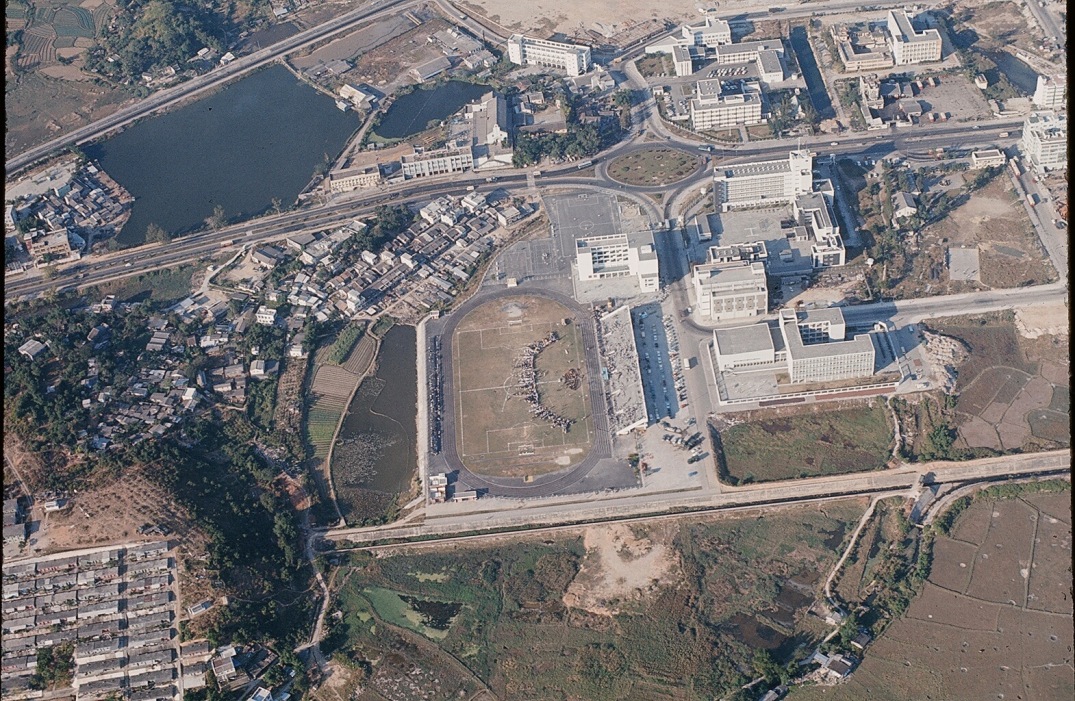
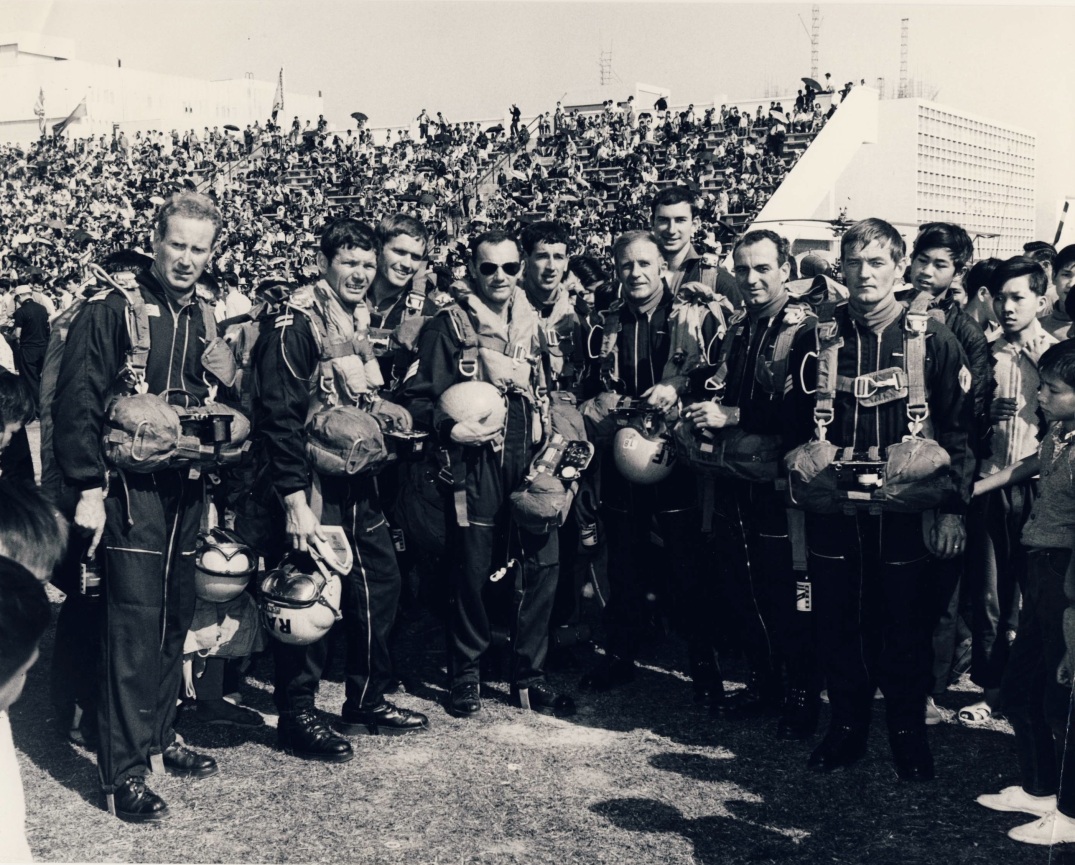
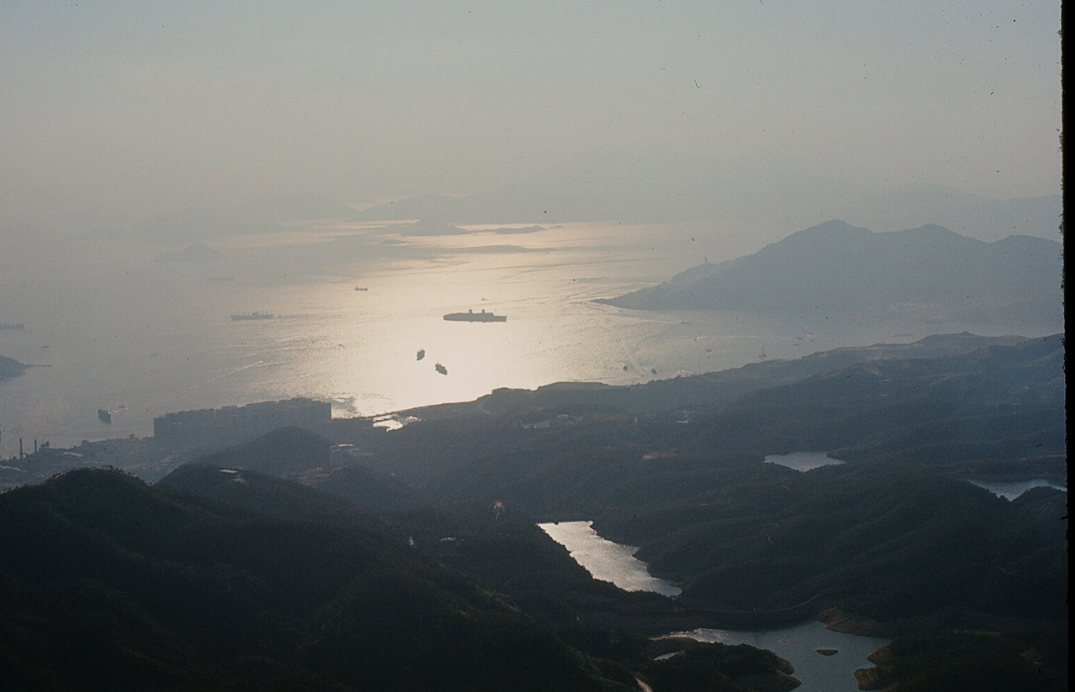
Thus ended Falcons ’71; a year which started with two months in Australia and finished with three weeks in Hong Kong, through continental Europe from Gothenberg to Gütersloh and on to the island of Cyprus. On a personal level, it entailed a tally of one hundred and seventy two jumps and provided me with a series of unforgettable experiences. On a professional level I considered it a unique privilege to have worked for two seasons with two great Falcon leaders and an outstanding team of friends and jumpers. I did not know it at the time, but this was to be my final year on the team. When we finally returned to Abingdon, the Boss called me into his office… .
RAFSPA 1972 – 1973
I walked out of the boss’s office a happy man. Peter Hearn had asked me to work full time at Weston to expand and upgrade the weekend Royal Air Force Sport Parachute Club into a full time Centre. This was a dream job indeed. We were now to run parachute courses for service personnel under the auspices of the new Adventure Training Scheme, with the following remit:
“The aim of Adventure Training courses is to provide an opportunity for personnel to participate in adventurous activities which are challenging and involve controlled exposure to risk. The training is designed to develop many of the personal attributes and skills vital to operational capability, including leadership, teamwork, physical fitness, self-reliance, physical and moral courage, initiative and determination. This aim will be met through the medium of training in basic static line and freefall parachuting. ”
All the basic facilities were of course already in place; now the Club was to be expanded into a full time Association. The directing staff were Flight Lieutenant Peter Burgess, OC Weston, as Association Secretary, and Flying Officer Peter Smout as officer in charge. Snowy Robertson and myself were to provide the experience and freefall expertise. I handed over the Falcons to Andy Sweeney, put on my tracksuit, and headed for Weston…
(Brevet pp.137- 138)


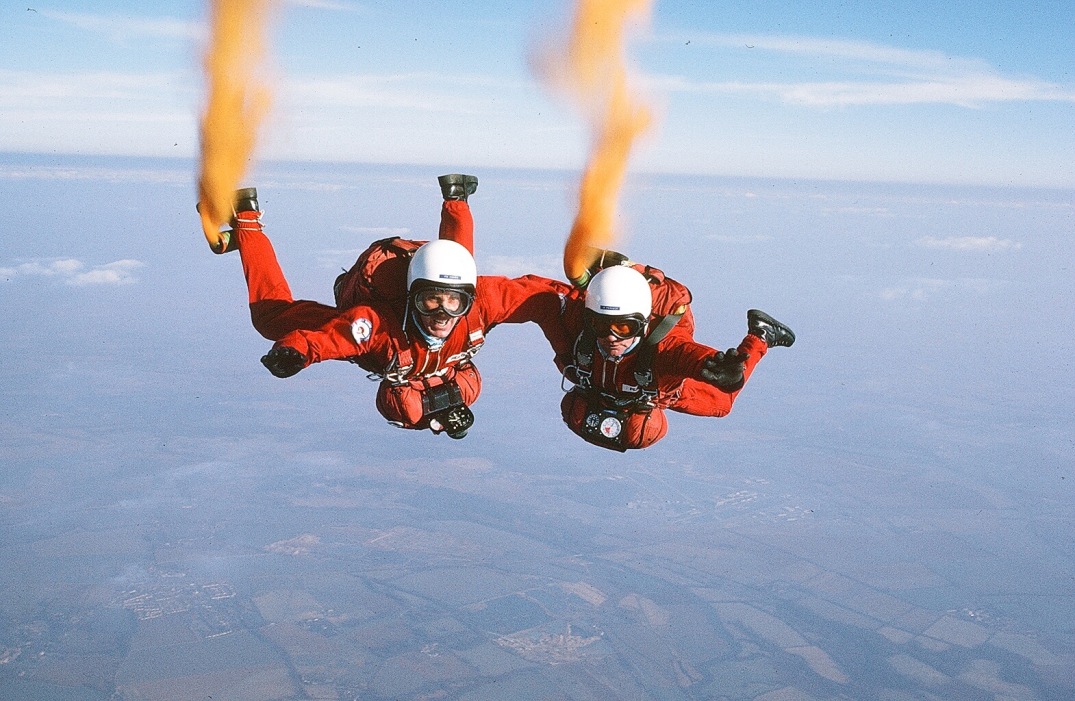

Intermission – Berlin 1973 – 1974
Return to RAFSPA
The Cessna came back on line in September and the following month we were visited by the Air Officer Commanding in Chief Strike Command, Air Chief Marshal Sir Denis Smallwood. The Weston cloud base was about fifteen hundred feet solid; nonetheless the AOC expressed a wish to fly the 206 on a live sortie. Squadron Leader Fred Marshall (OC Advanced Training Squadron) volunteered to accompany me in the back. We threw a WDI below the cloud, then climbed and ran in toward the bottom end of the DZ at three thousand feet above the white shining carpet. I could see nothing at all. The AOC glanced back over his shoulder seeking enlightenment and, not wishing to disappoint him, I gave him a confident five right correction. A momentary gap revealed we were right above the turkey farm, very deep, so I gave the cut, hopped out and pulled high on five seconds. I came out of the cloud, fortuitously set up for the cross in front of the control tower, and touched down right on target. Fred Marshal followed close behind, and we were both standing in front of the tower as the AOC landed and taxied over. We naturally congratulated him on his excellent run in and everyone was happy, OC PTS Brian White in particular.
(Brevet pp.171-172)
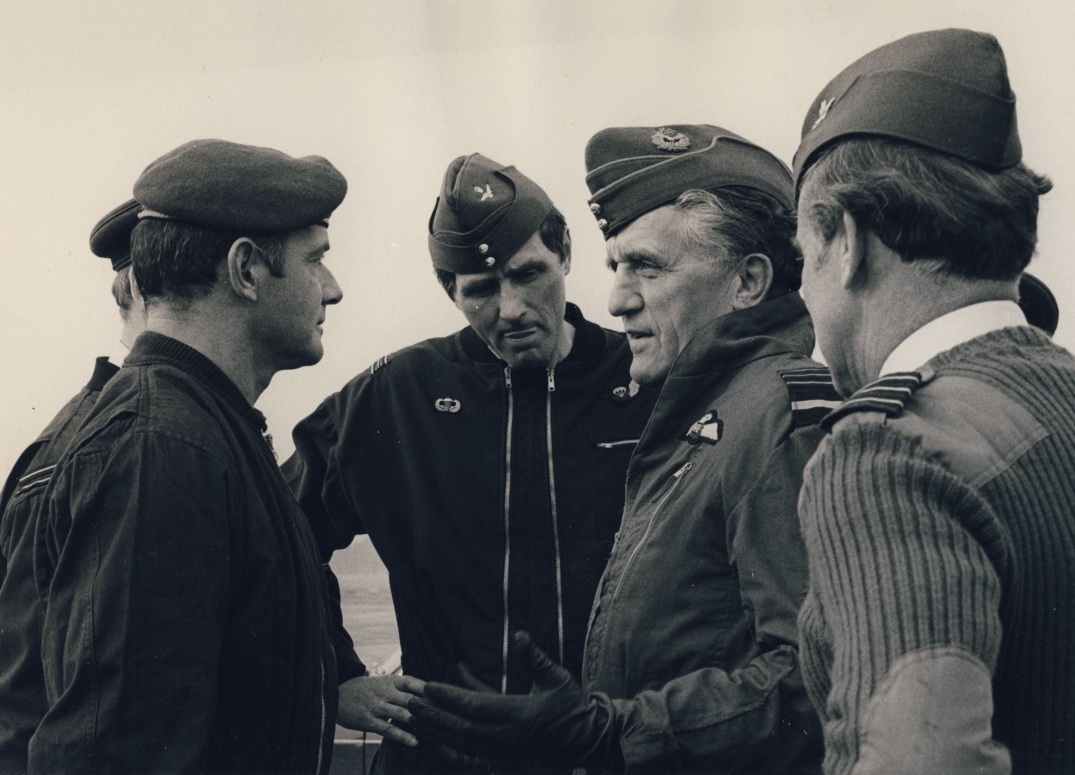
-
Back to the day job

- Briefing German Airborne troops at the Pitts Road Depot, Aldershot 1976.
-
Retired from the Royal Air Force and No. 1 PTS August 1977
Watch this space….



Brilliant
LikeLiked by 1 person
Thanks Ron, we were all part of it, a great bunch of blokes. All the best
Doug
LikeLiked by 1 person
Brought back some good memories. Skippy
LikeLiked by 1 person
Hi Doug Great memories of PTS and of friends no longer with us.
LikeLiked by 1 person
Nice to see my dad f/s Terry Allen in some of the shots thanks.
LikeLike